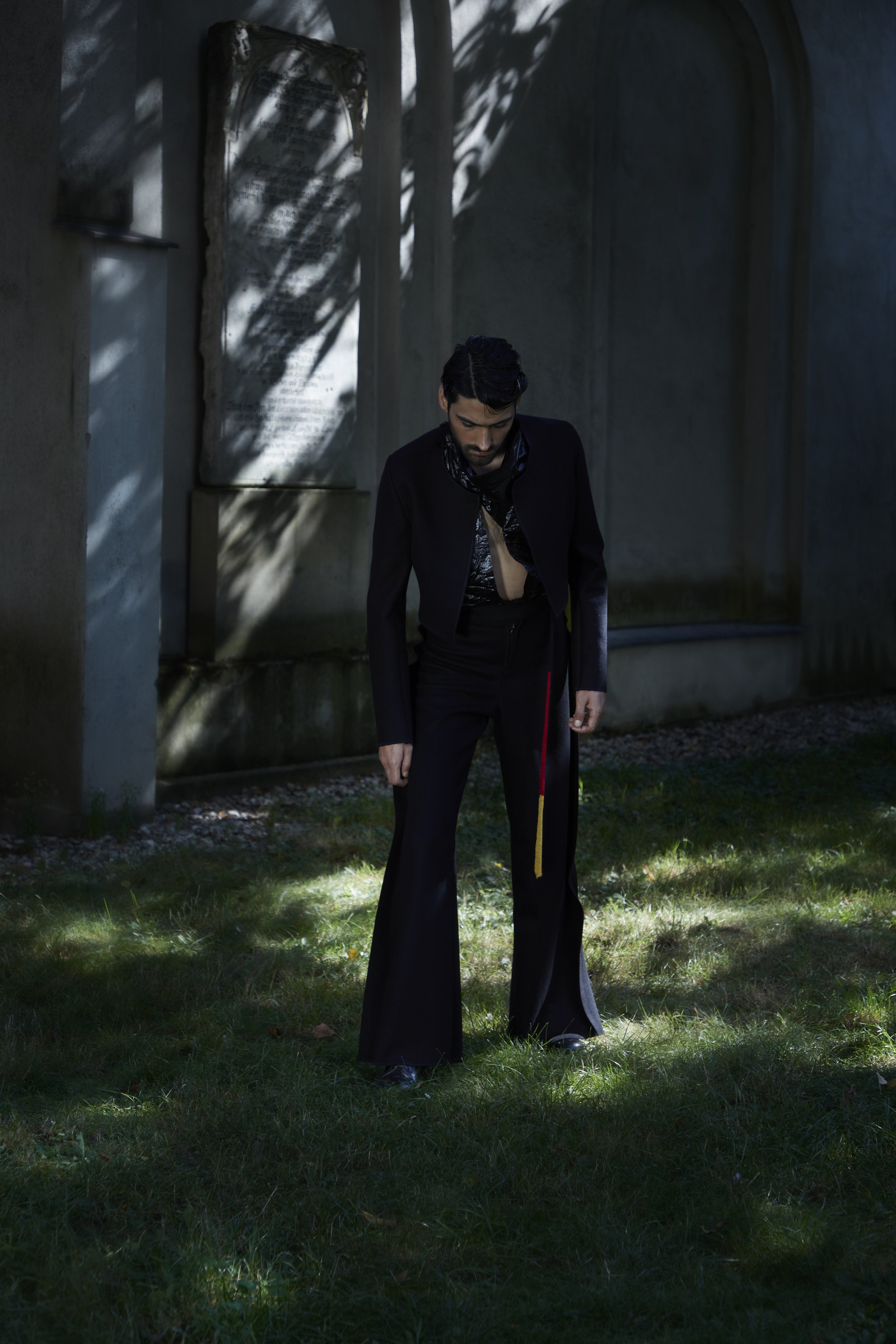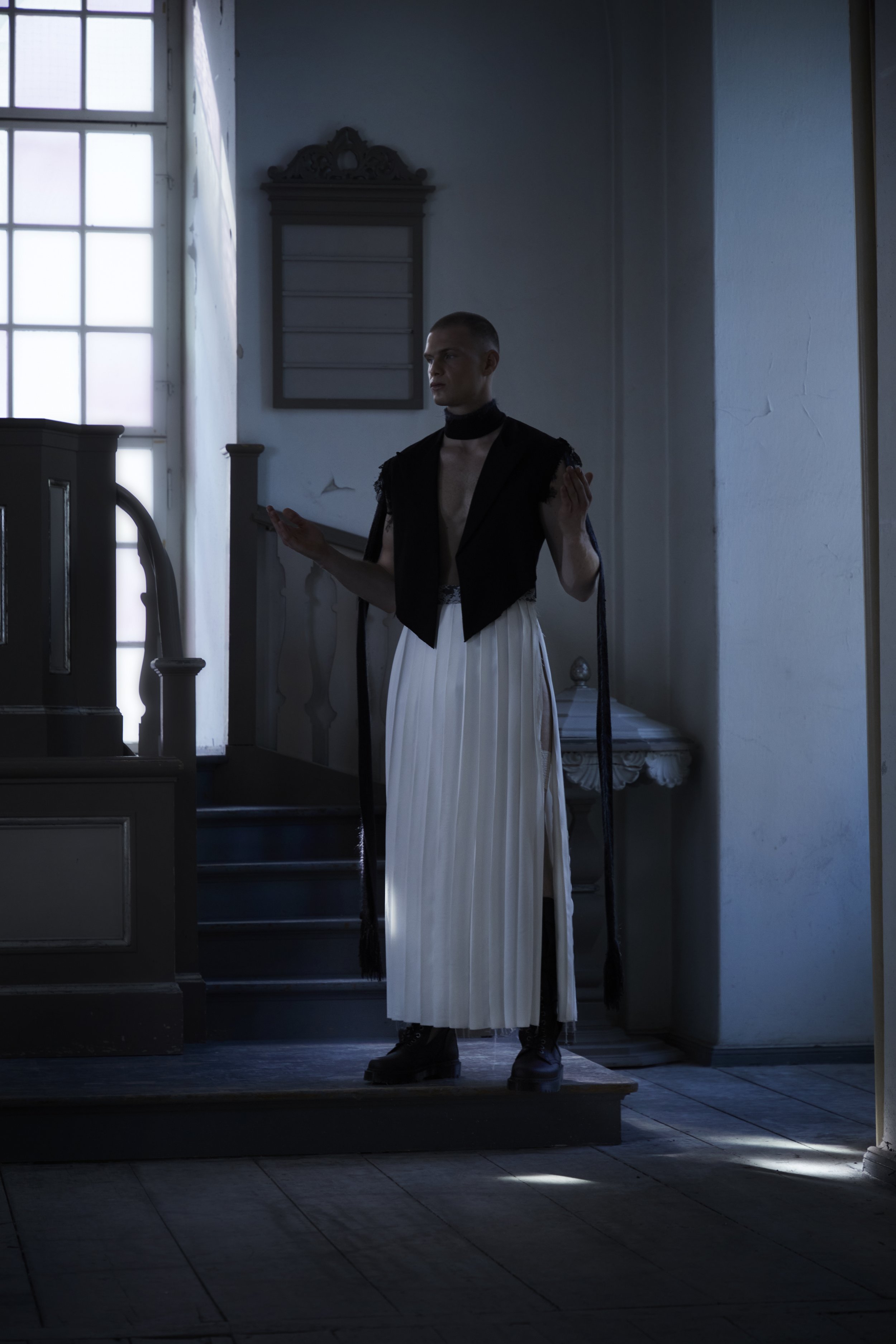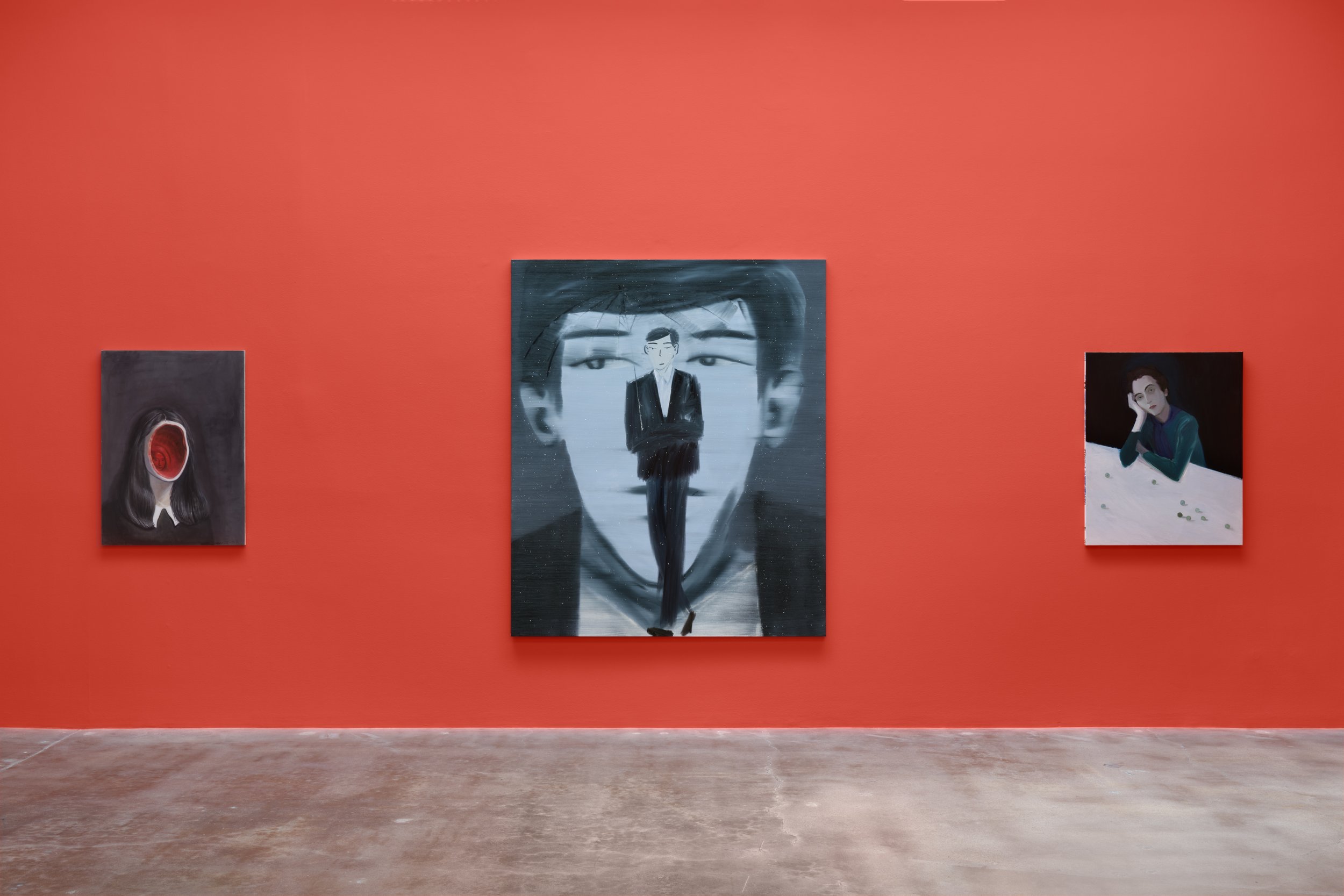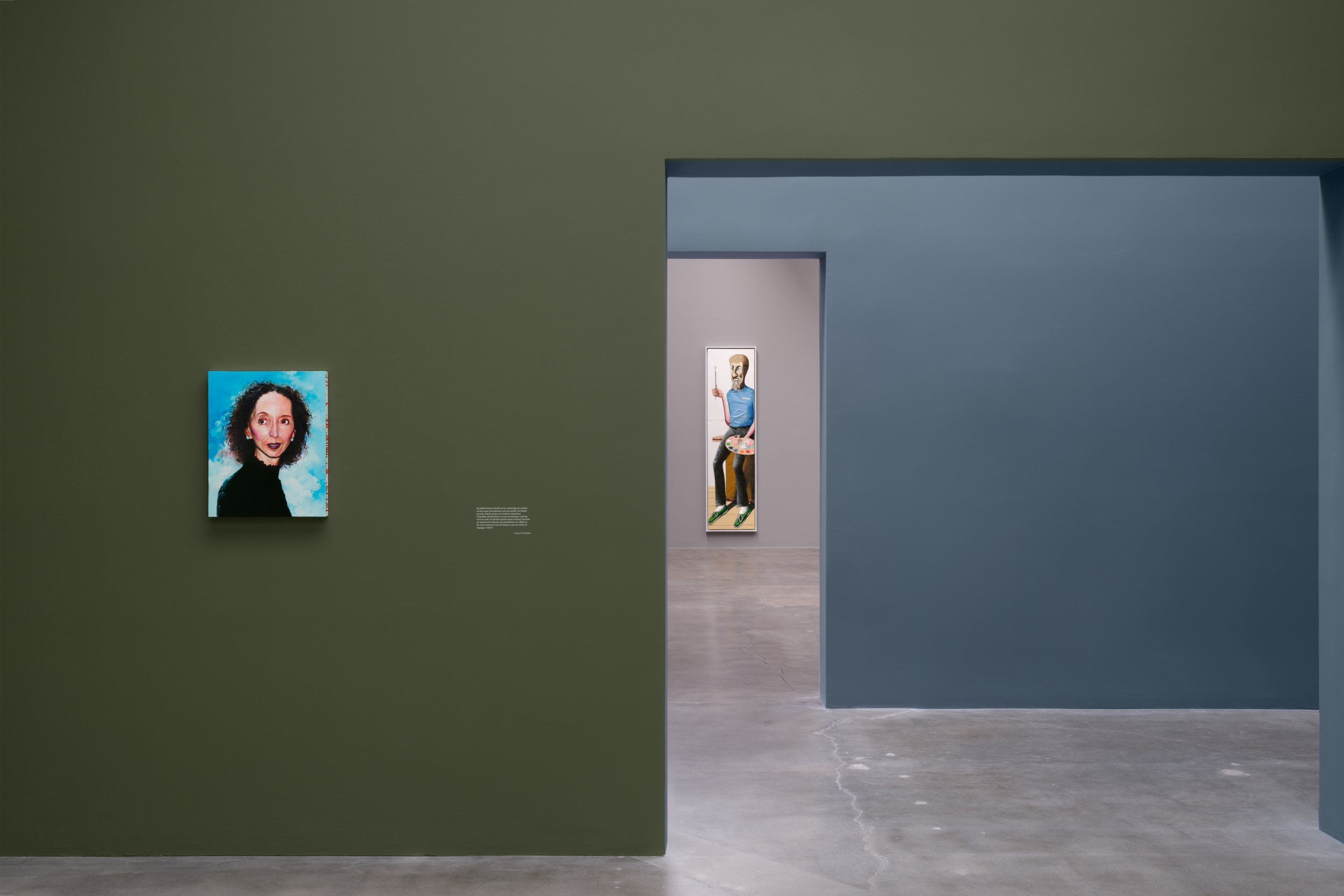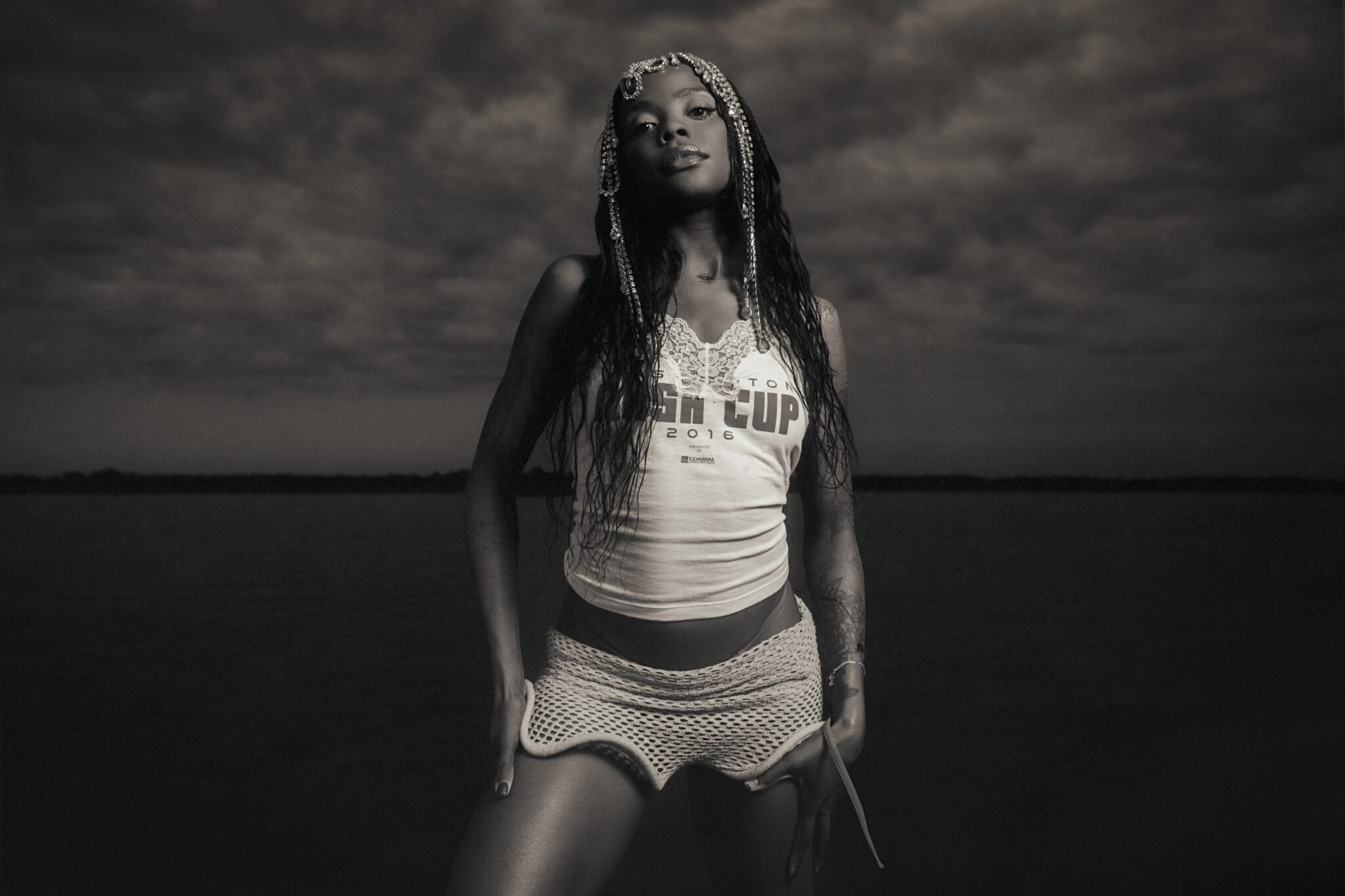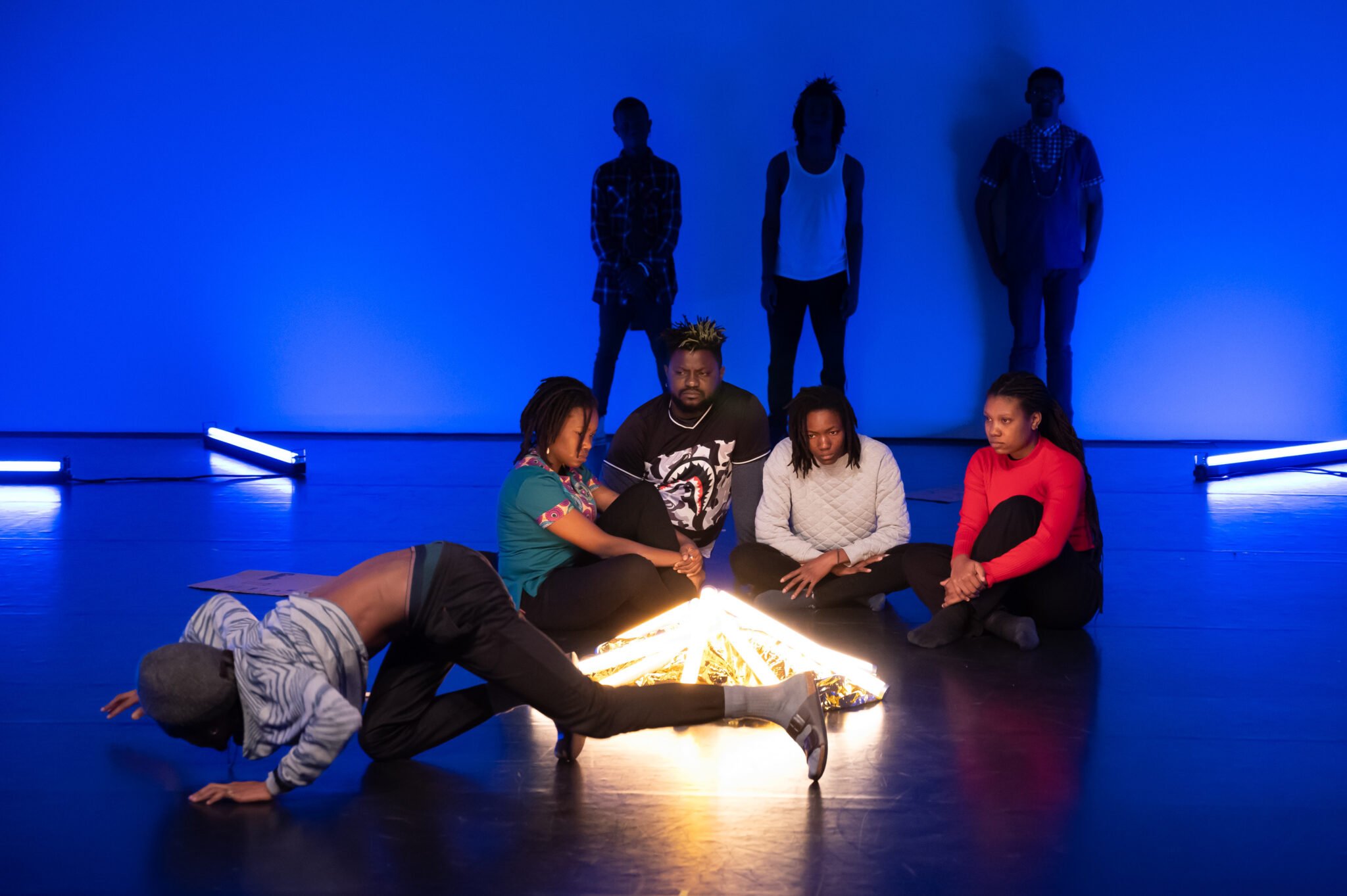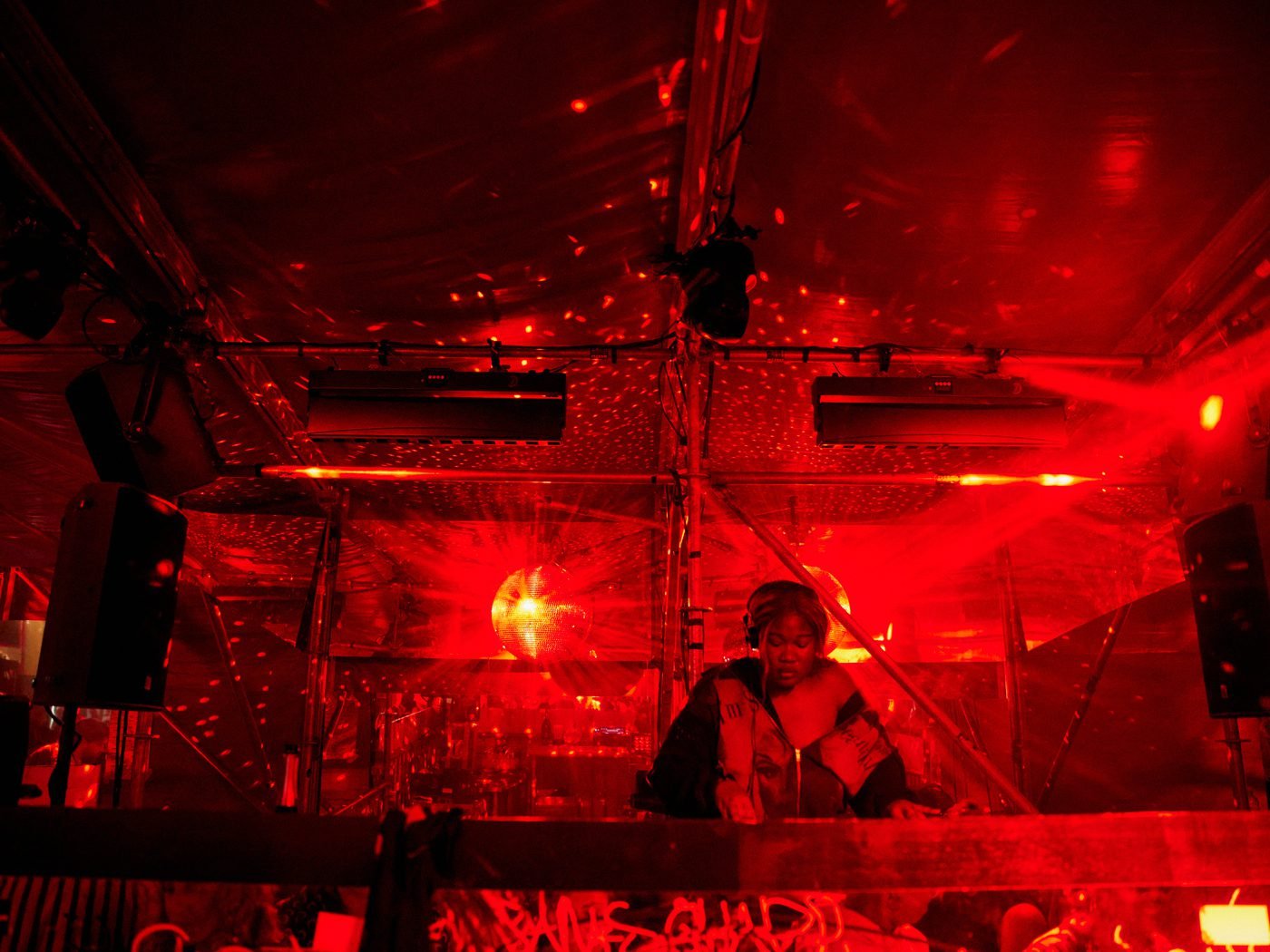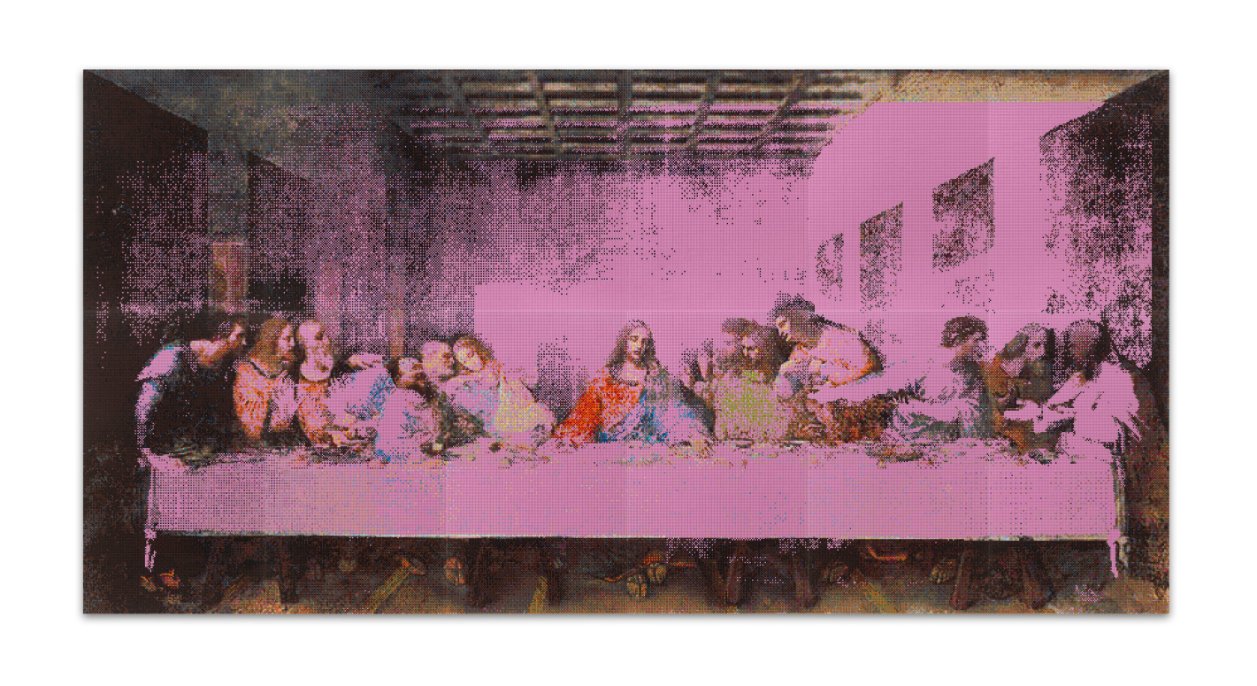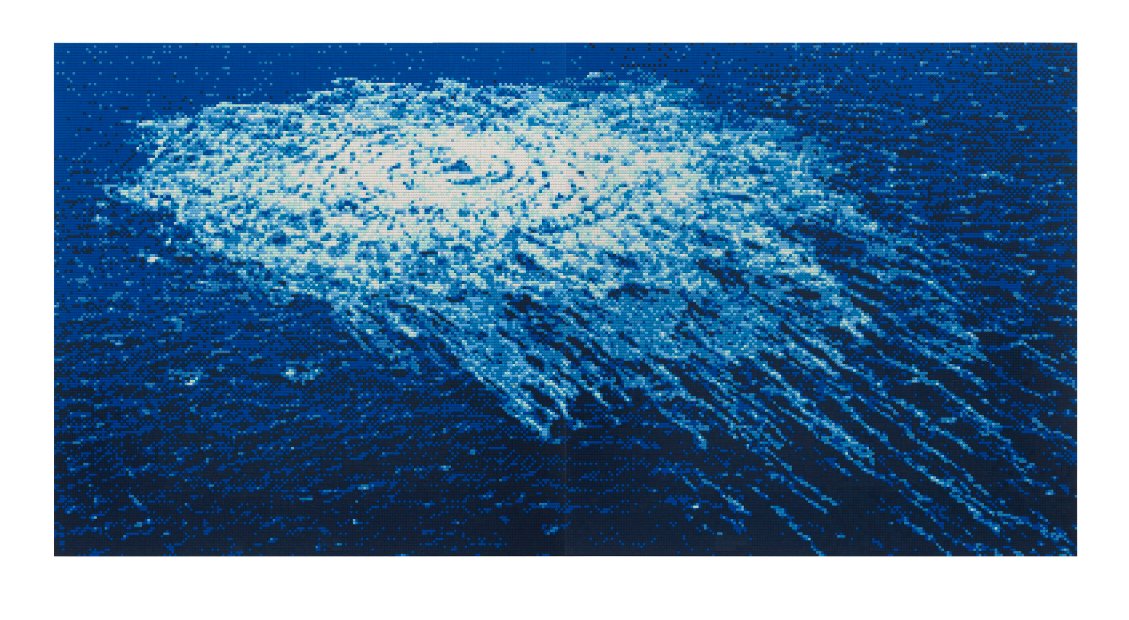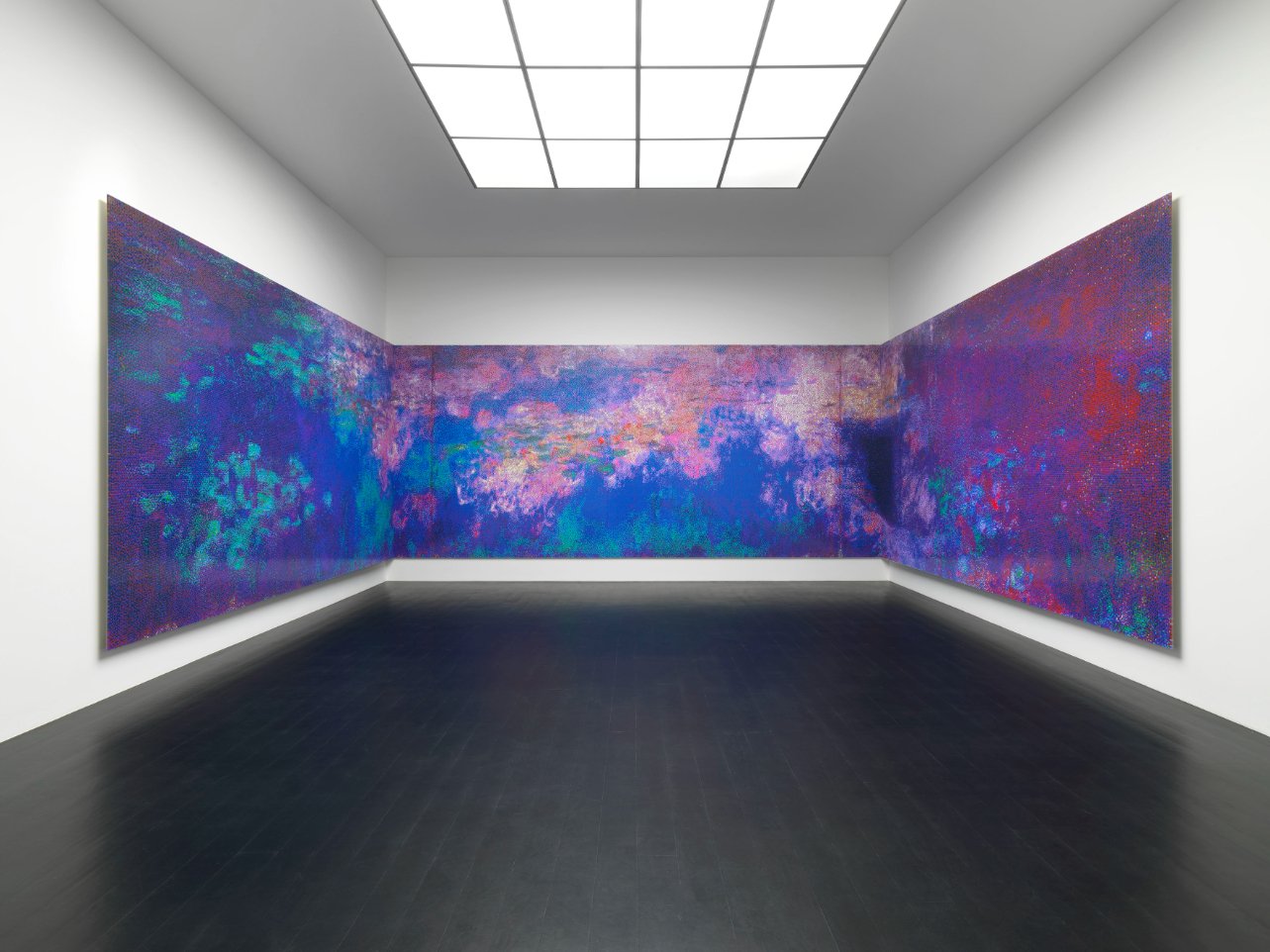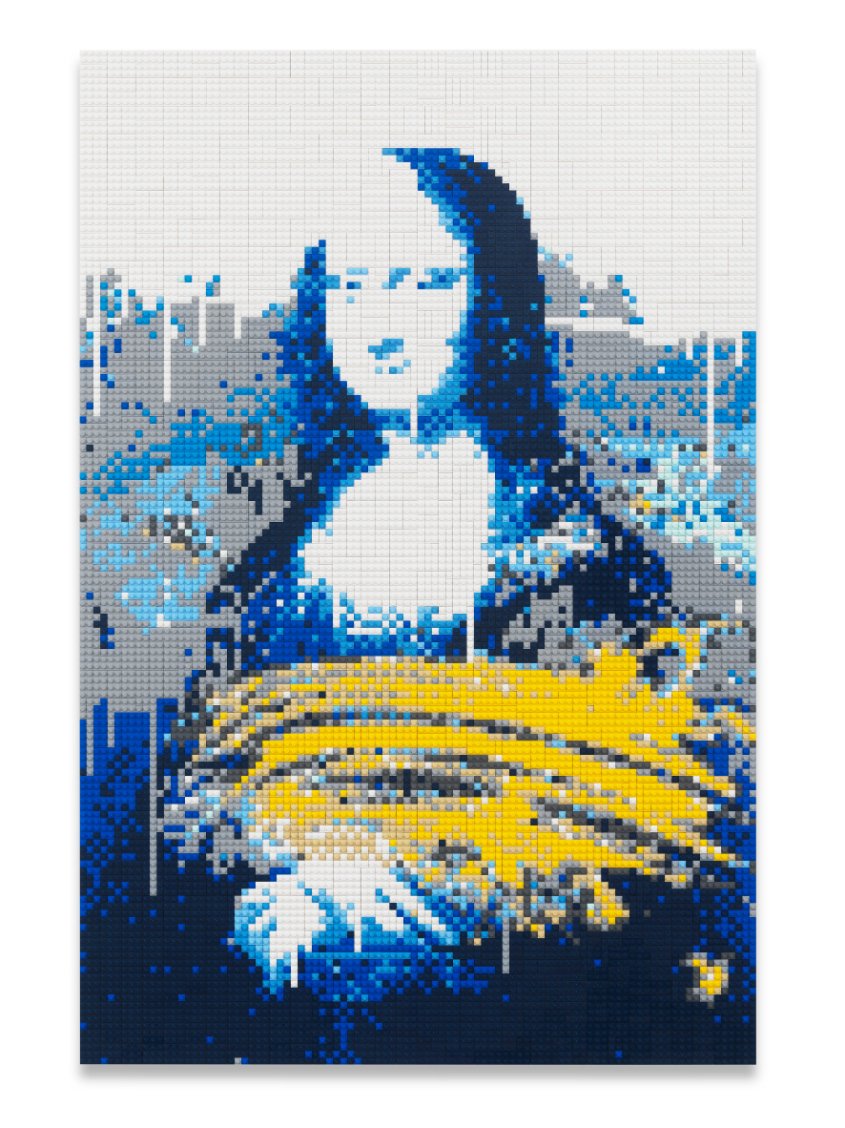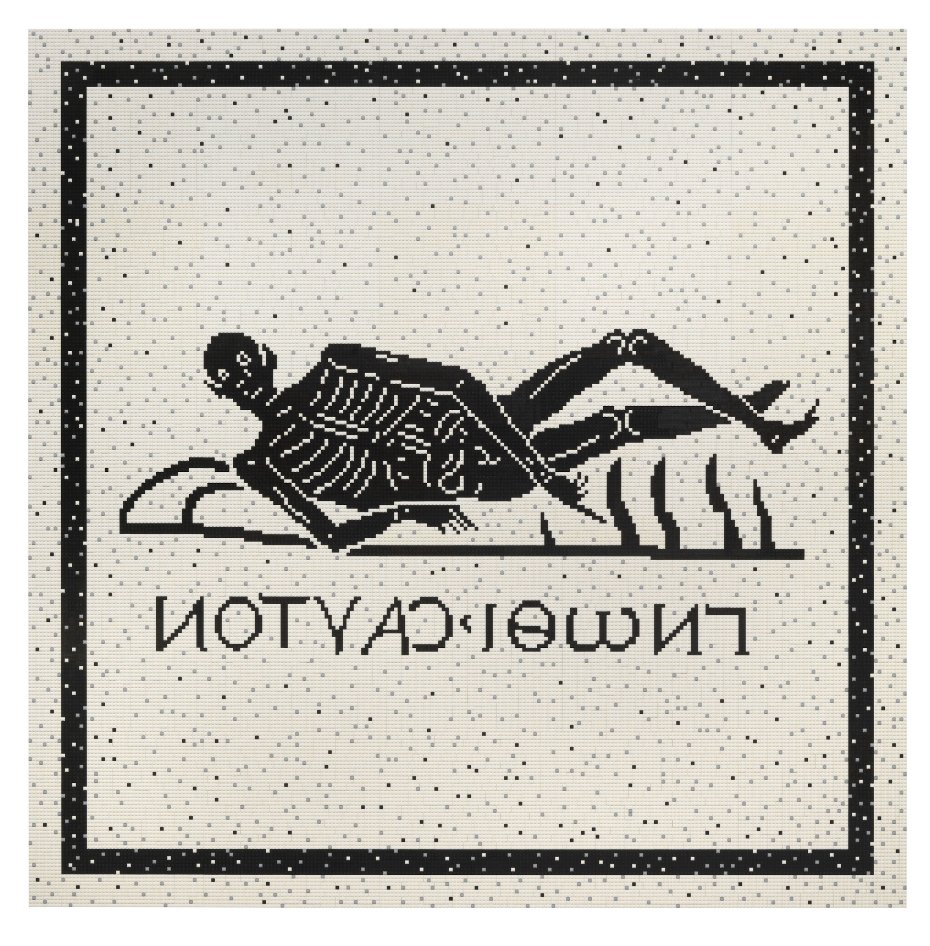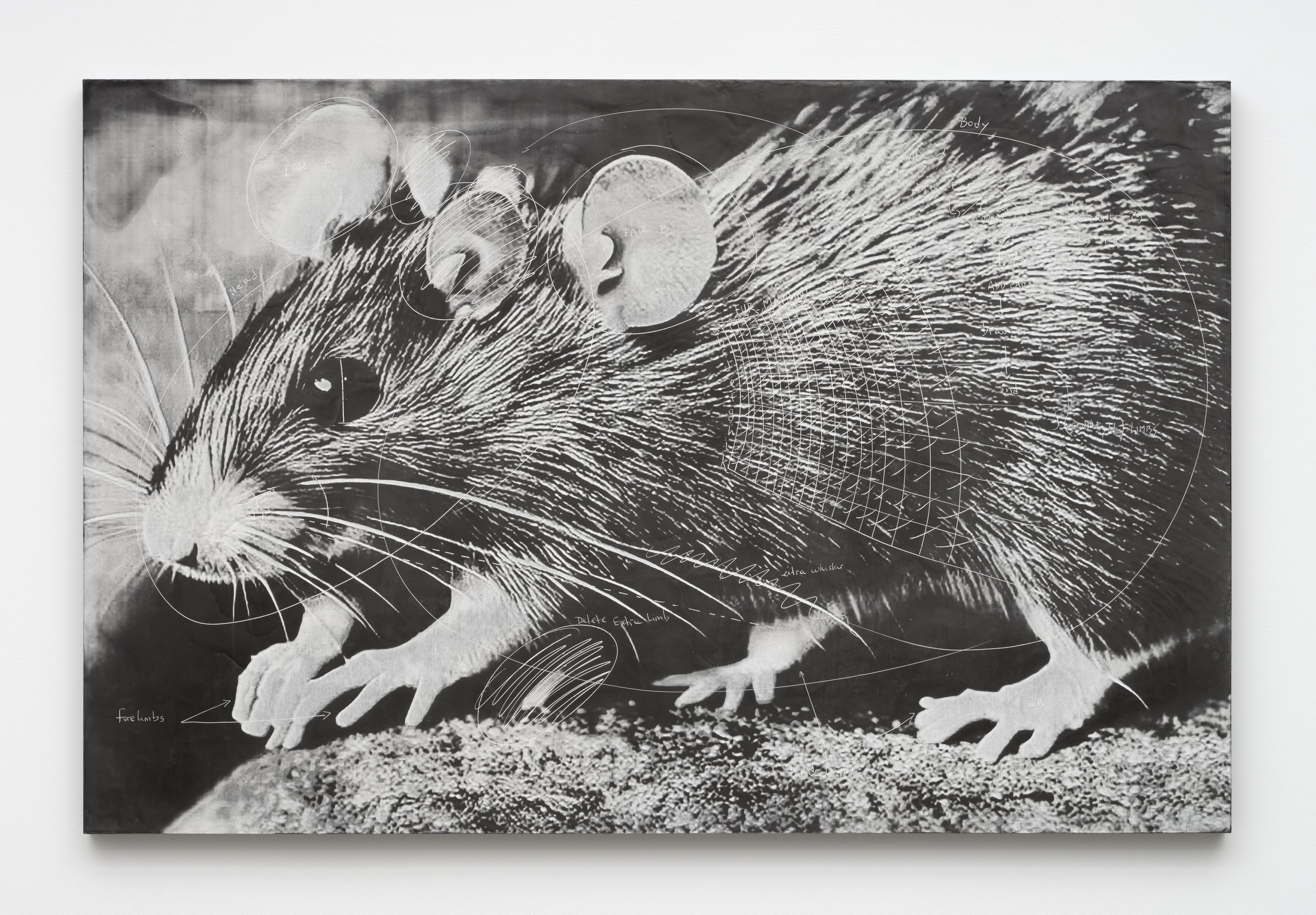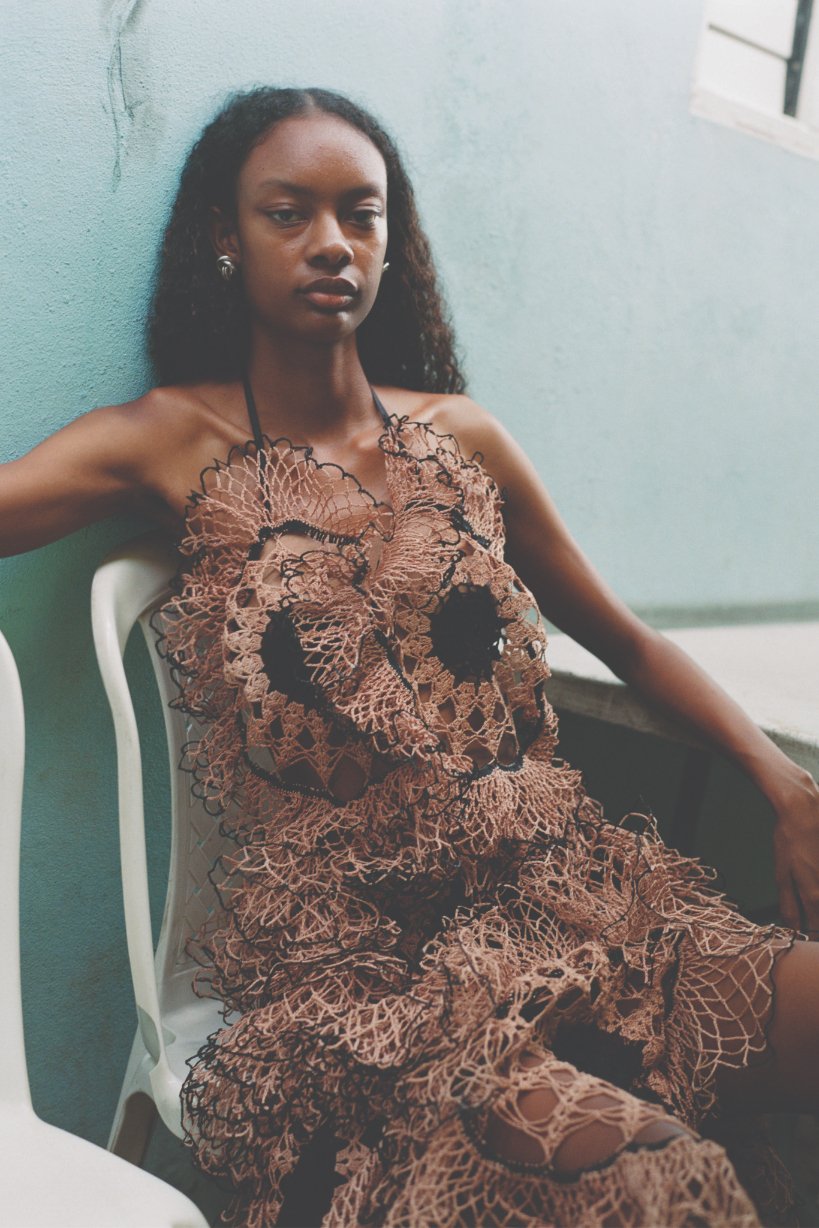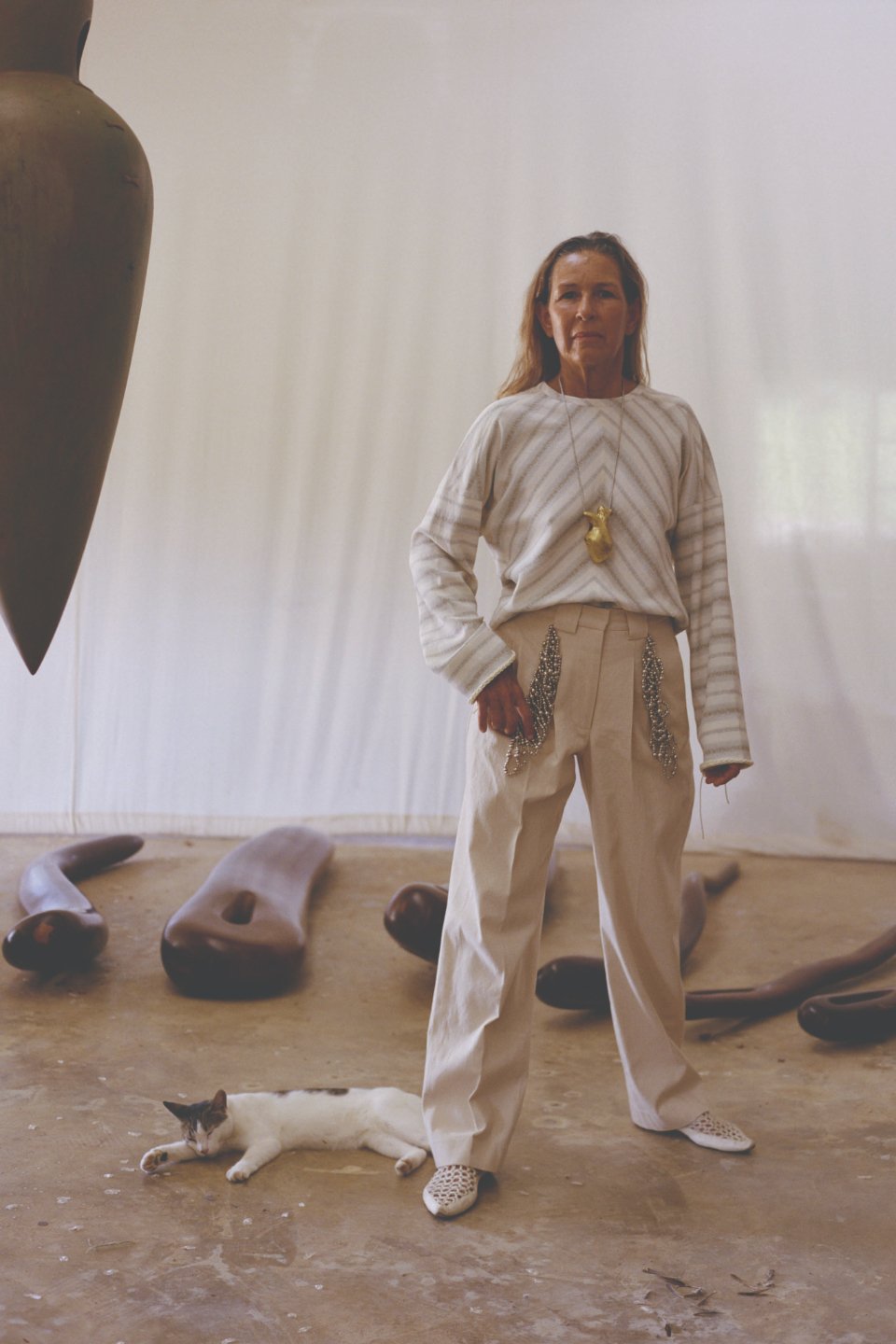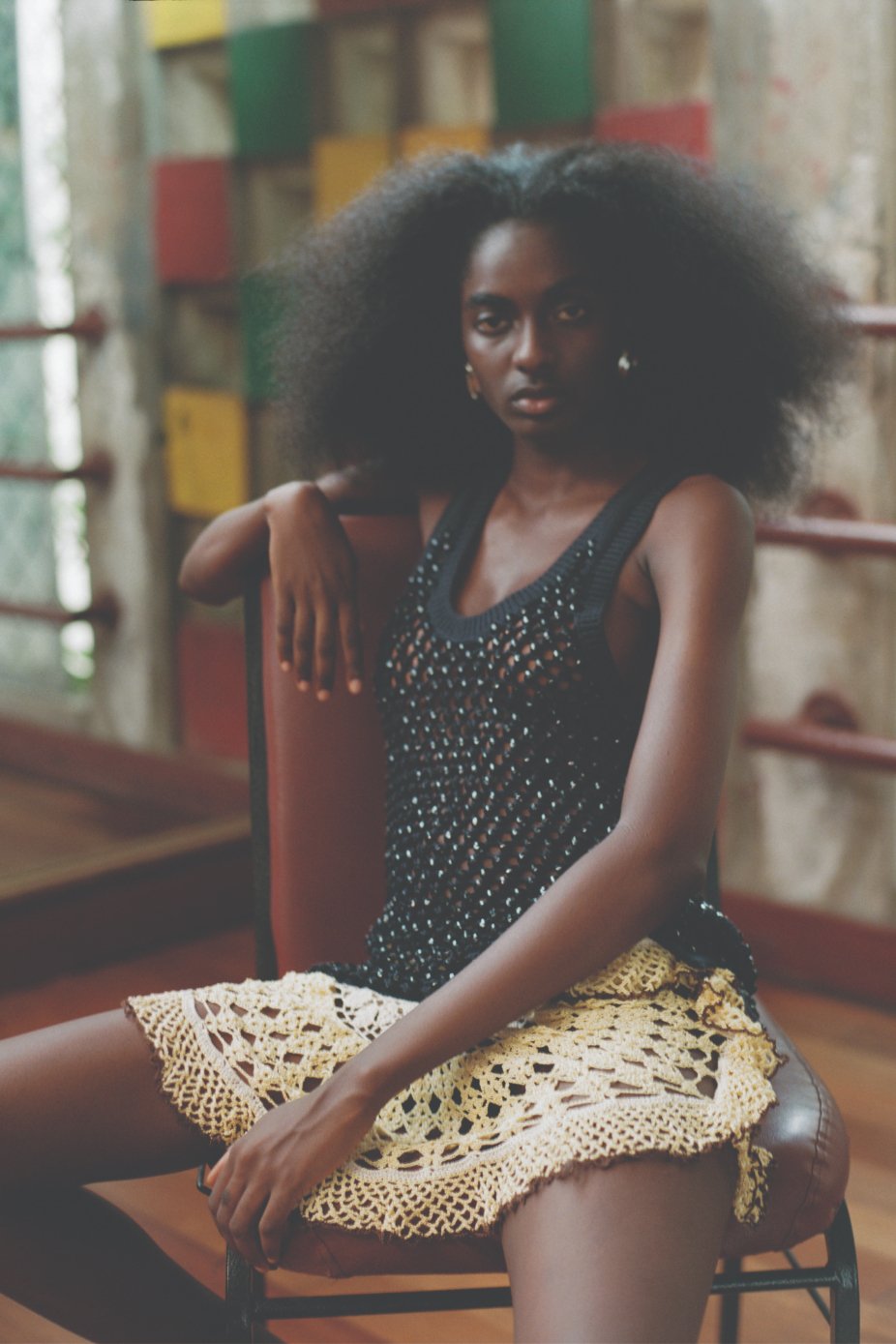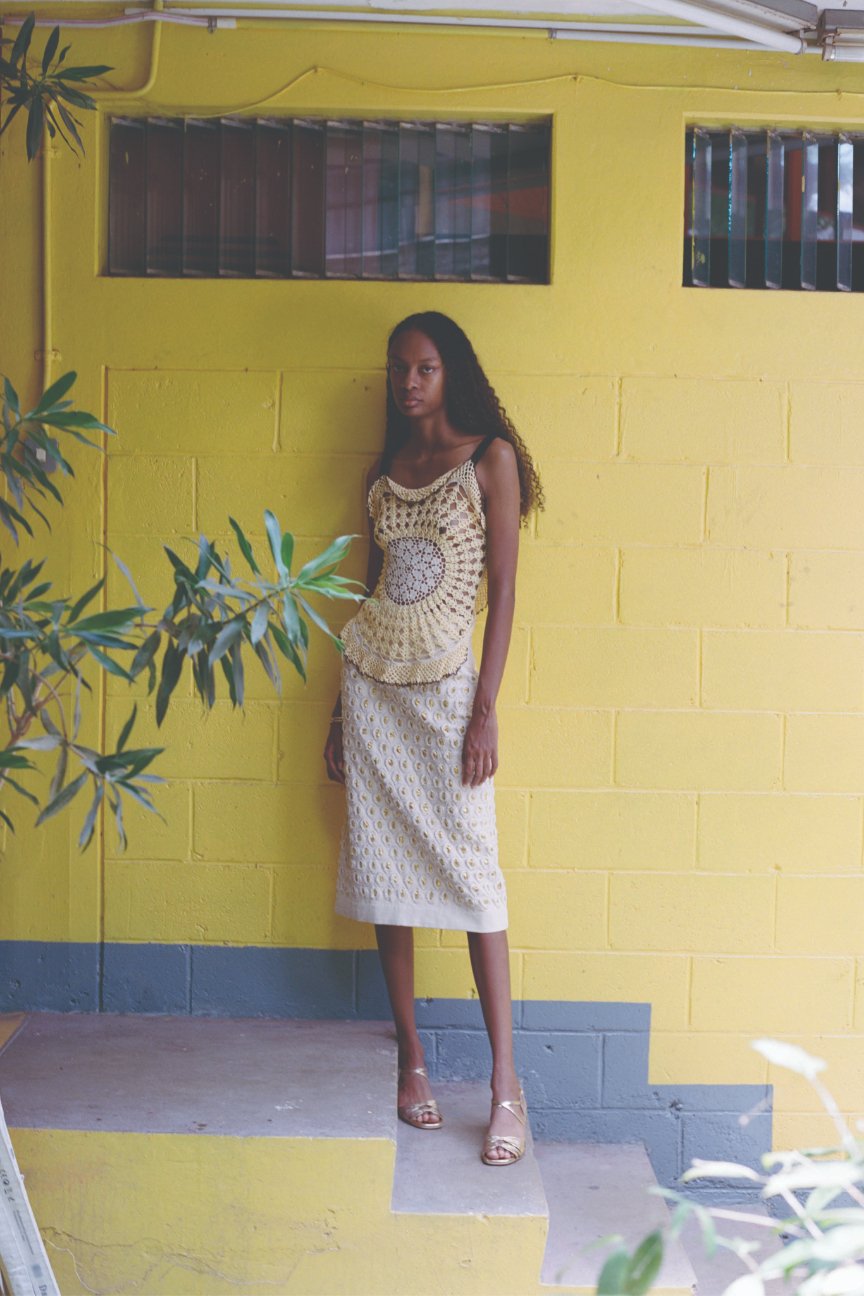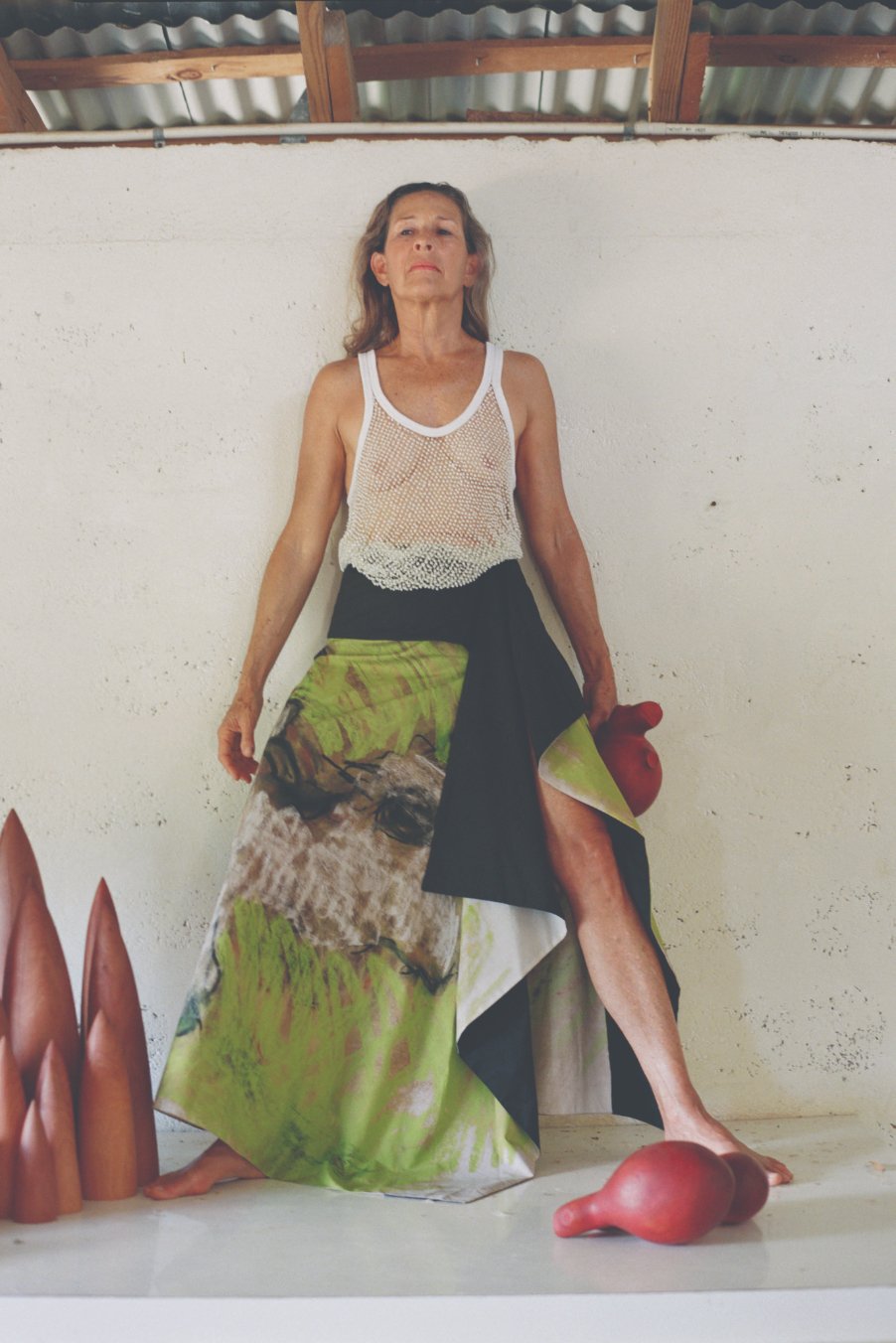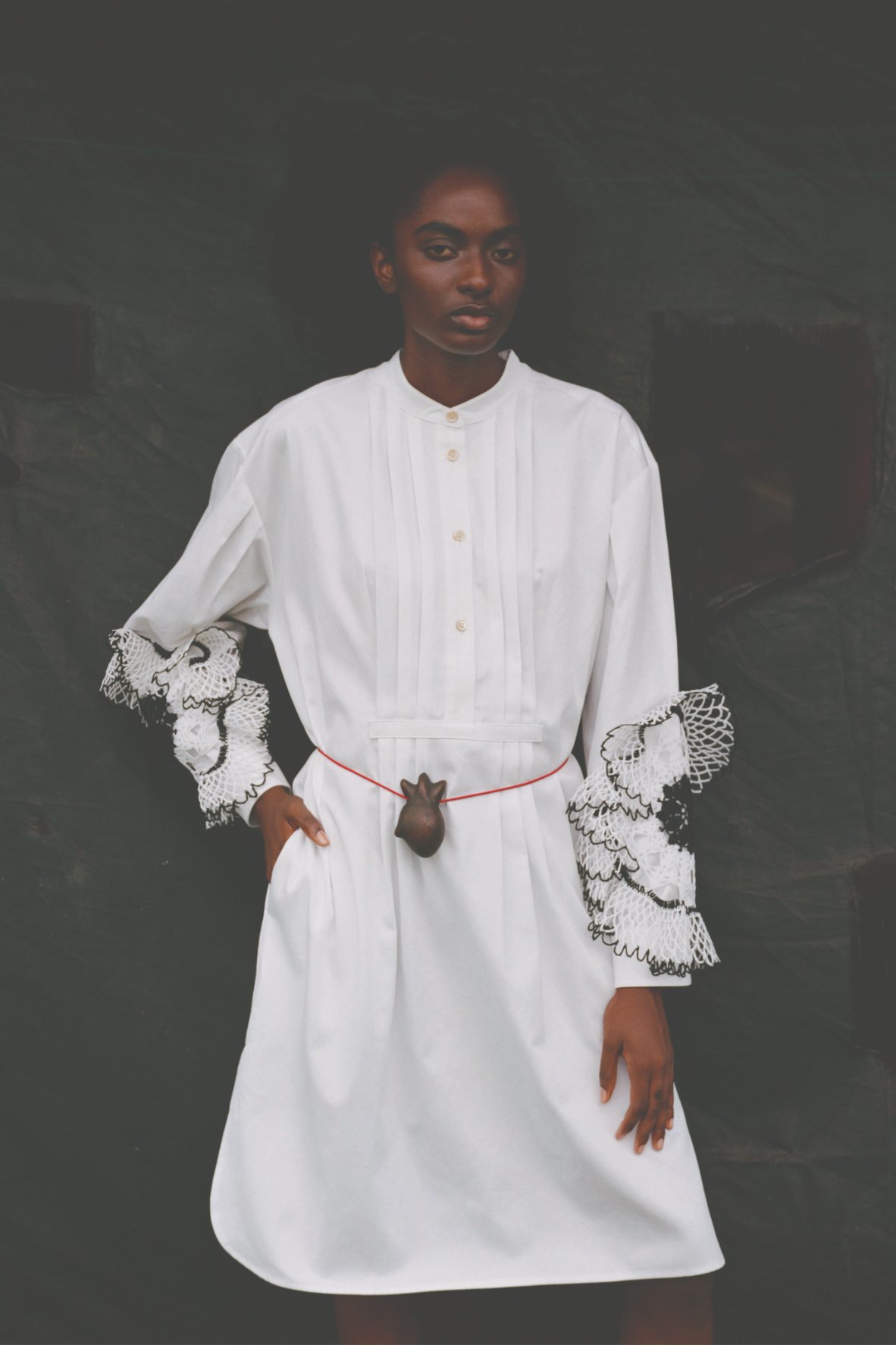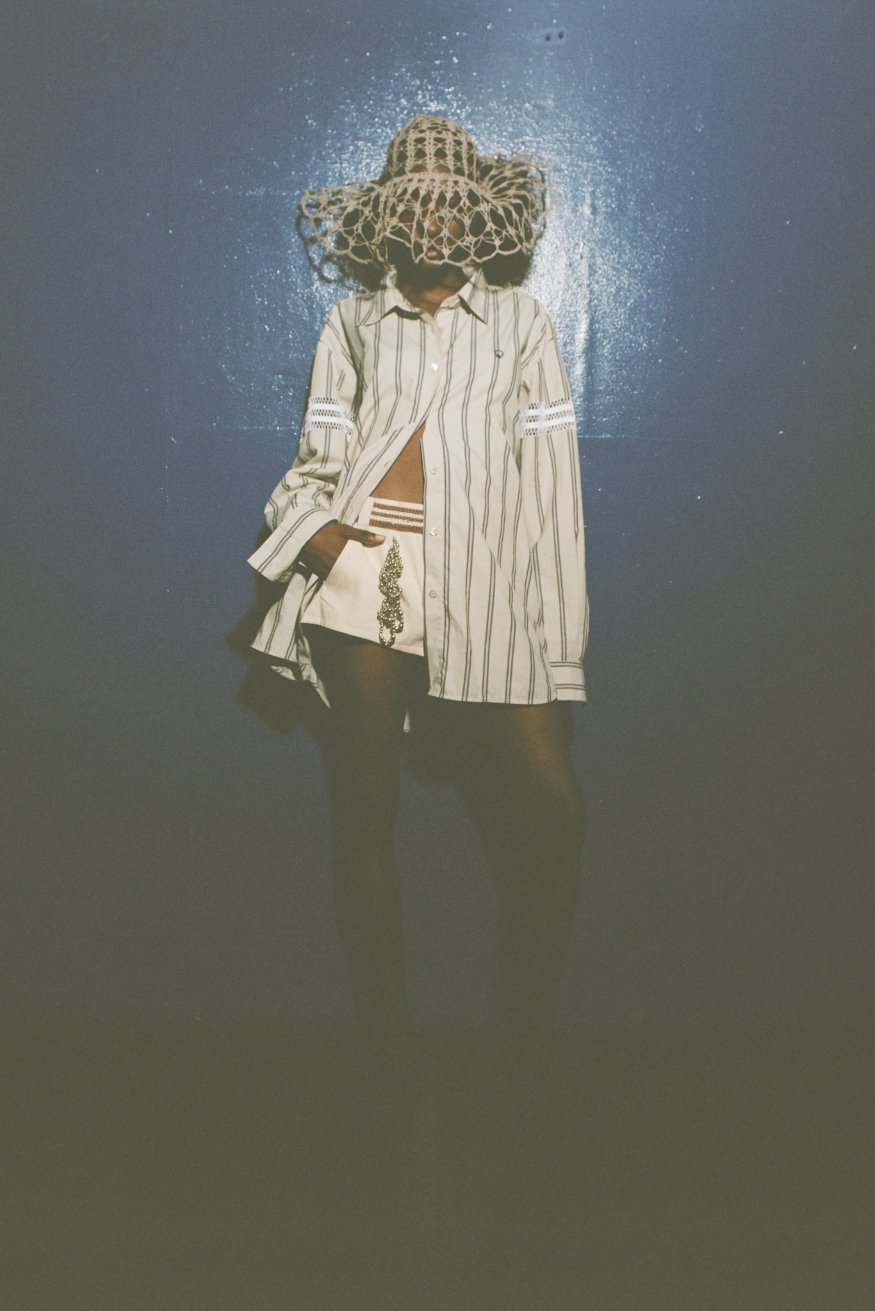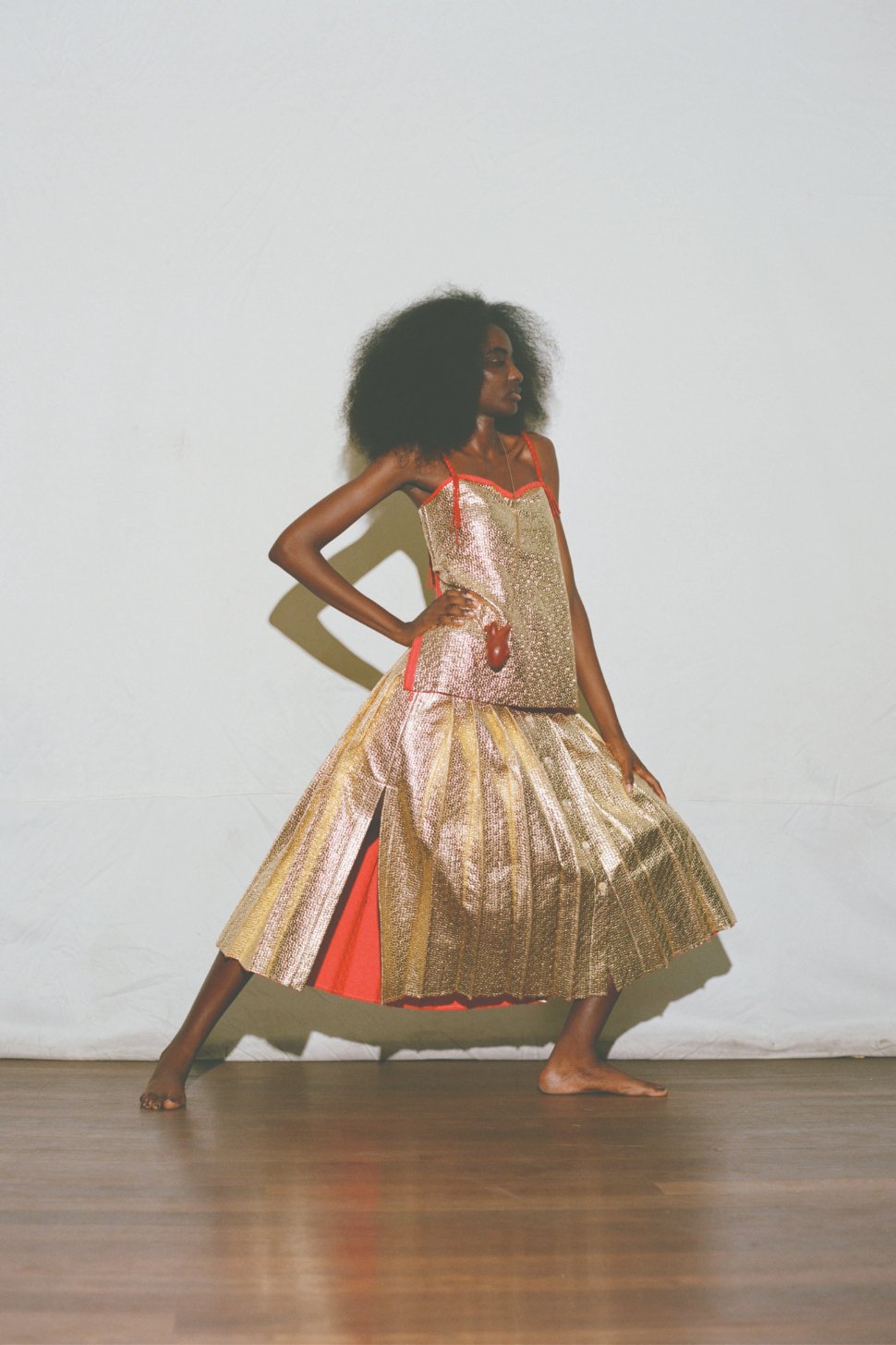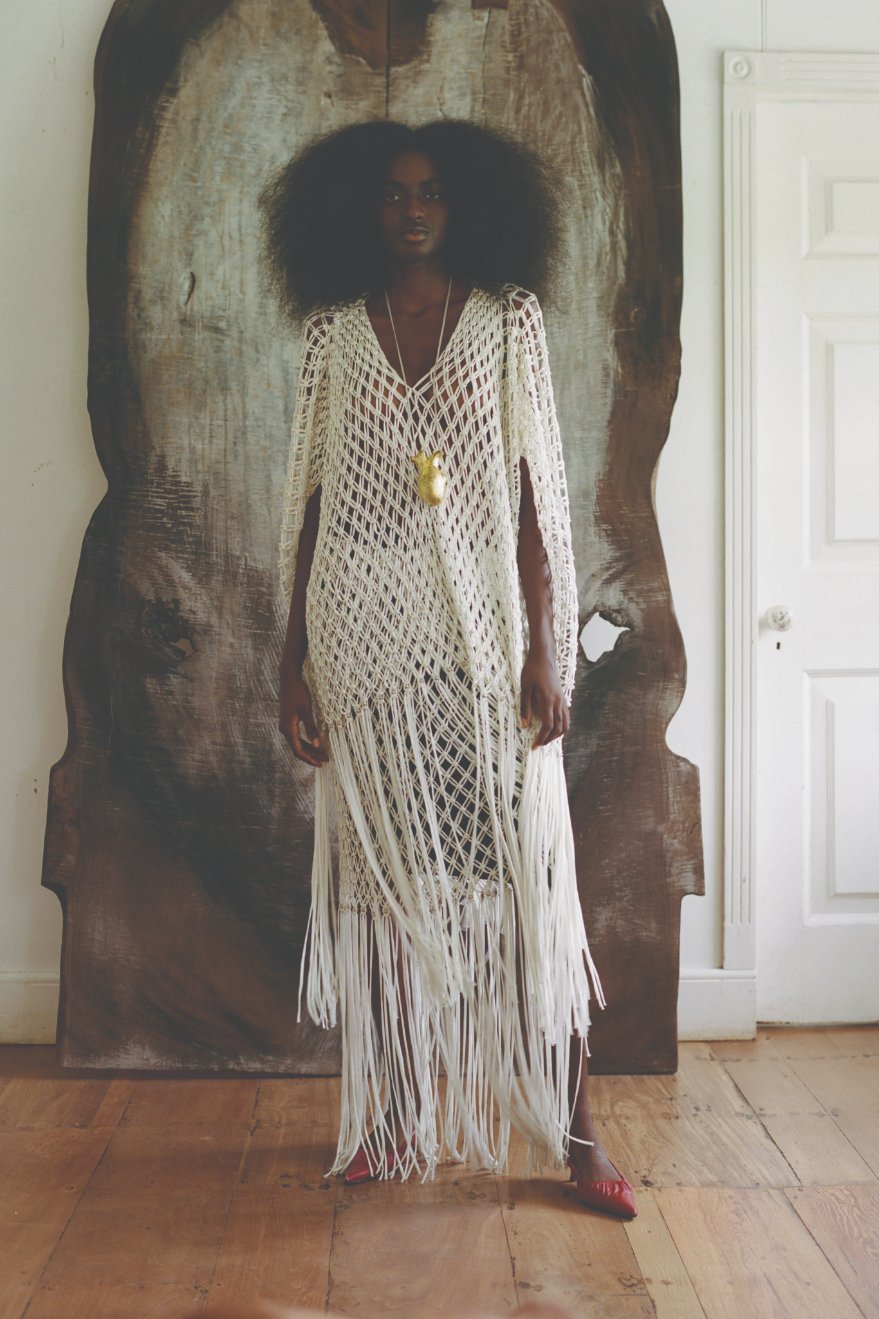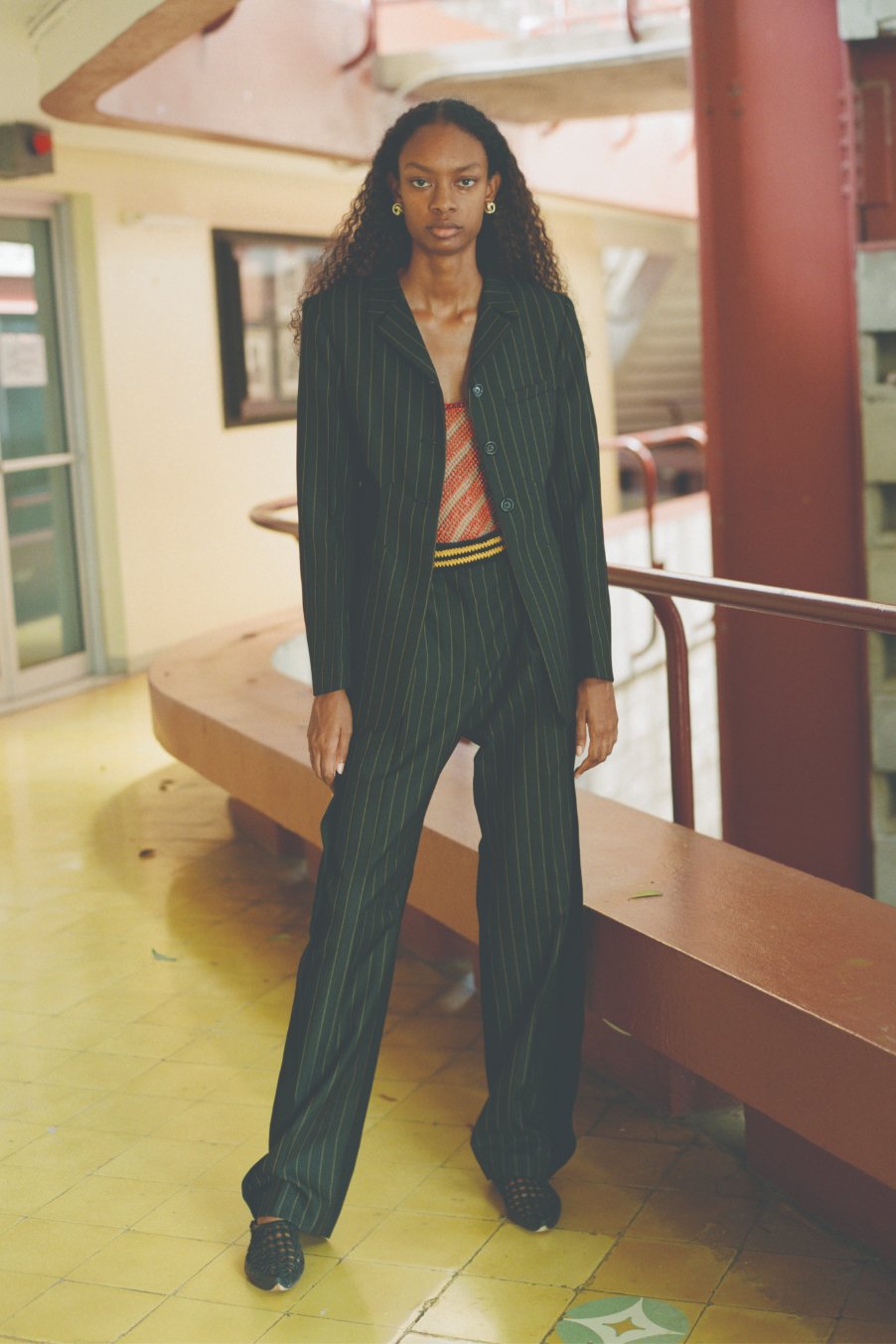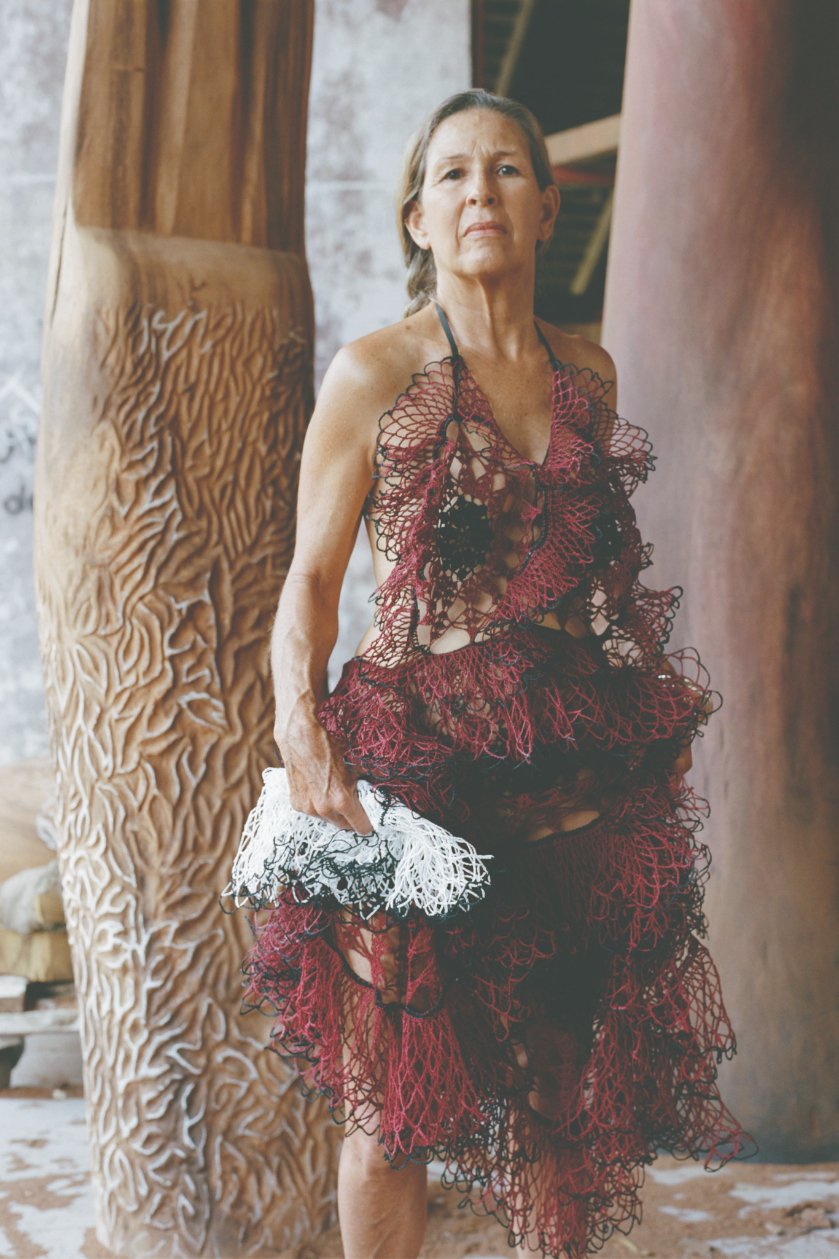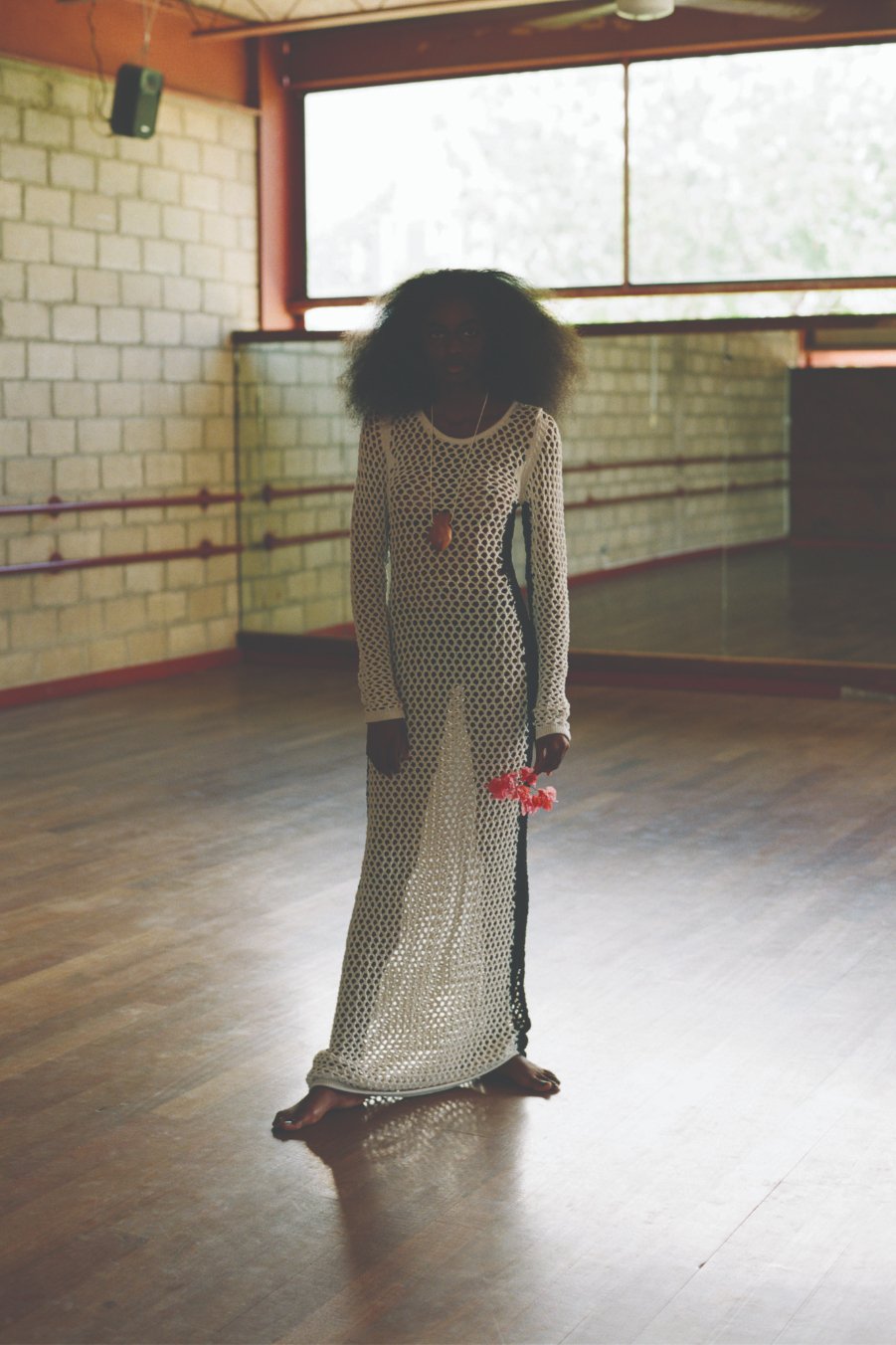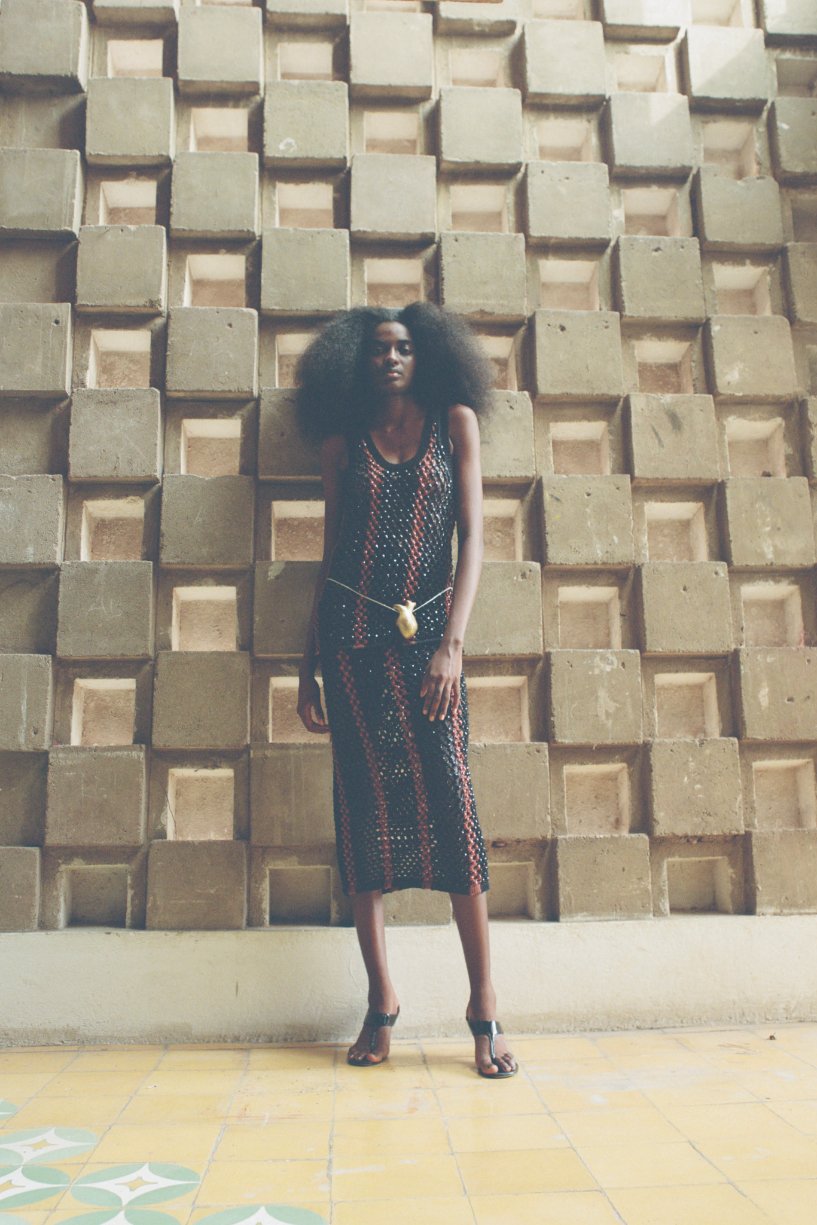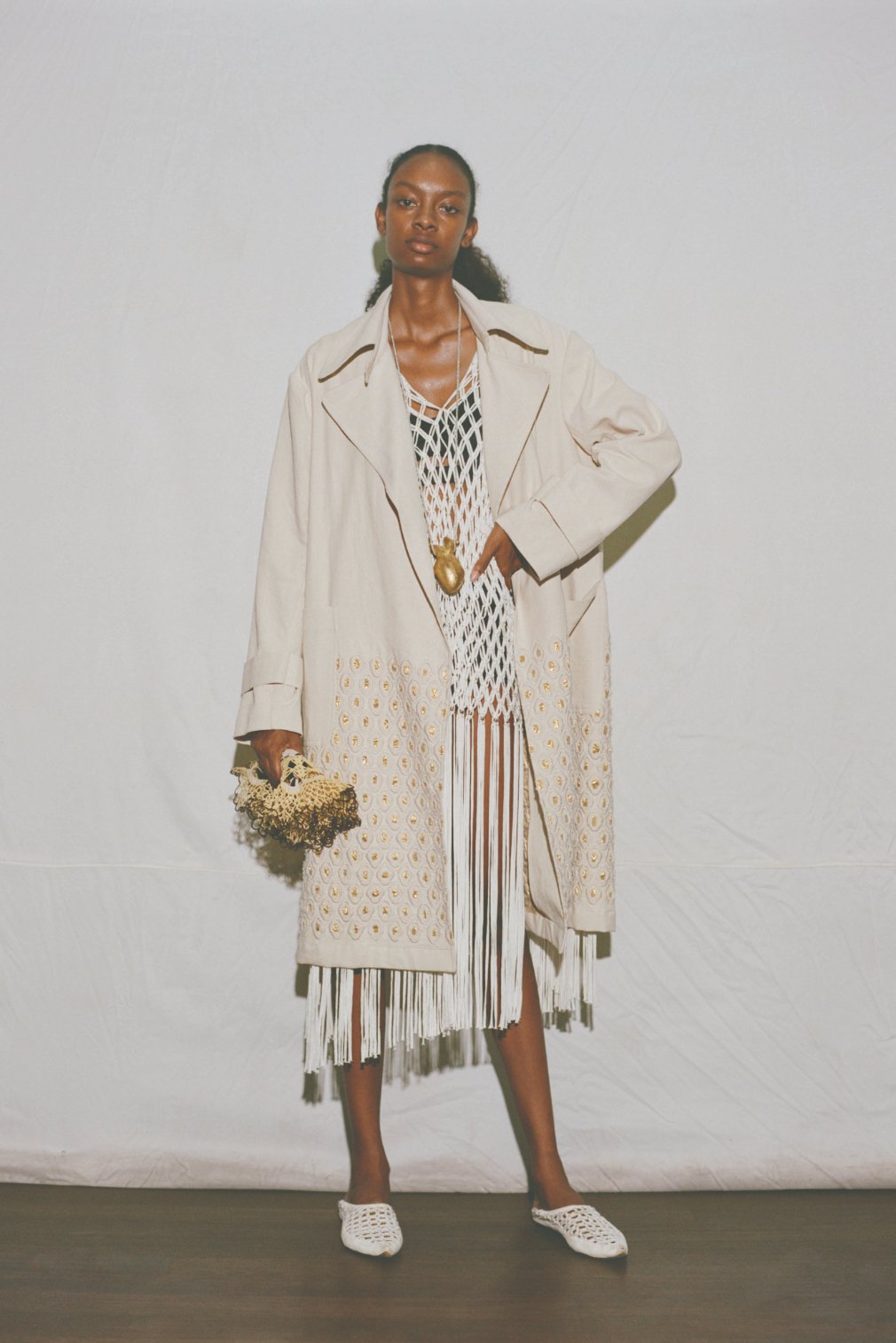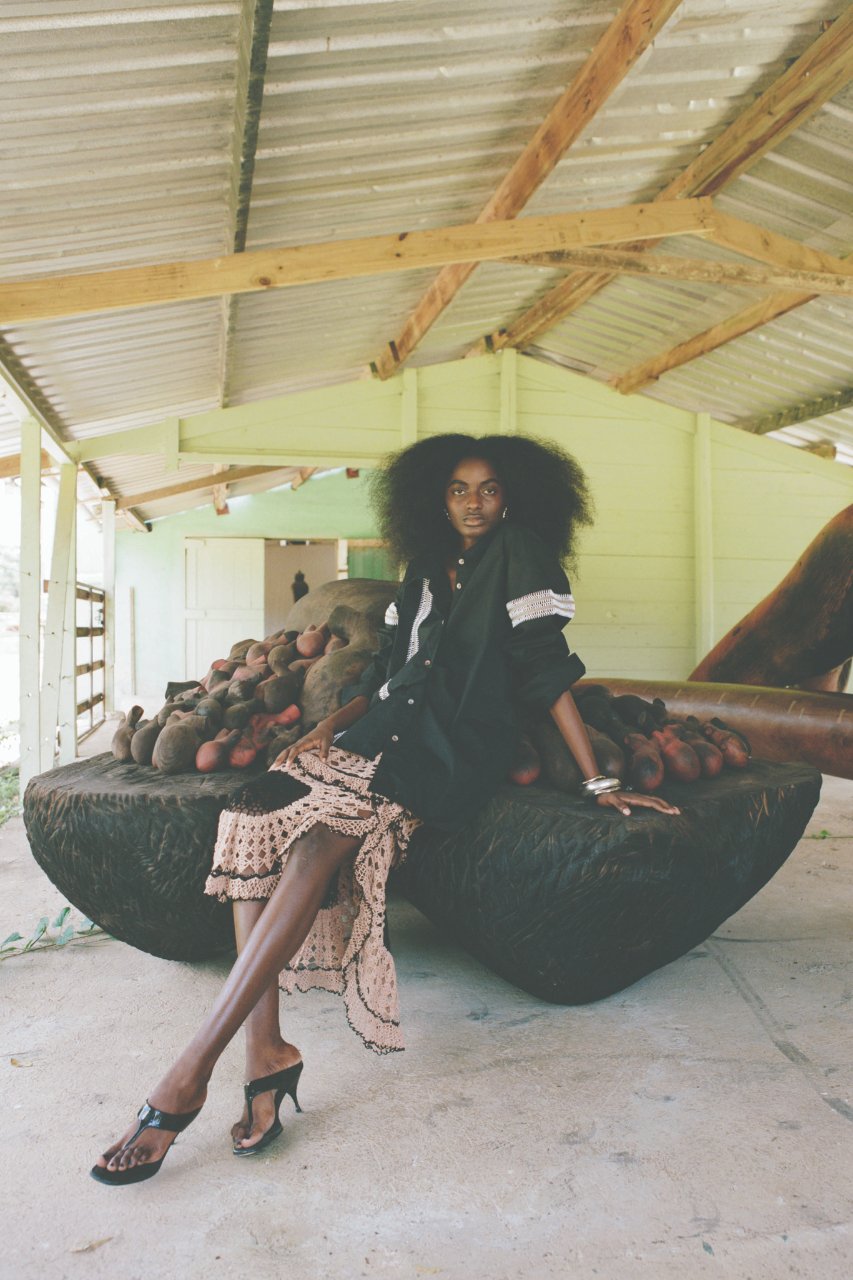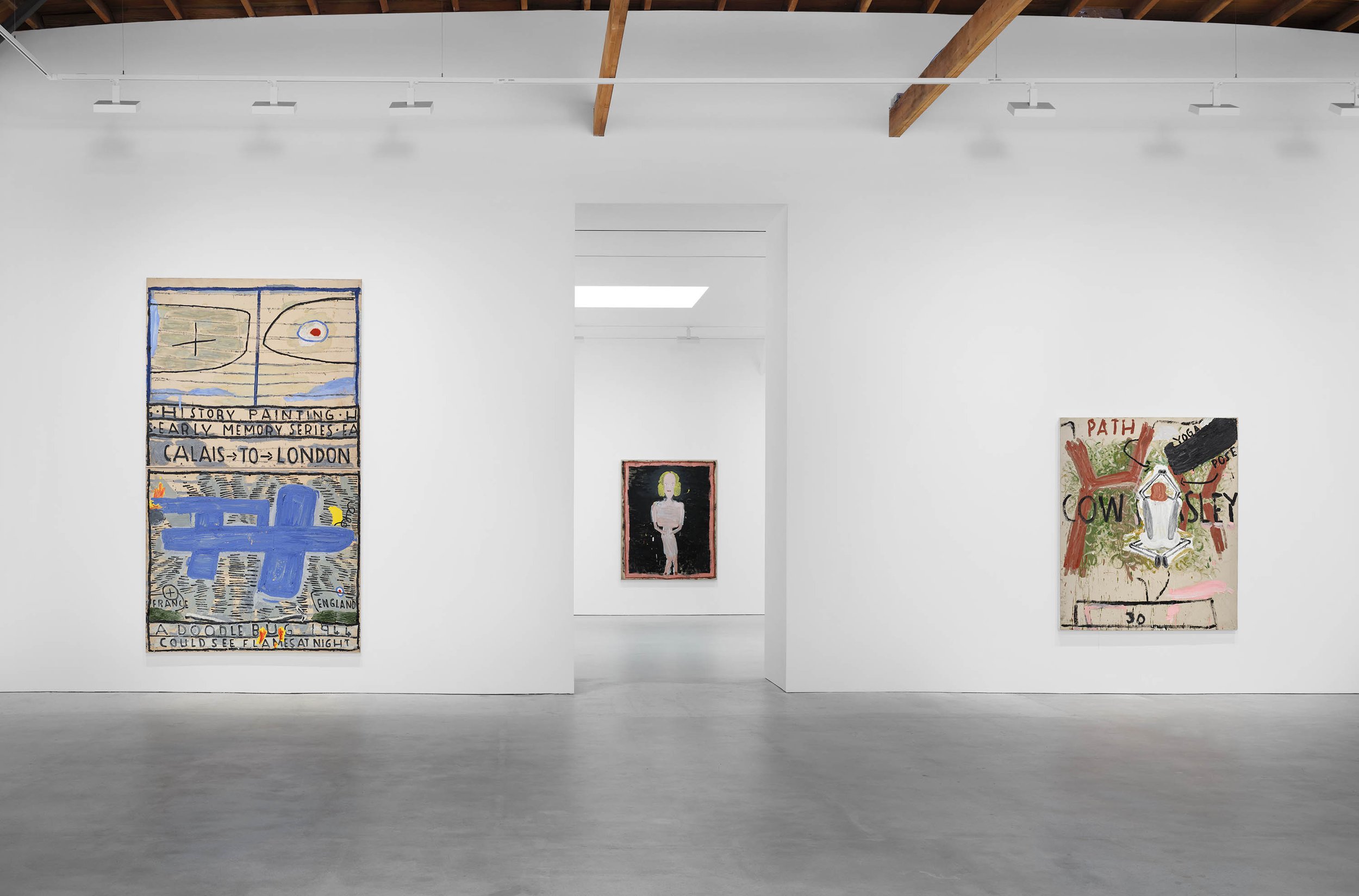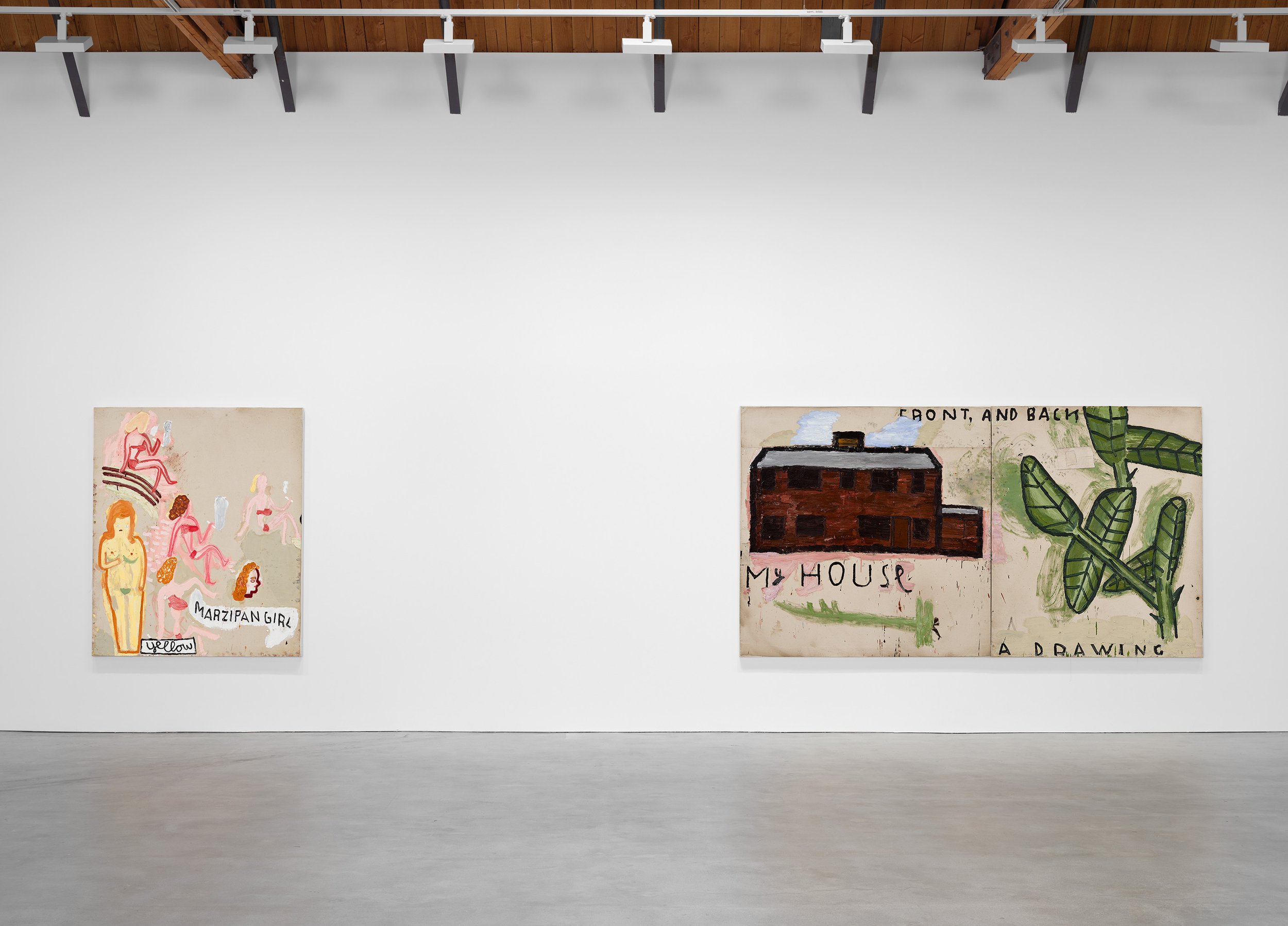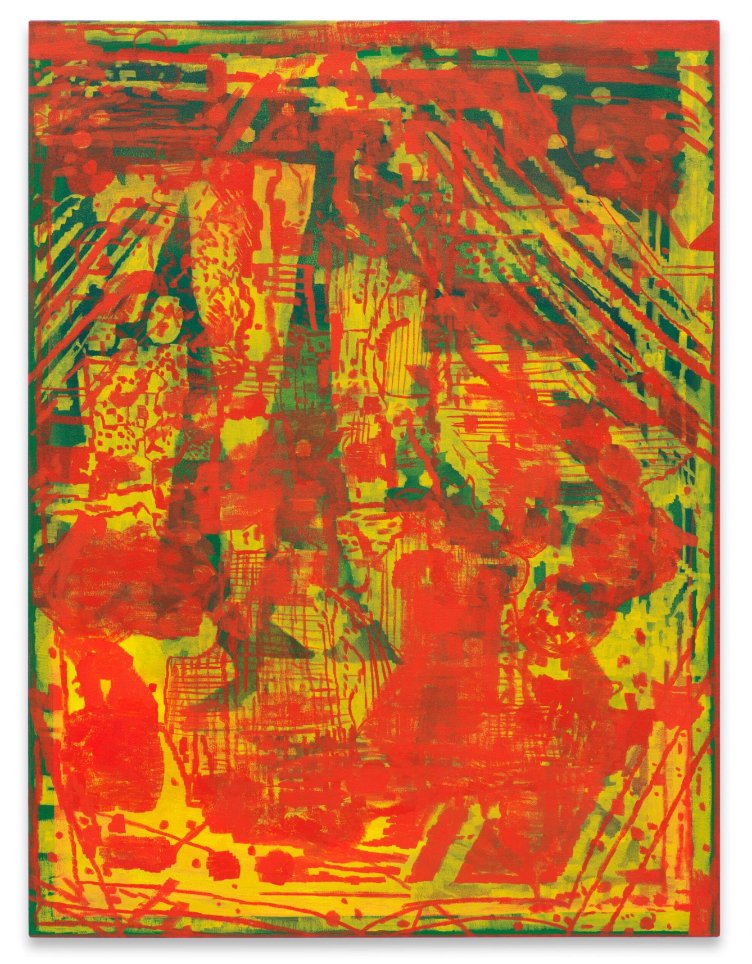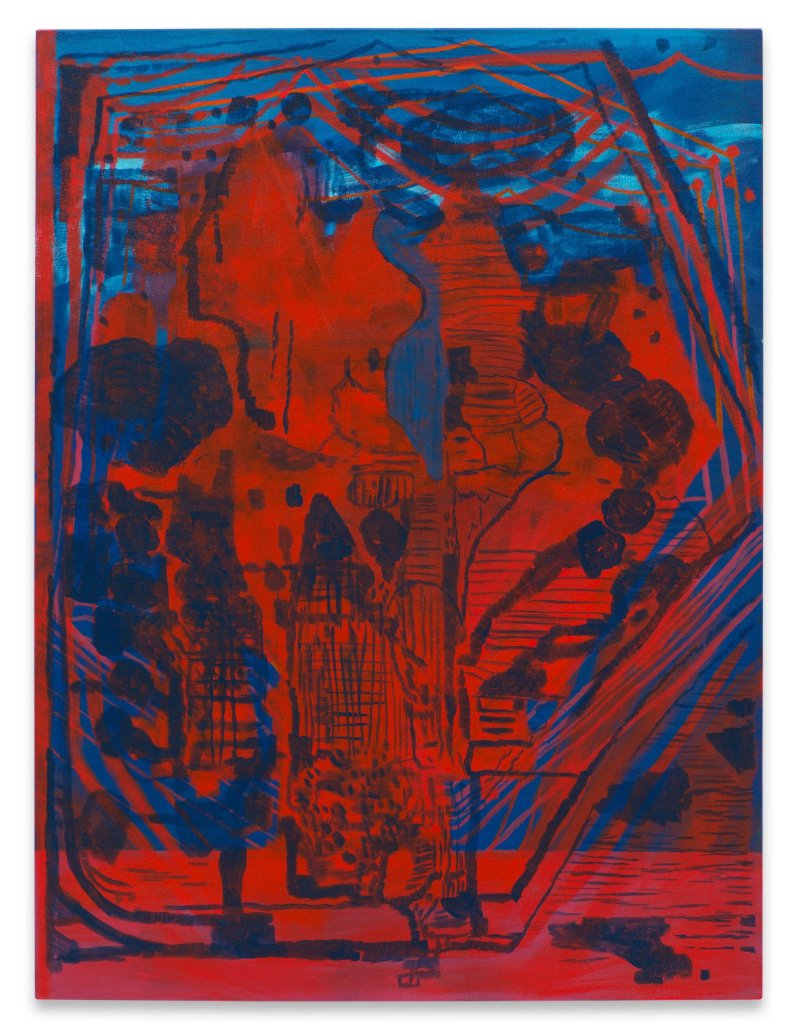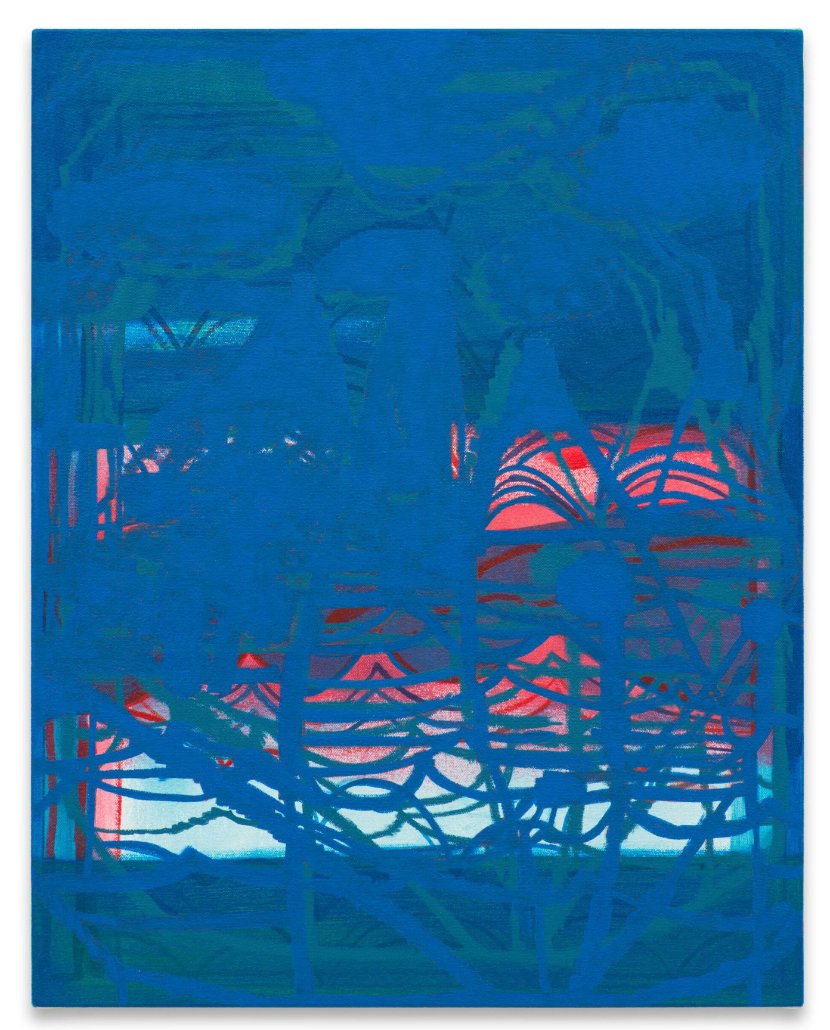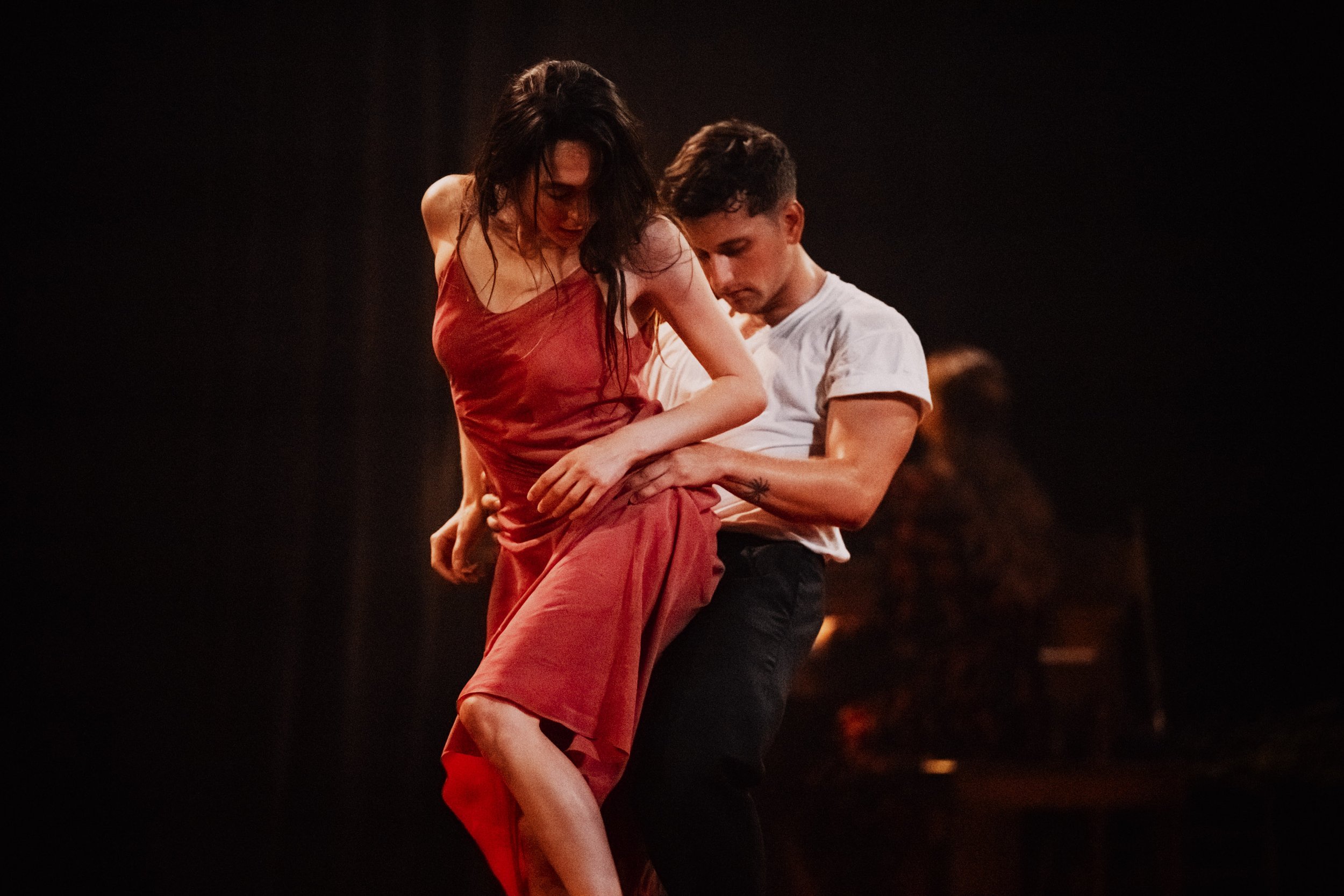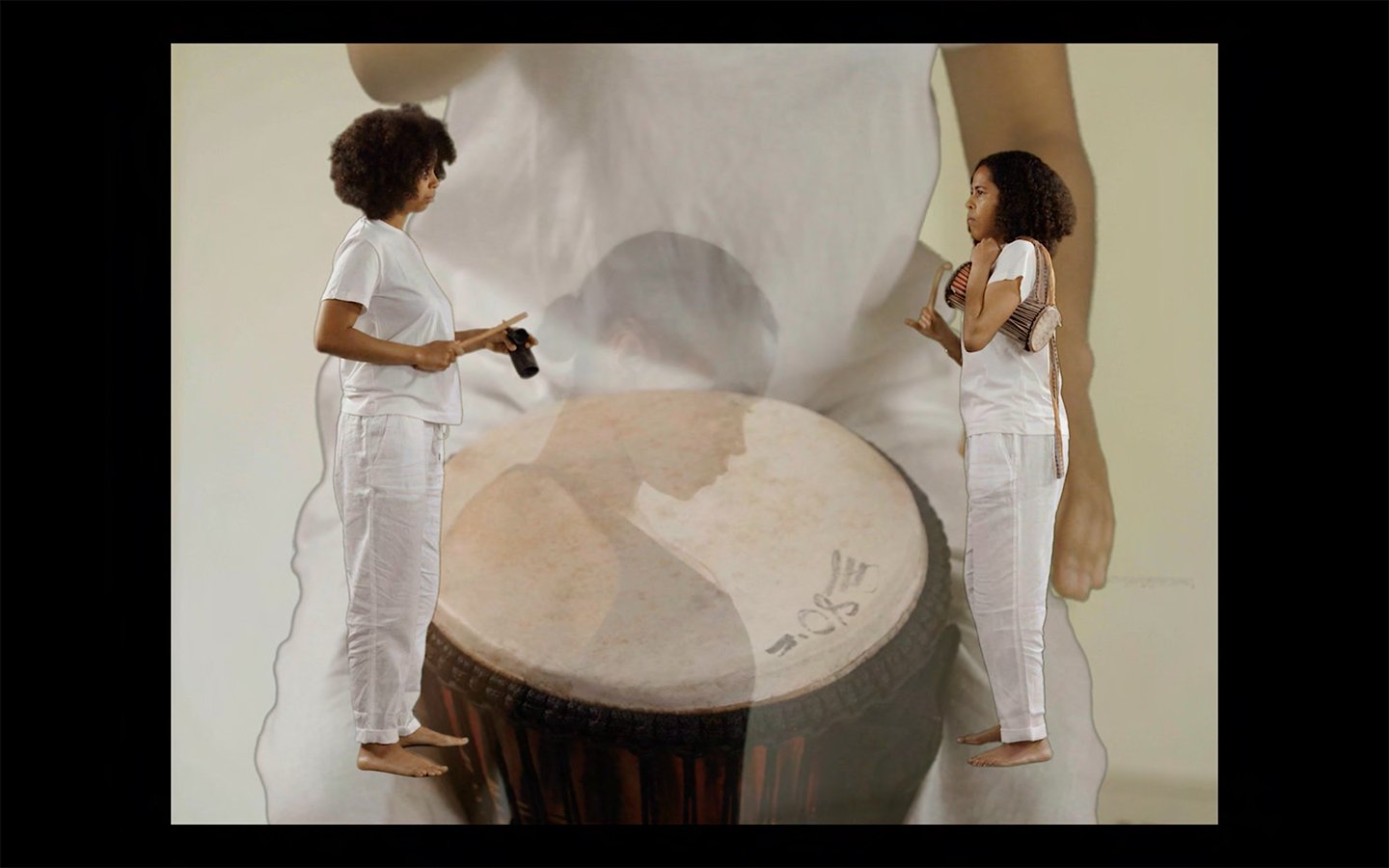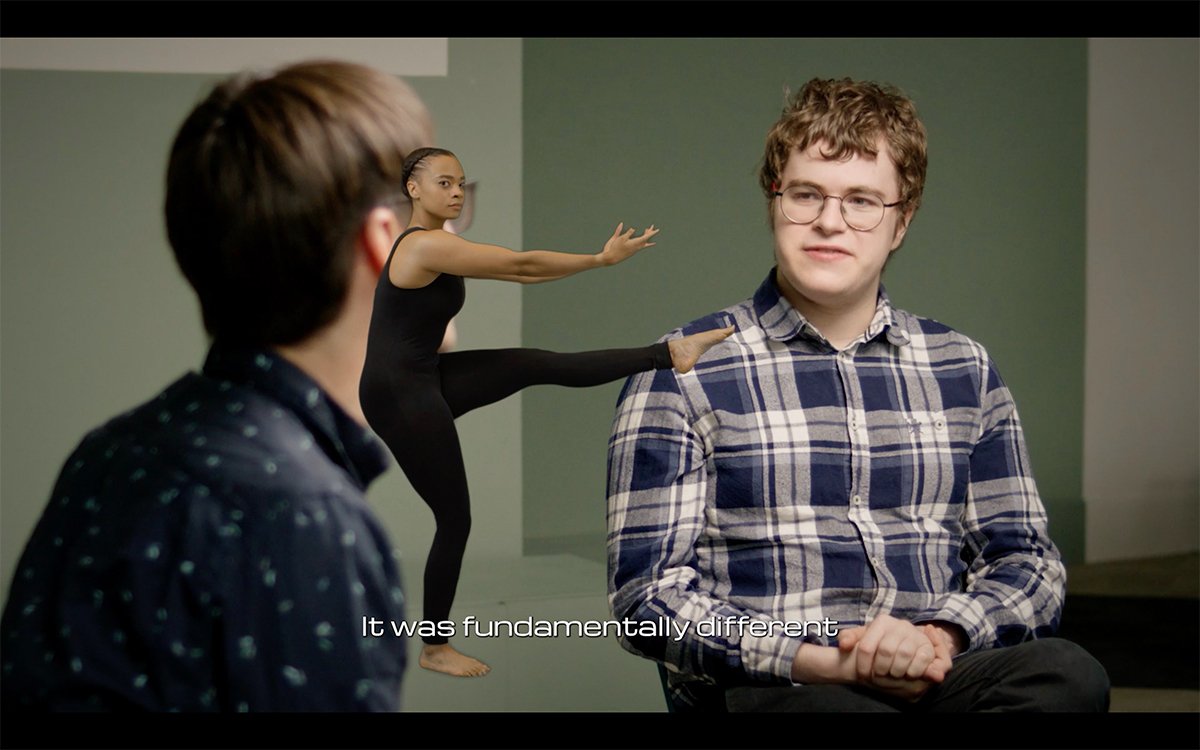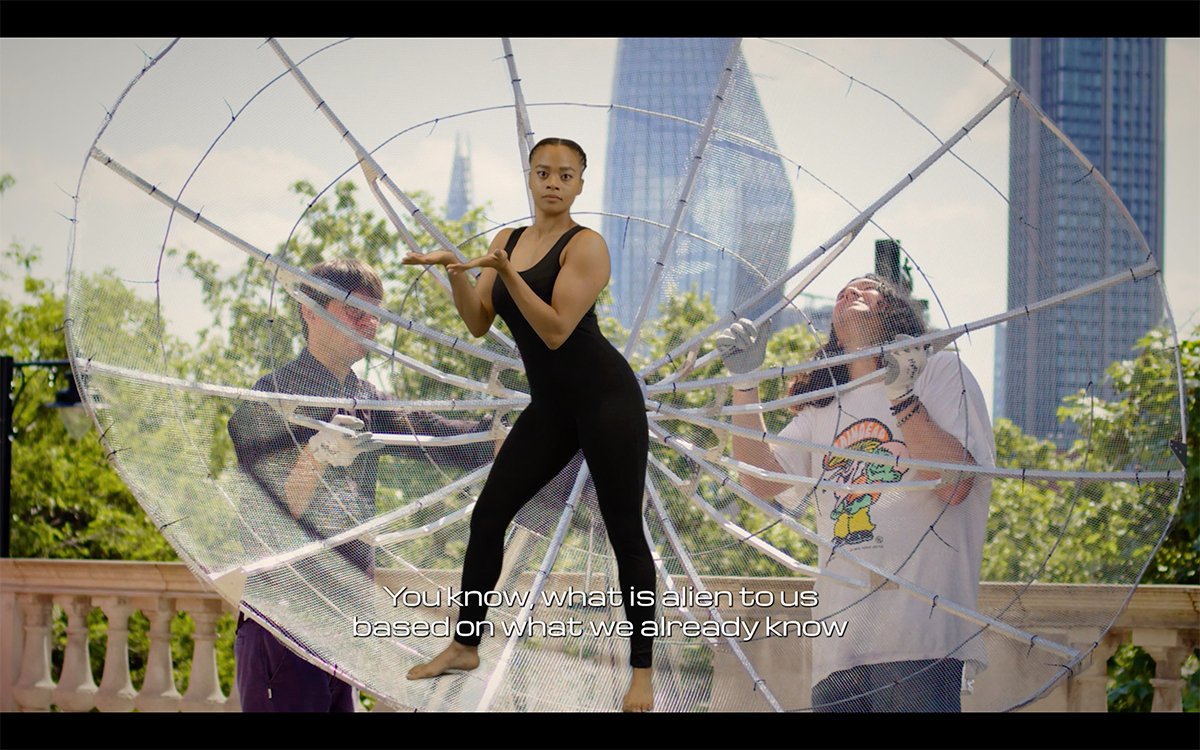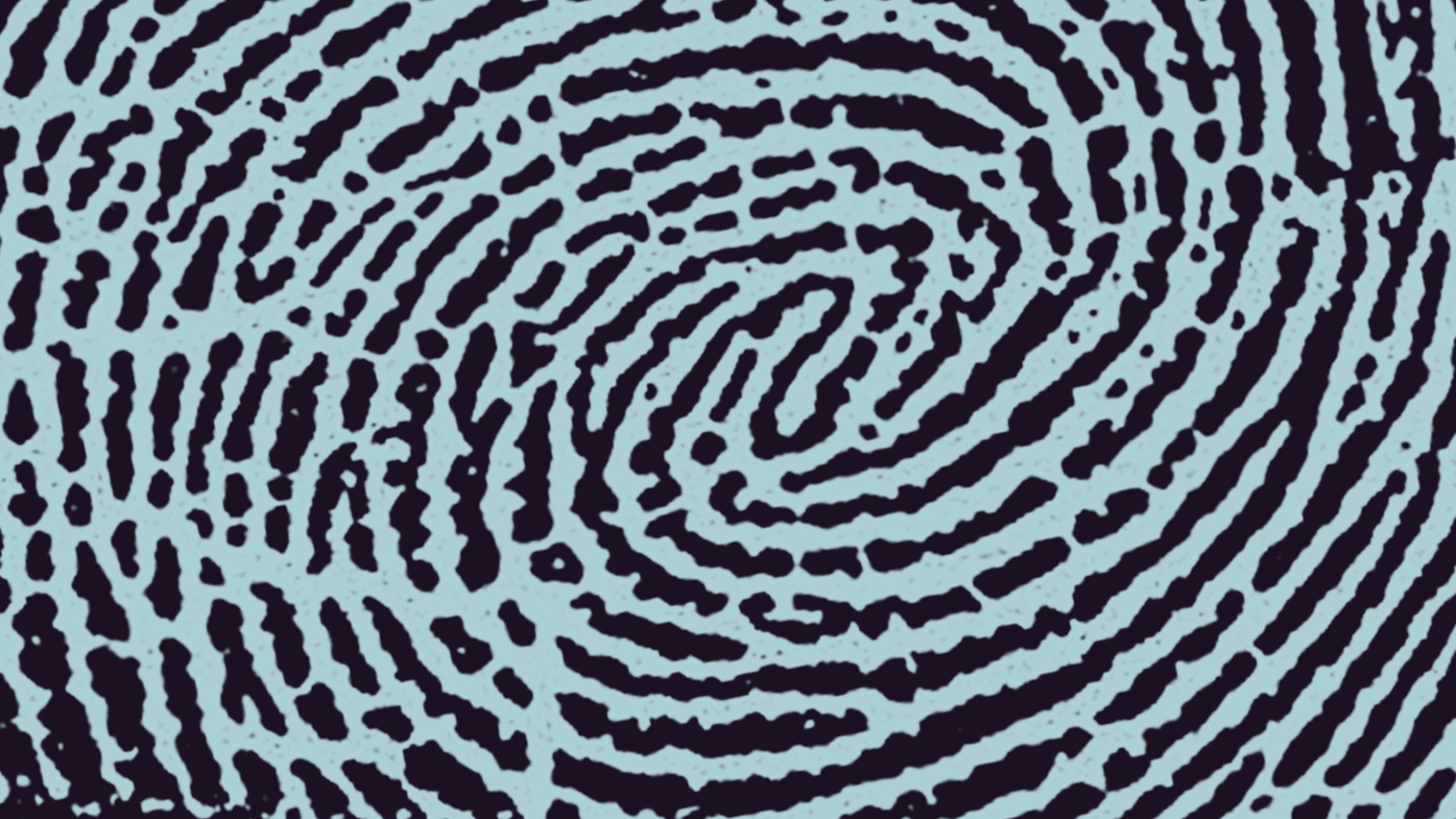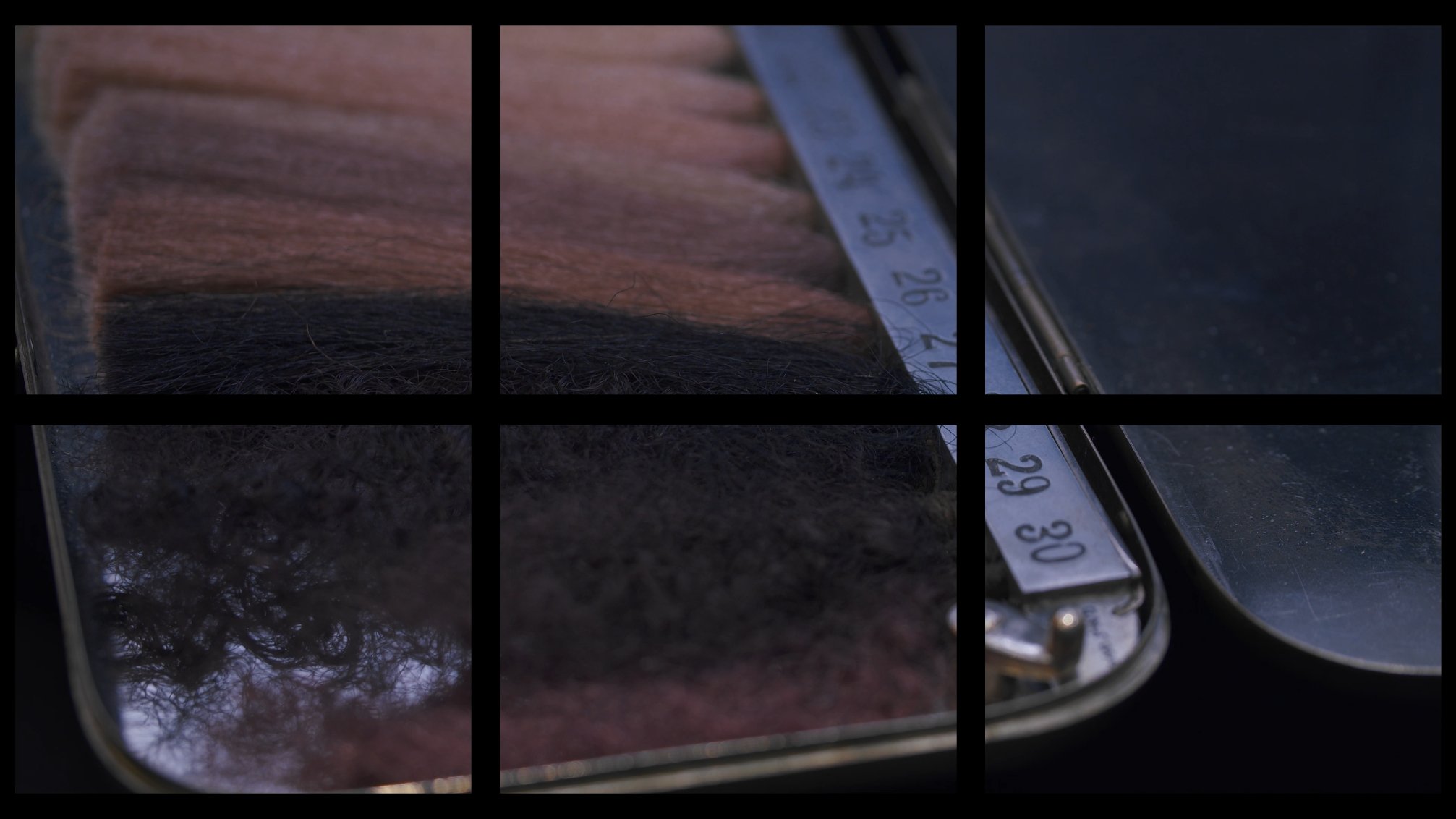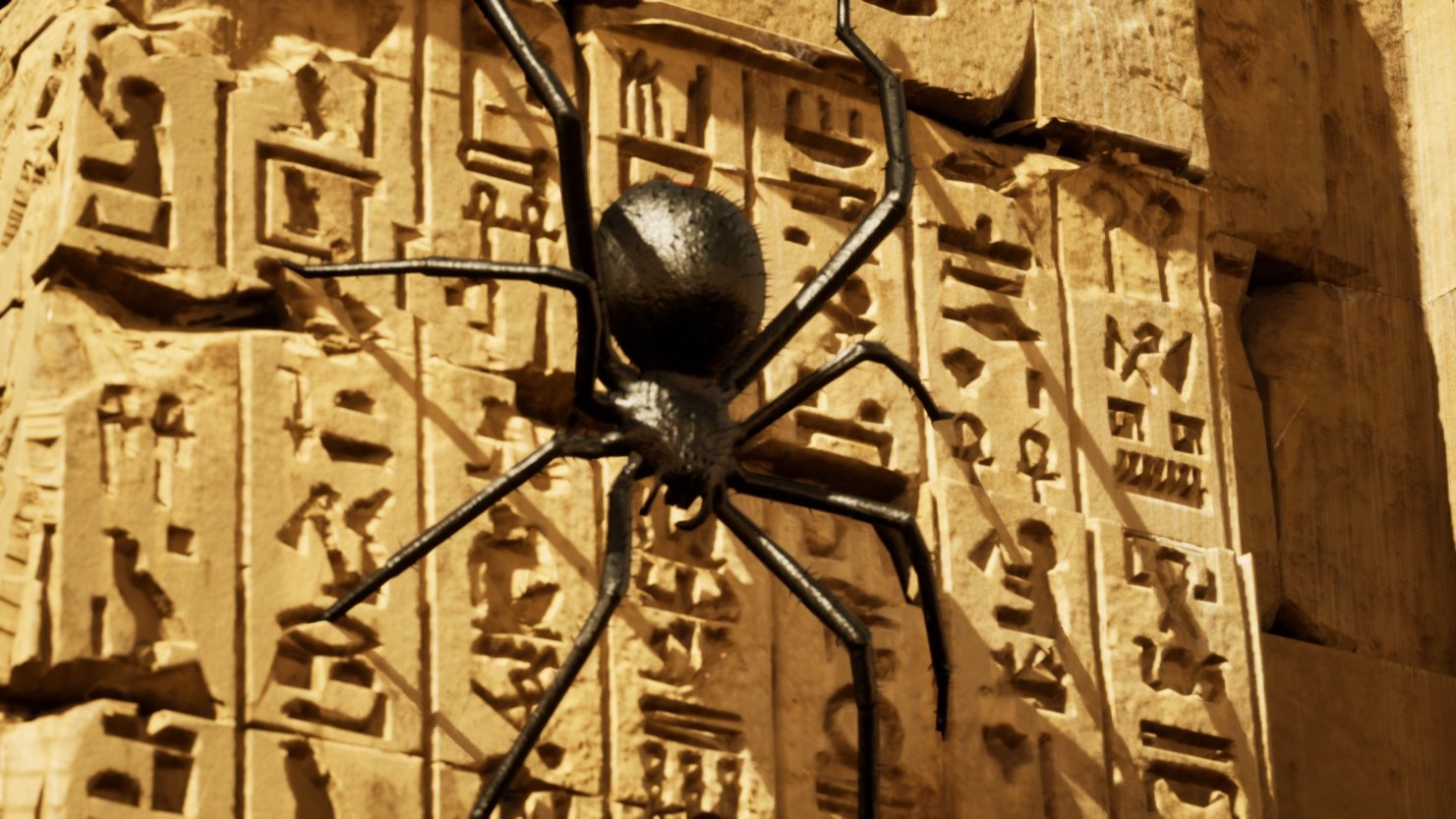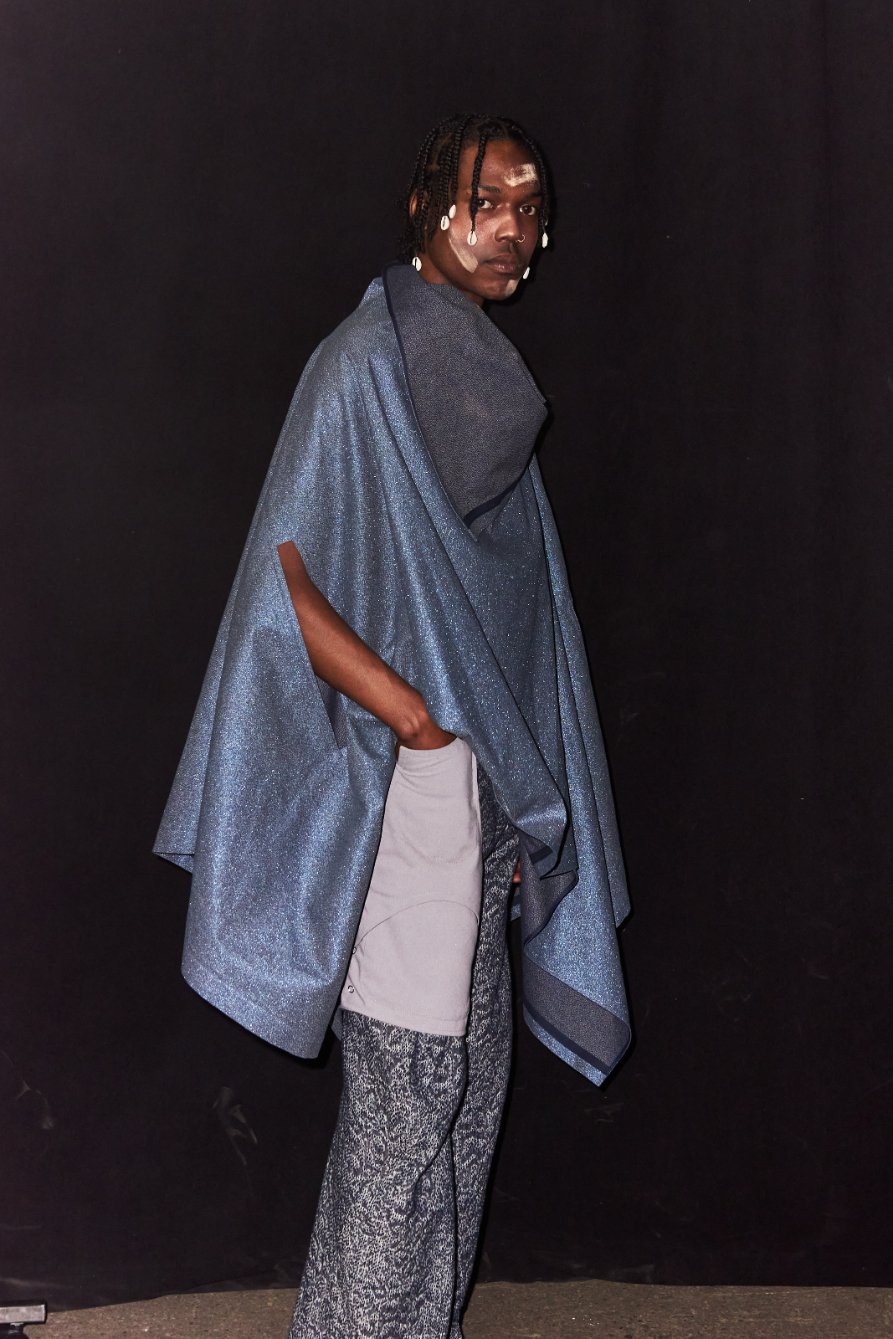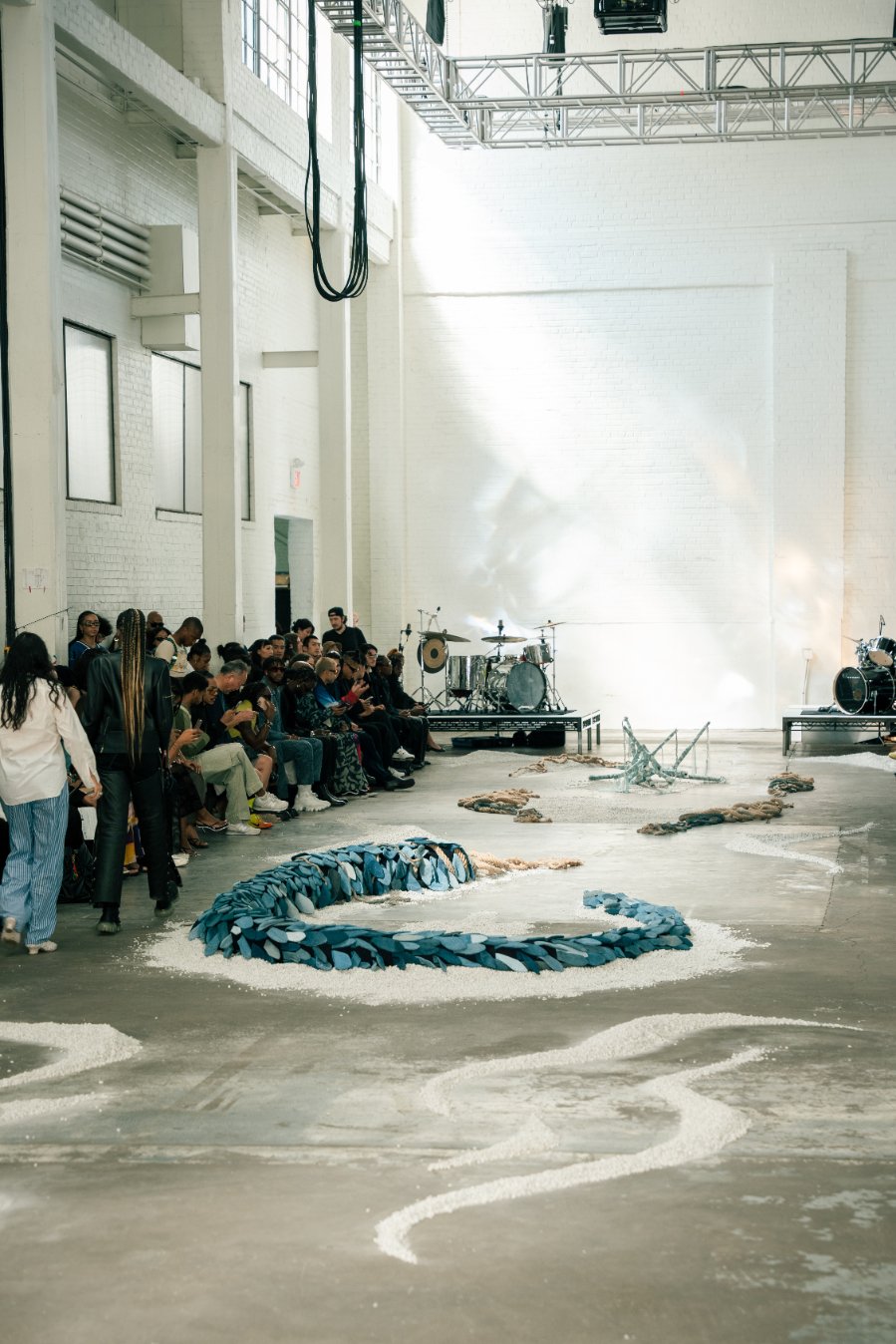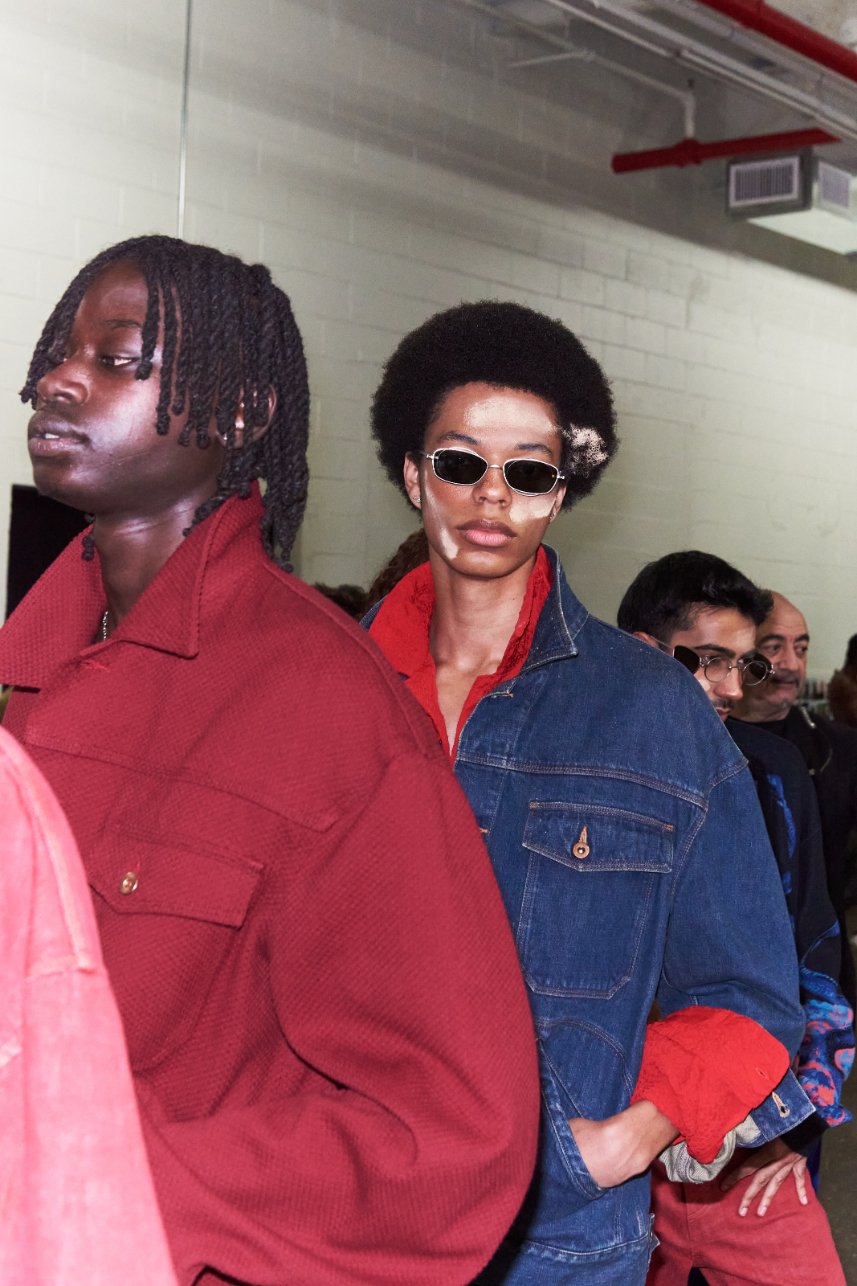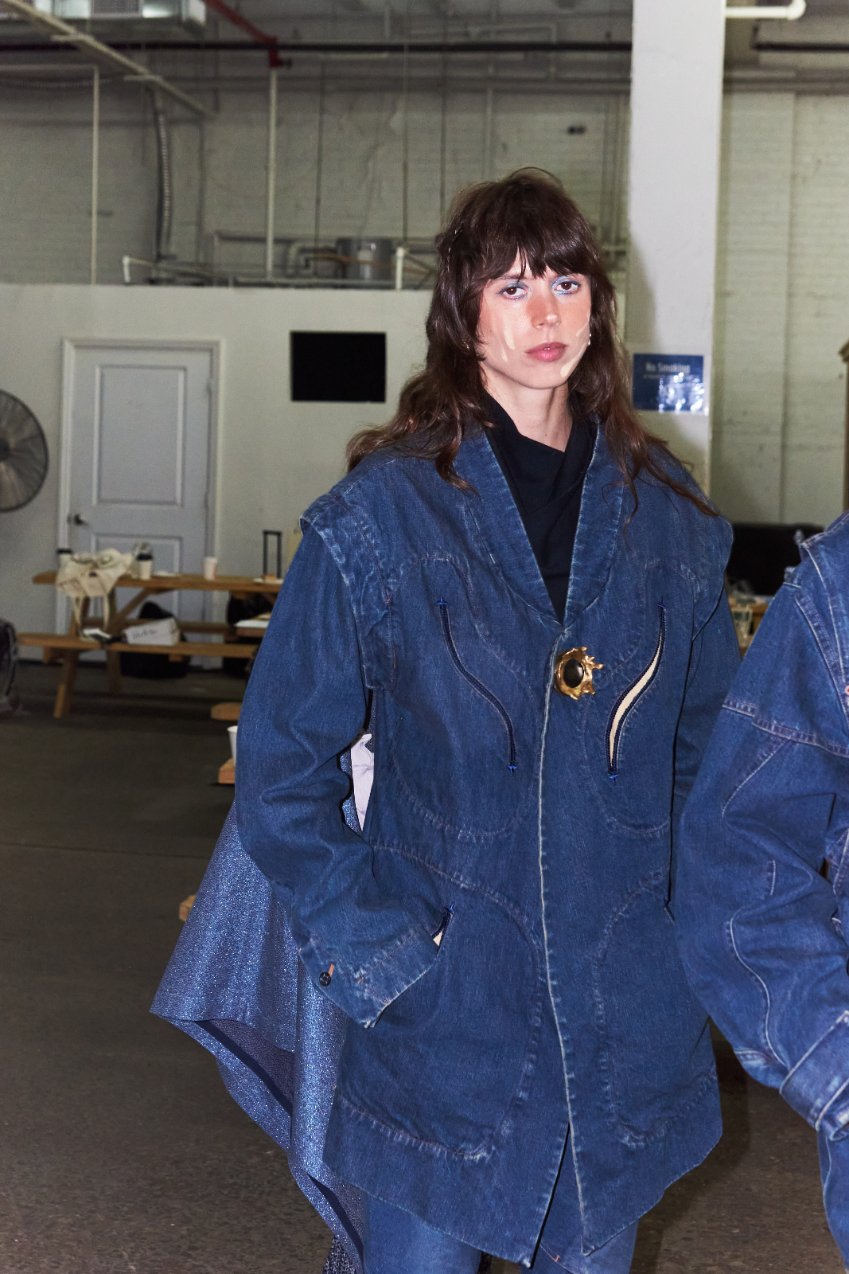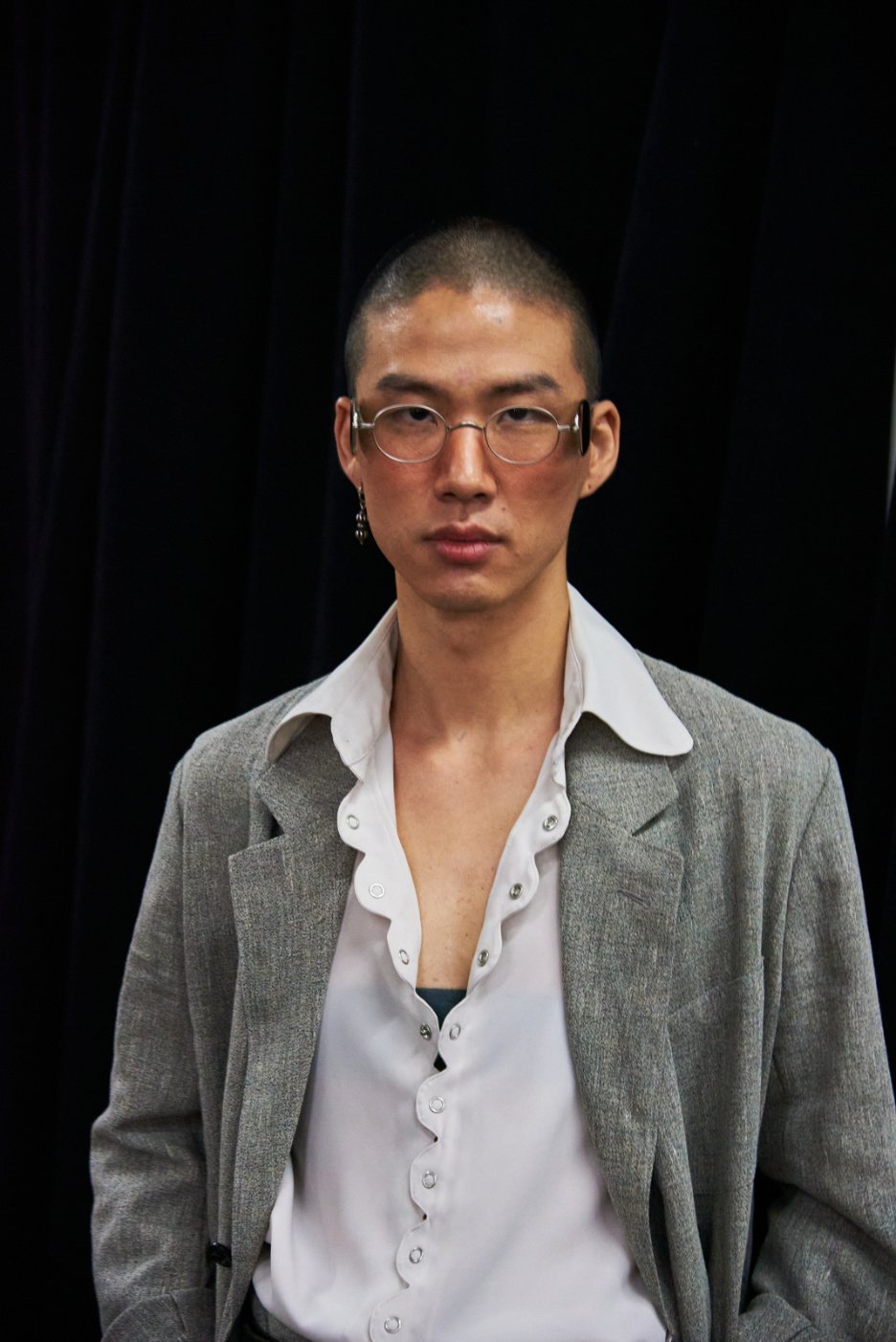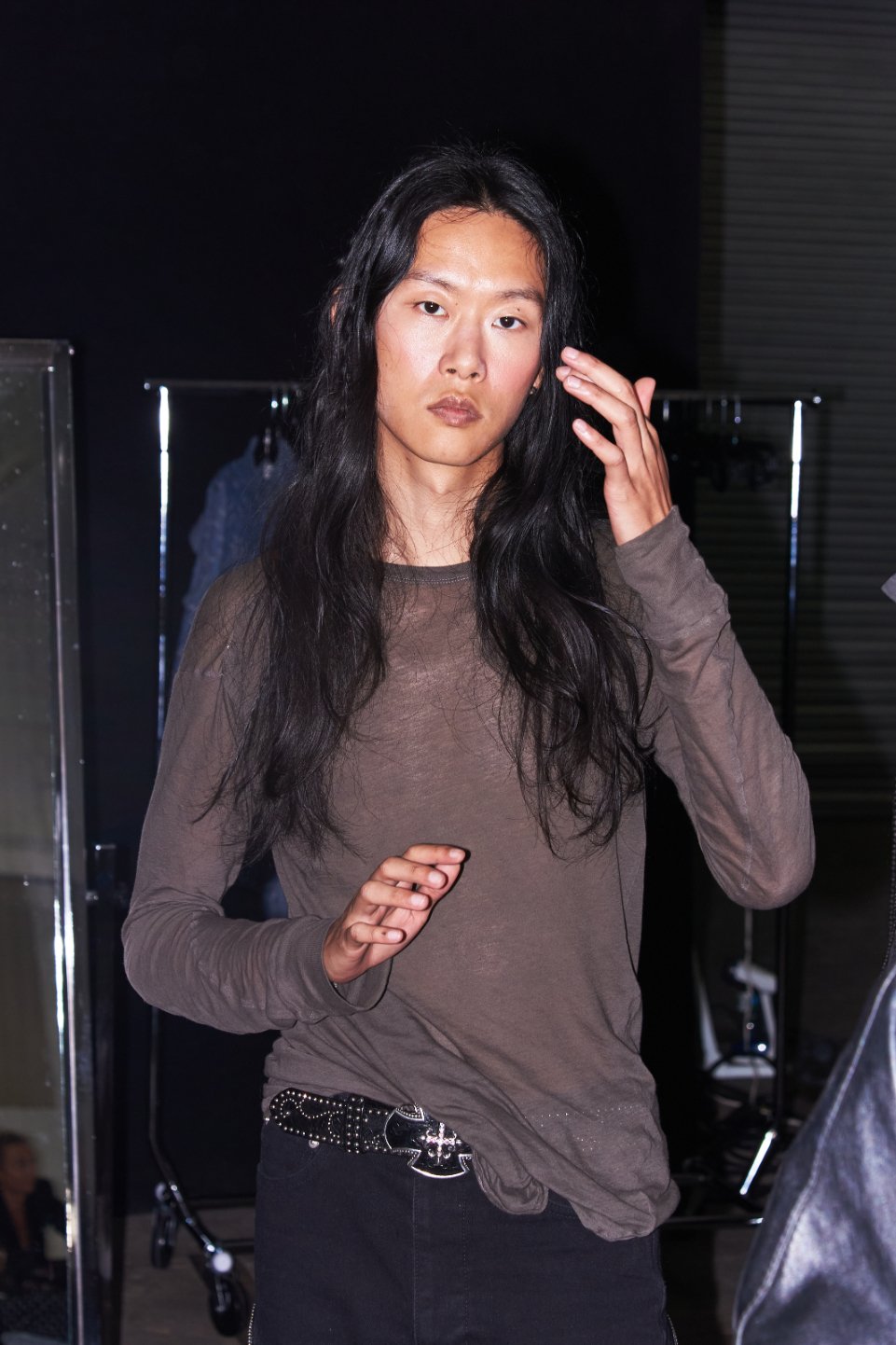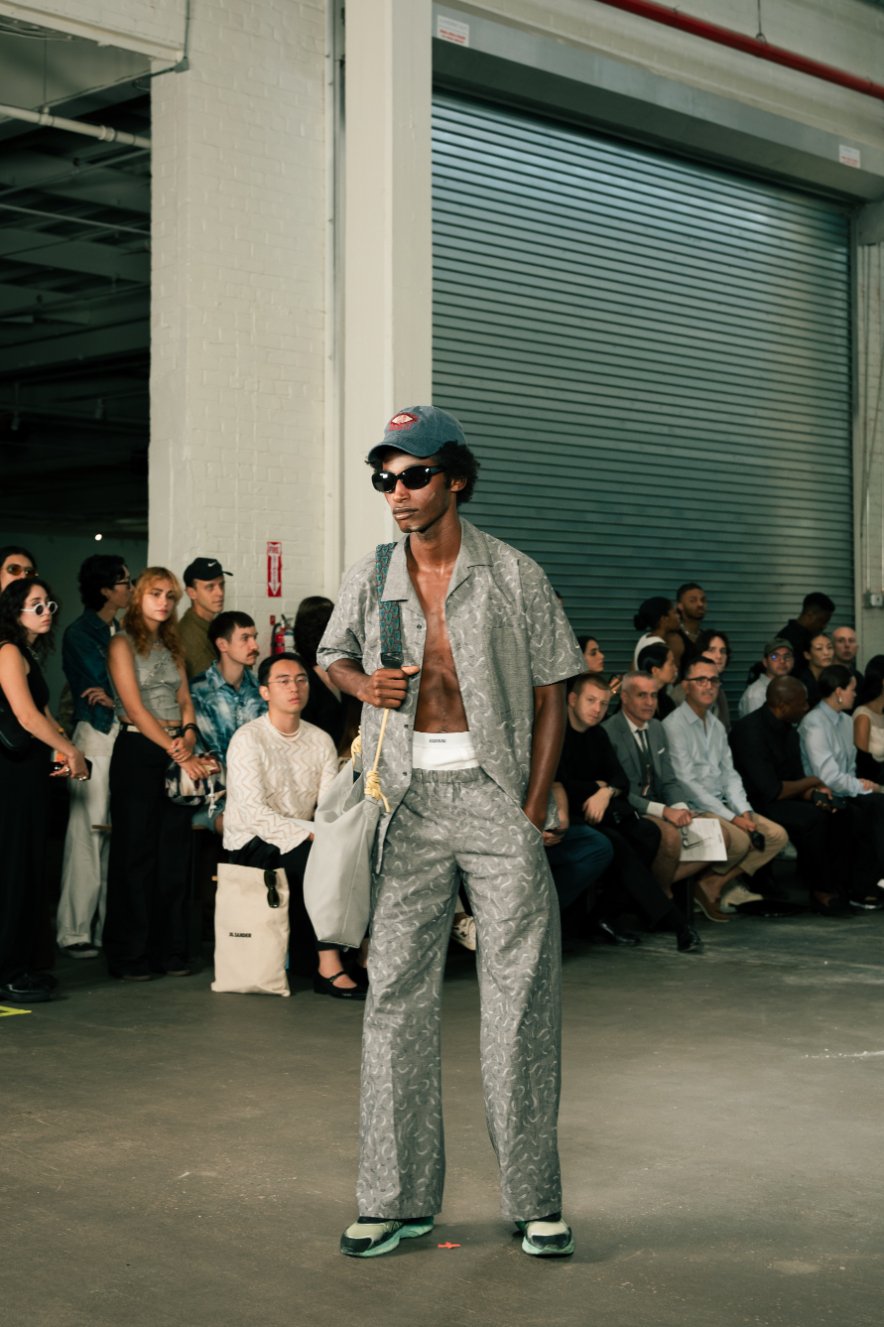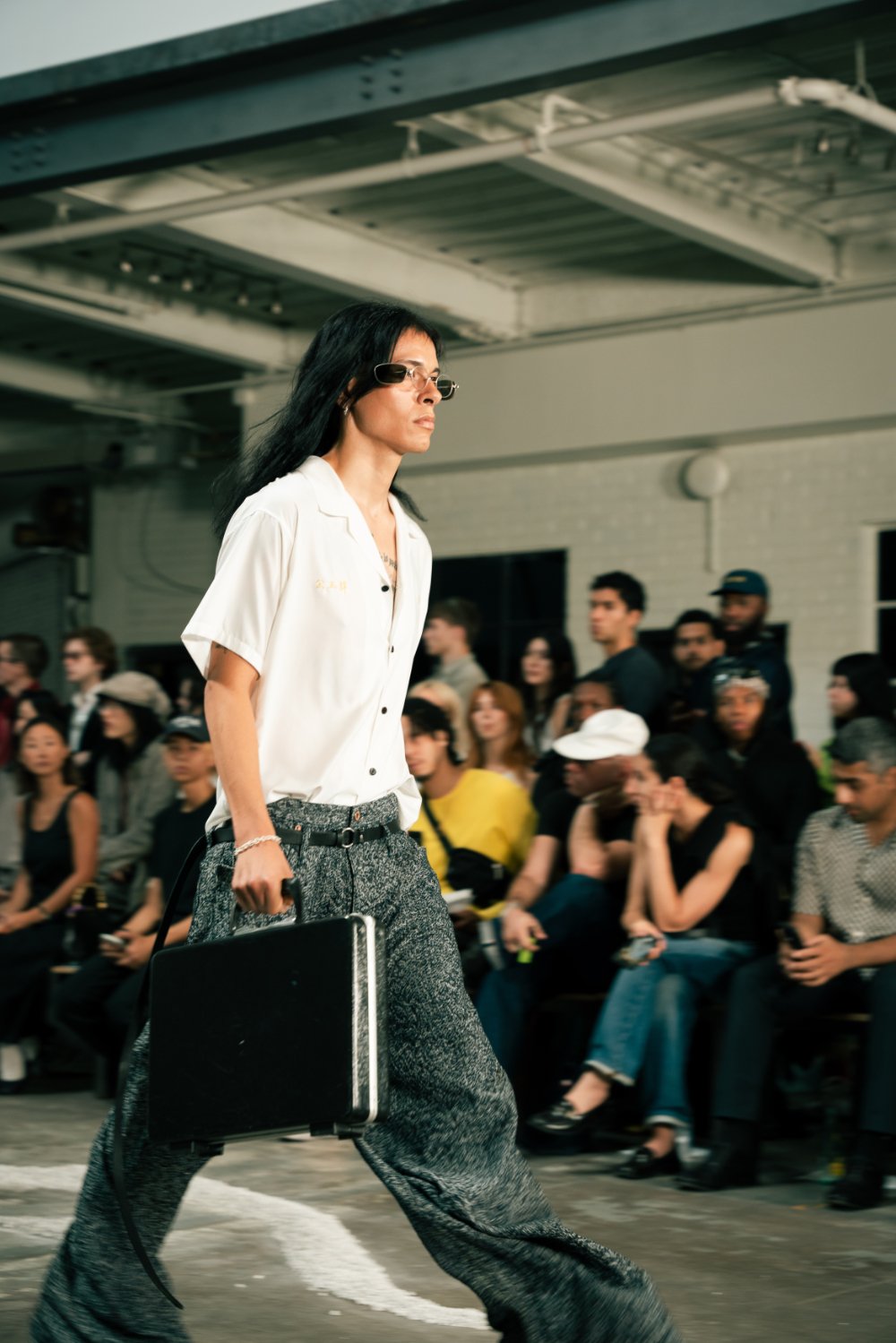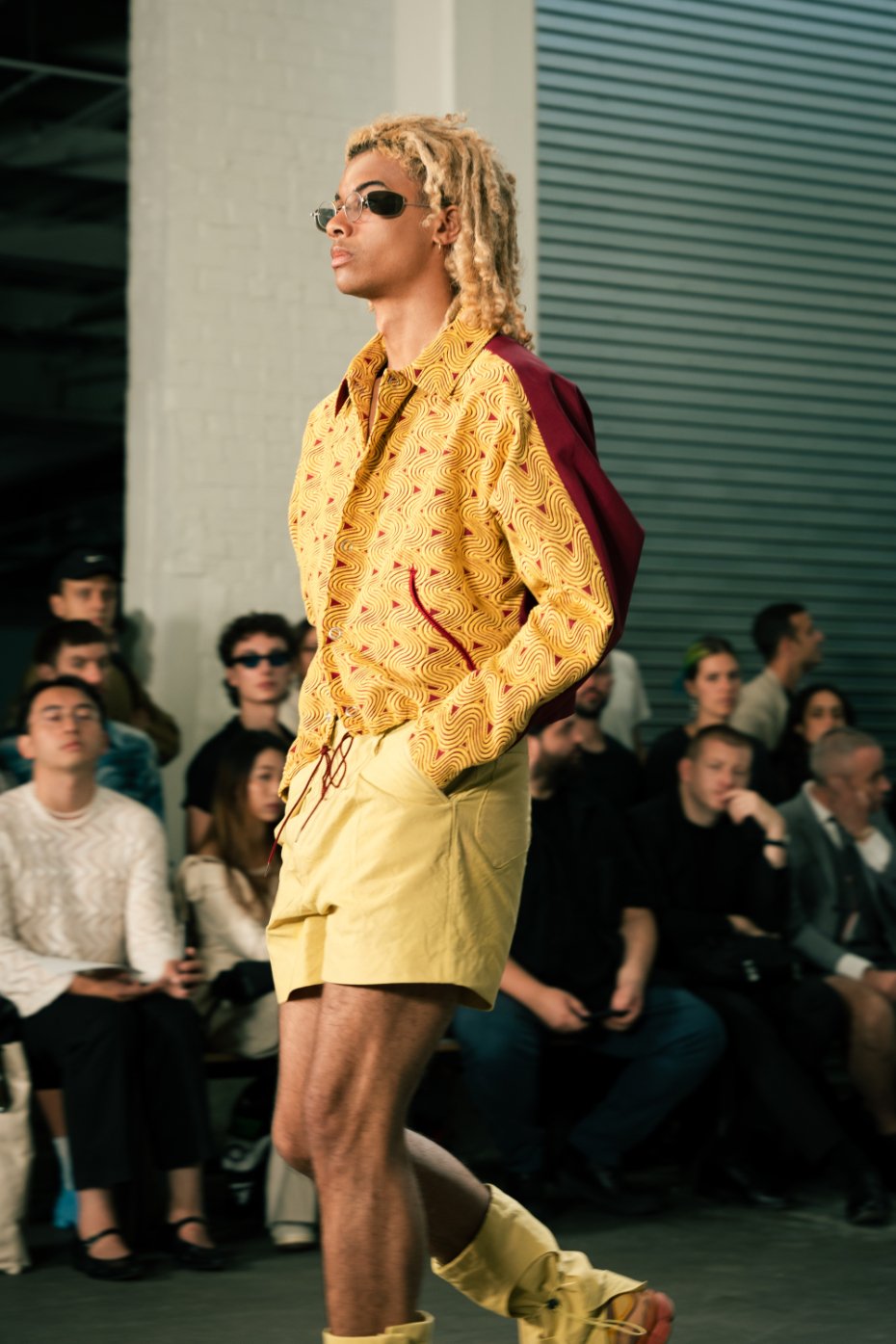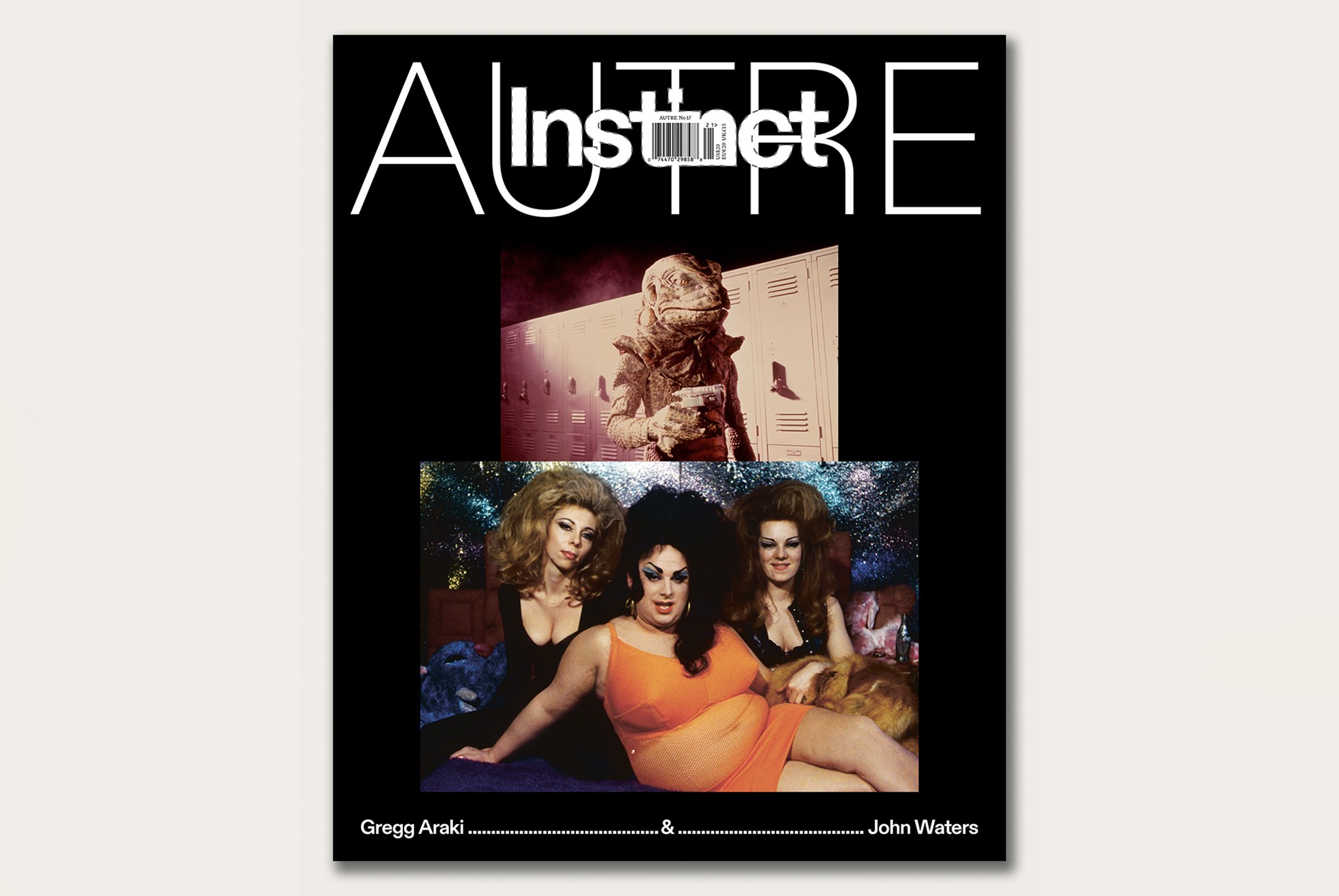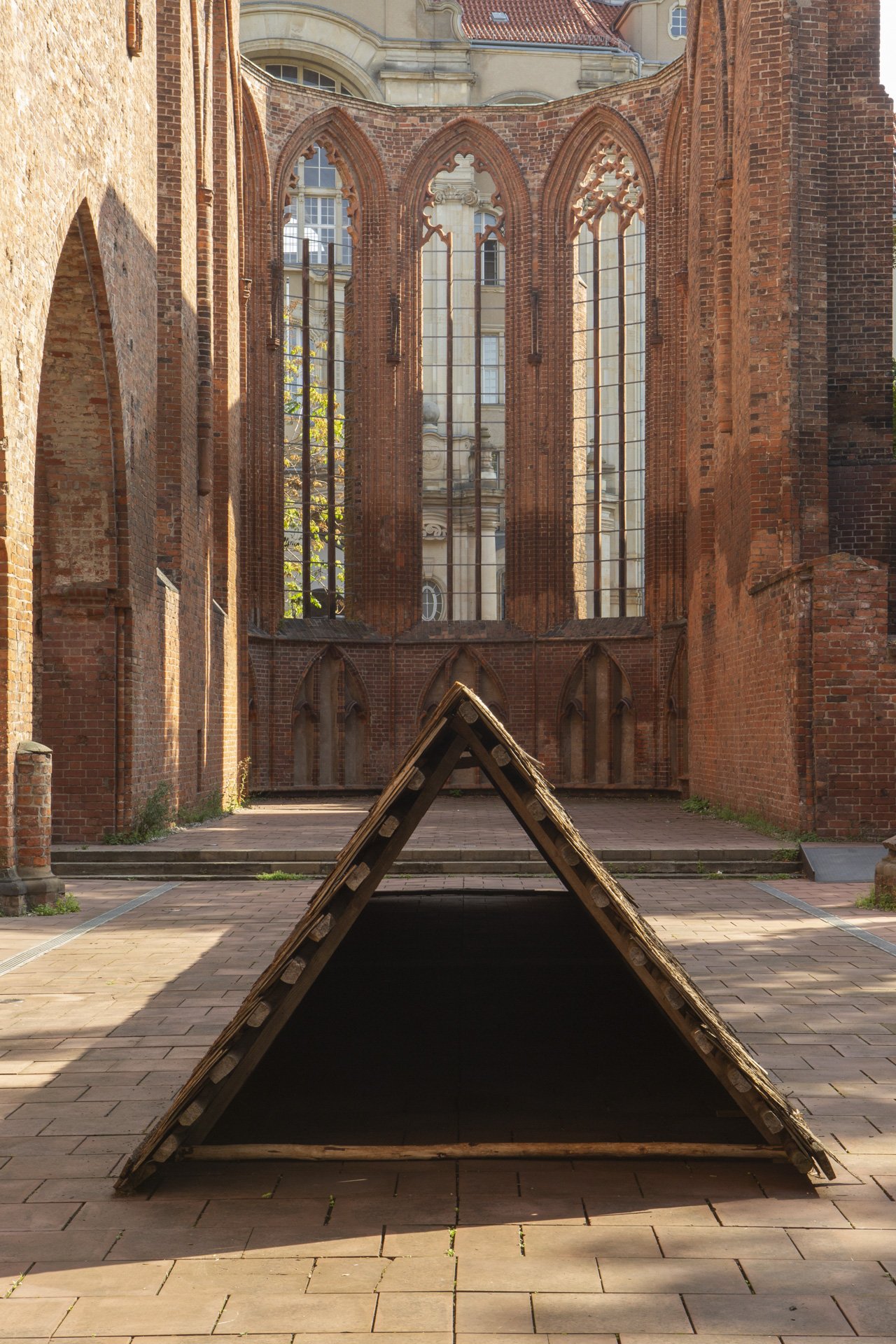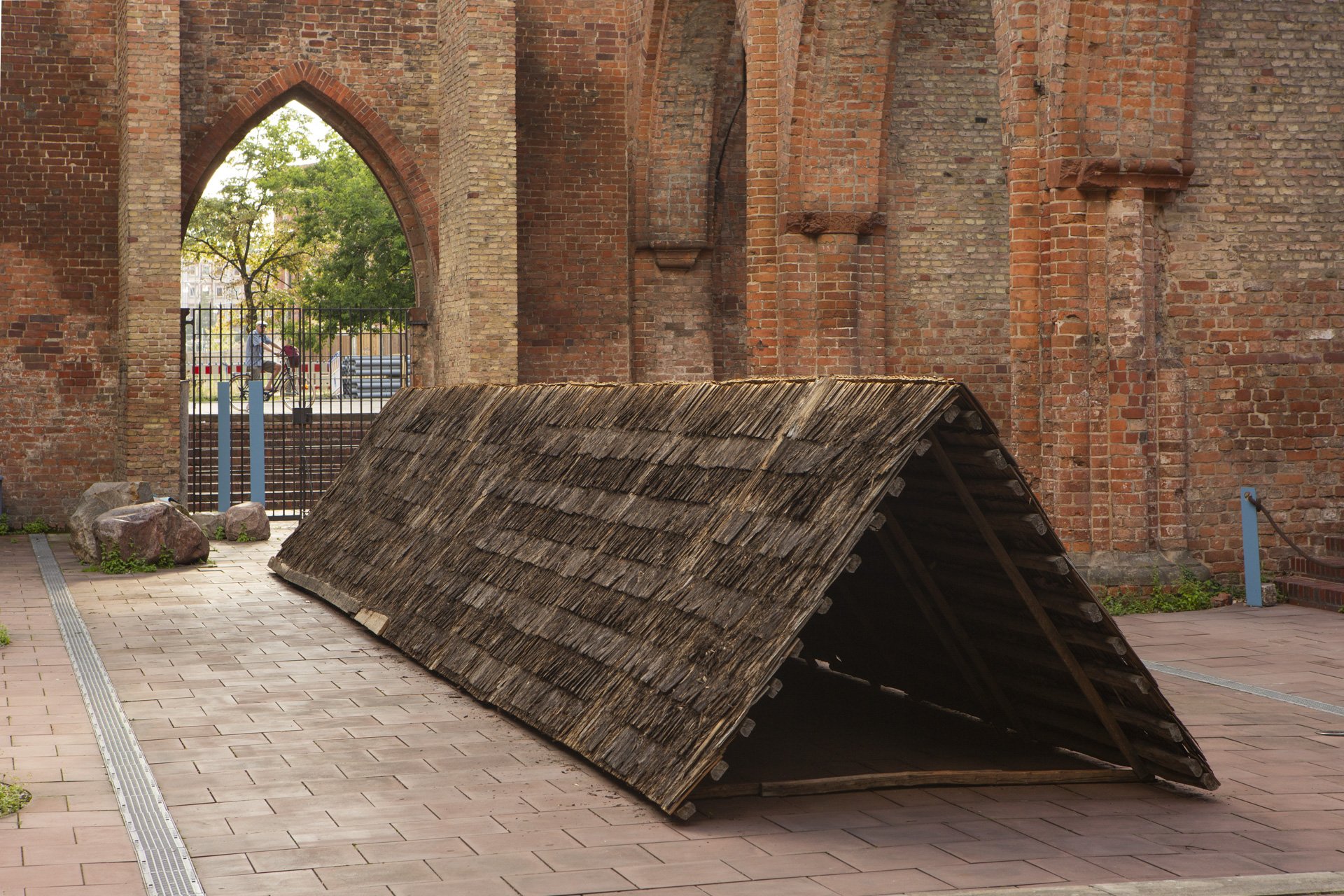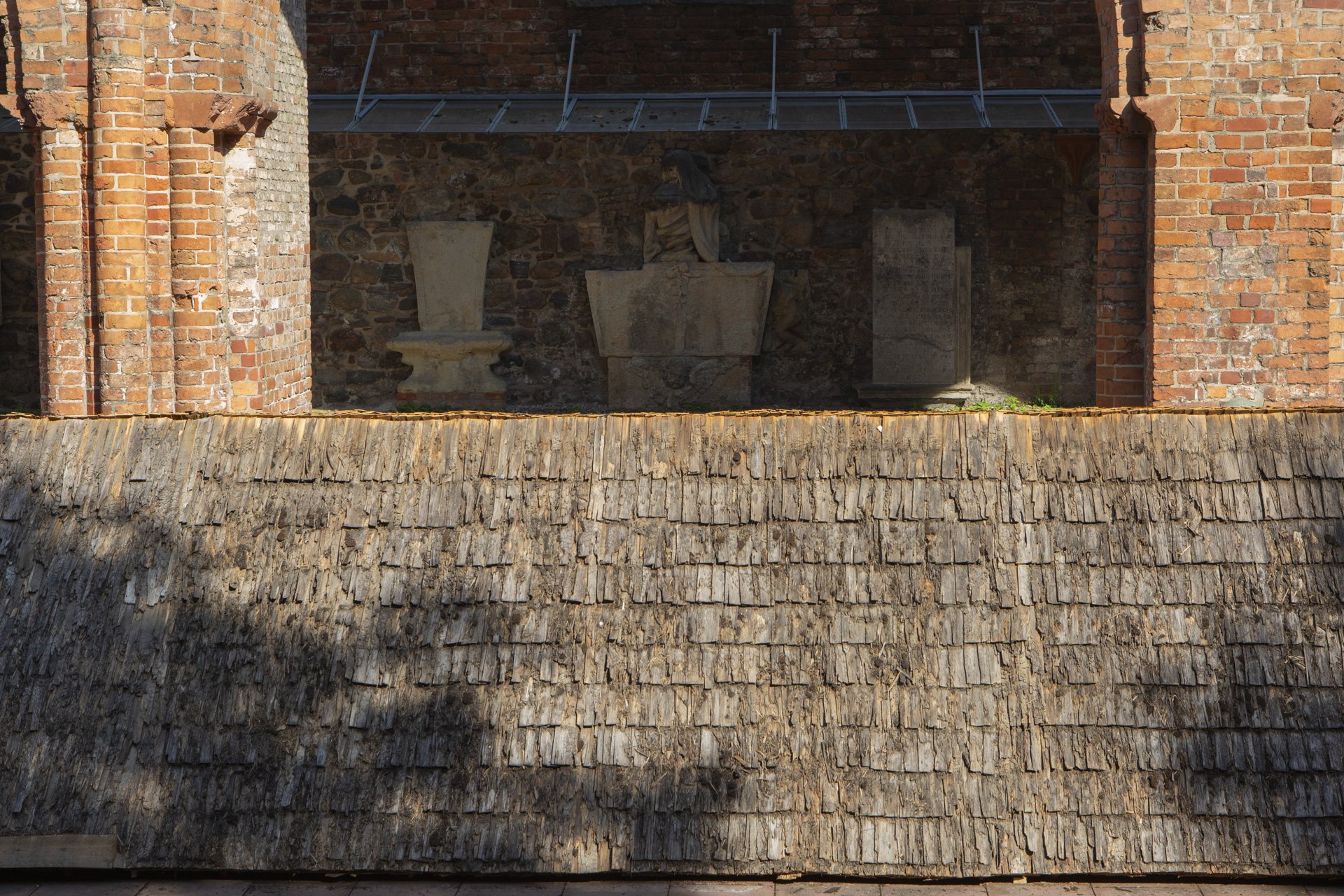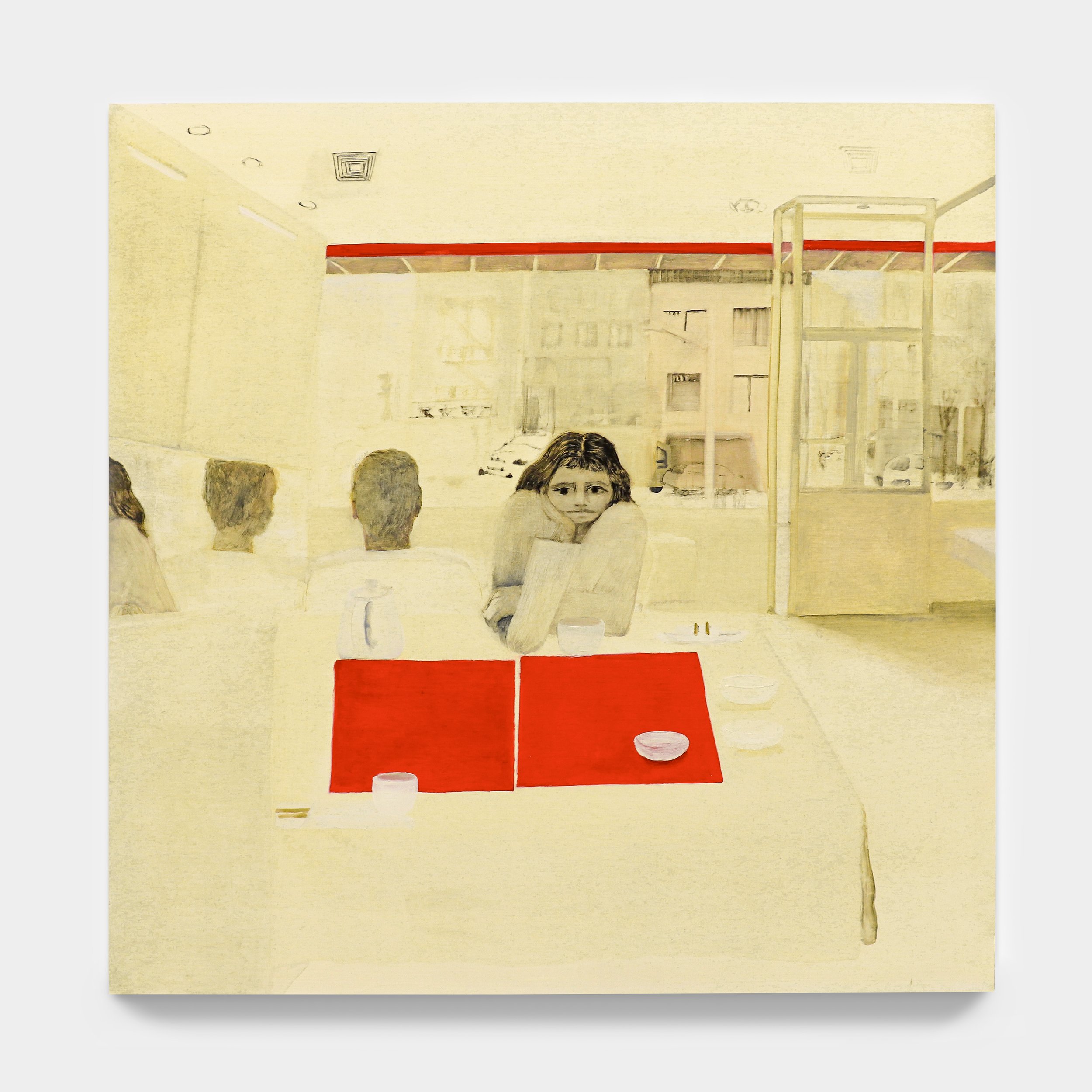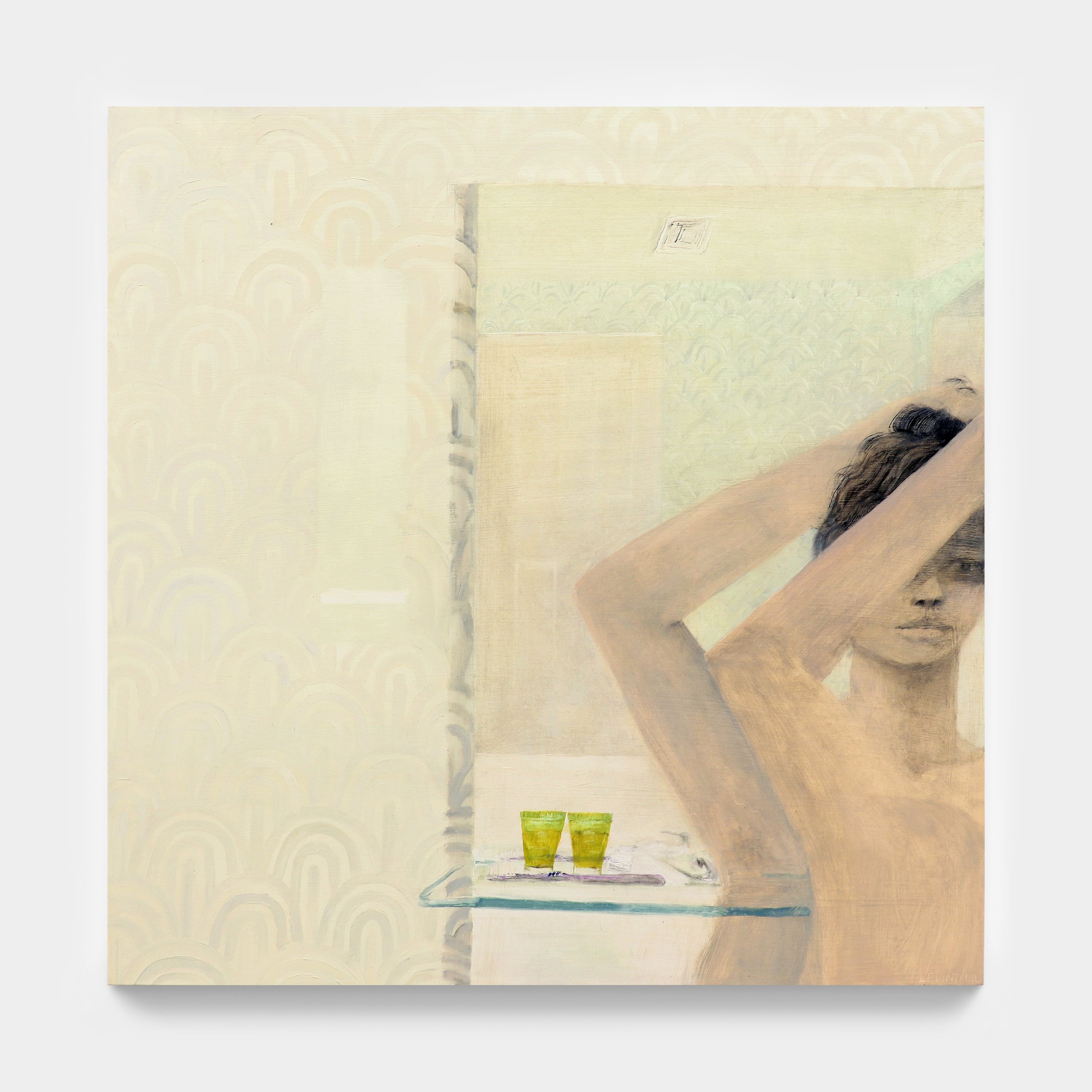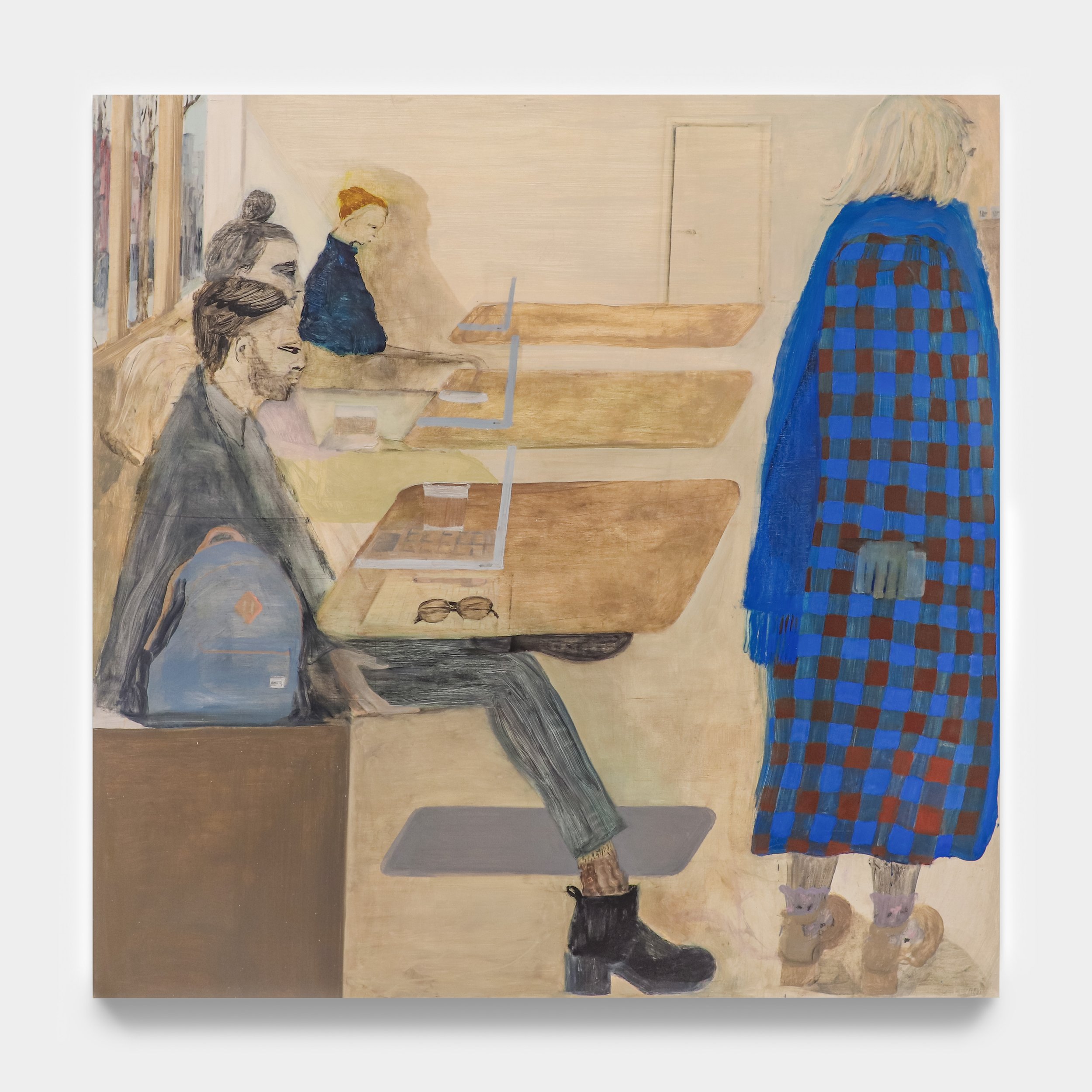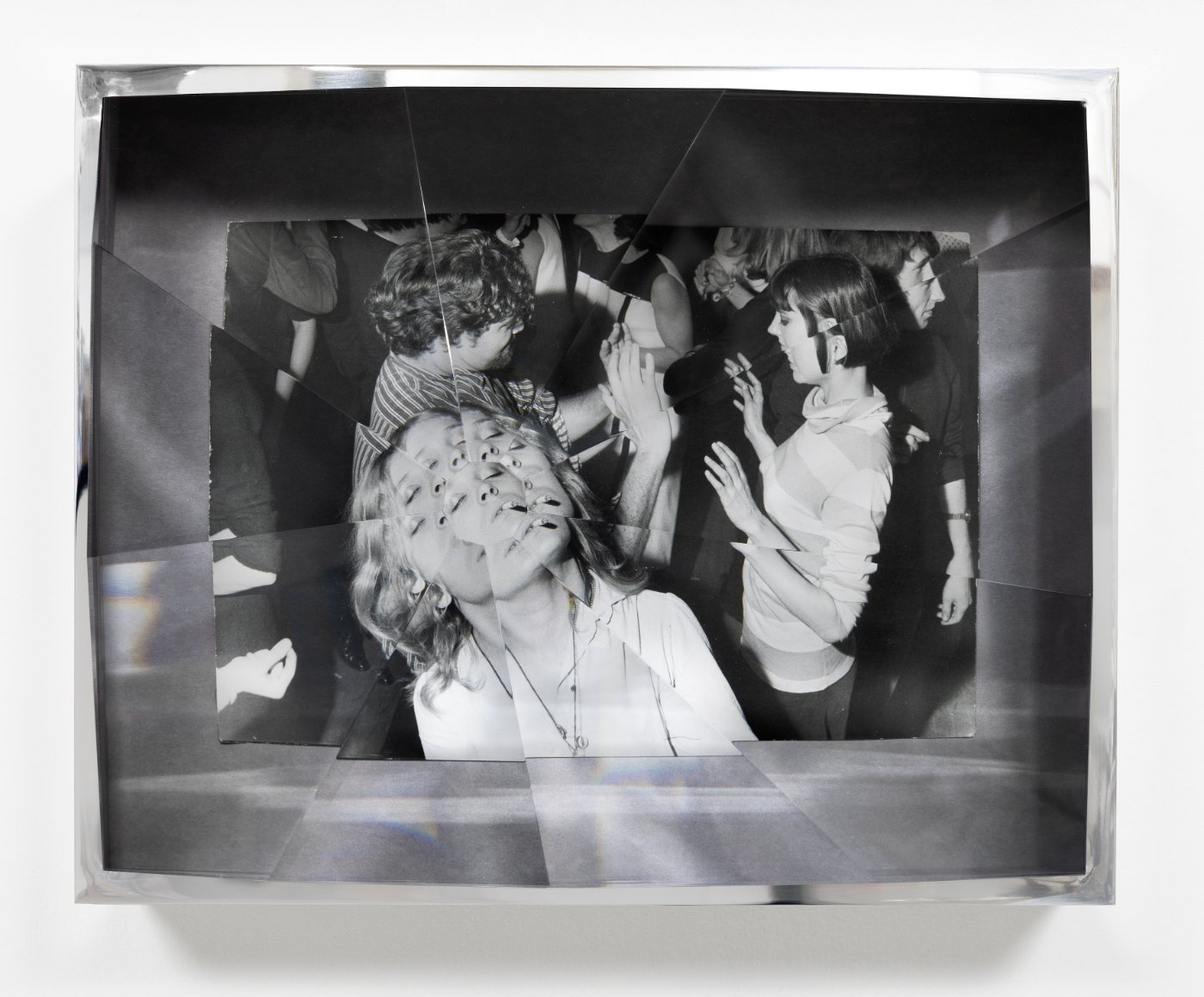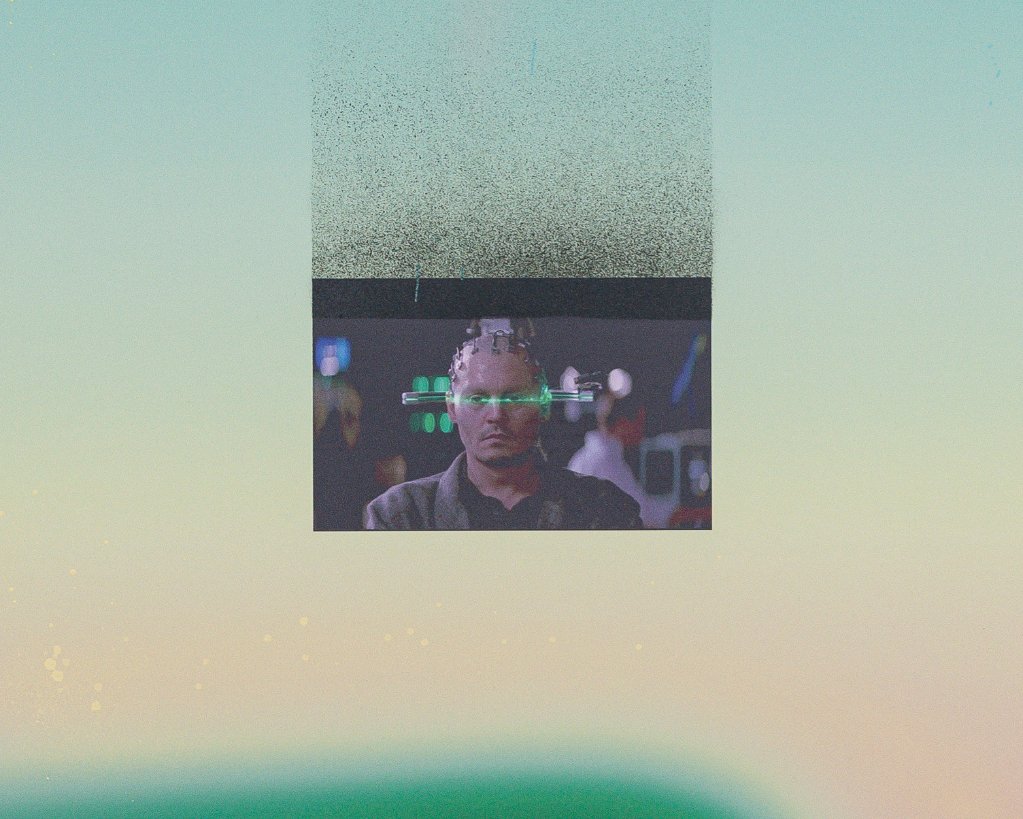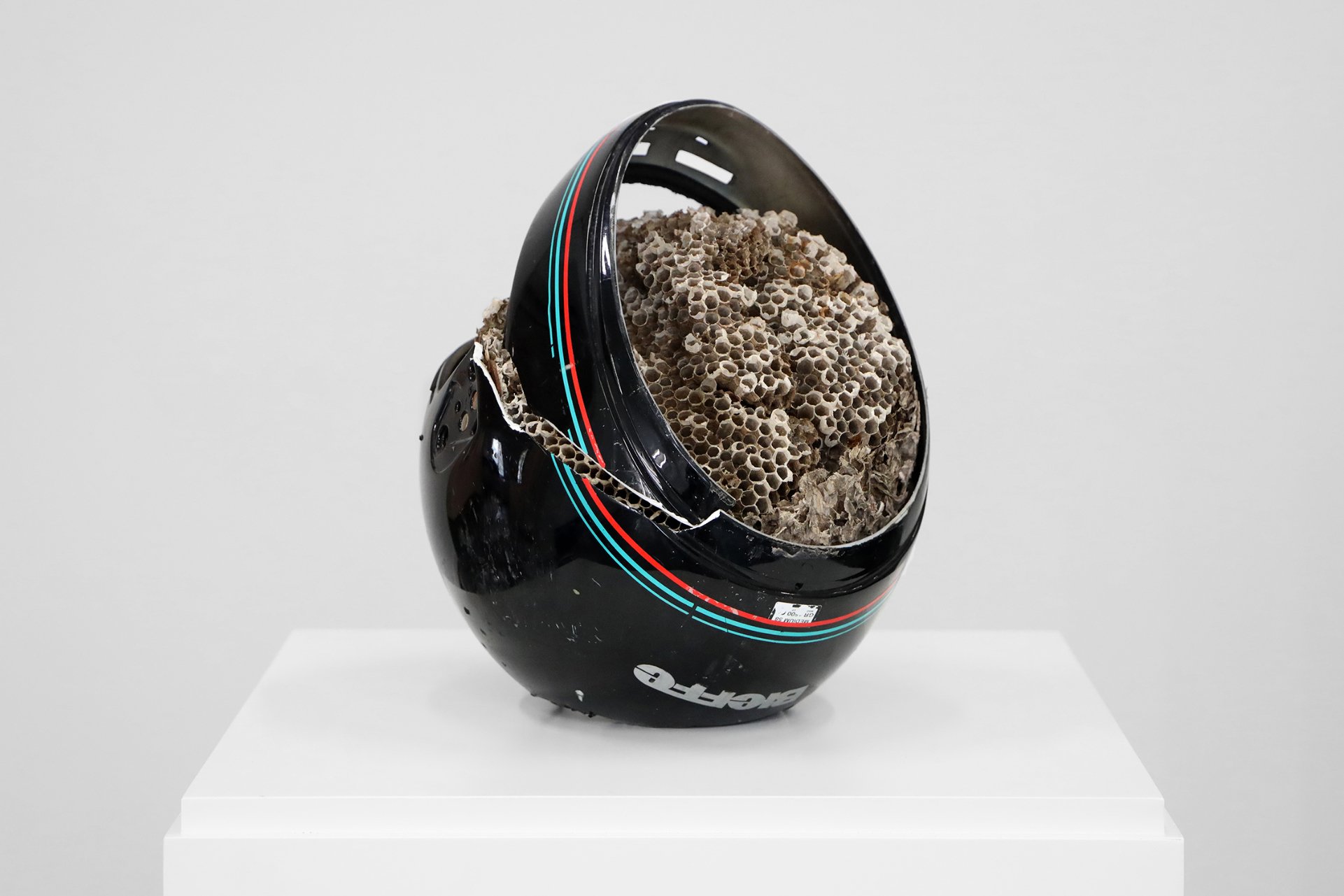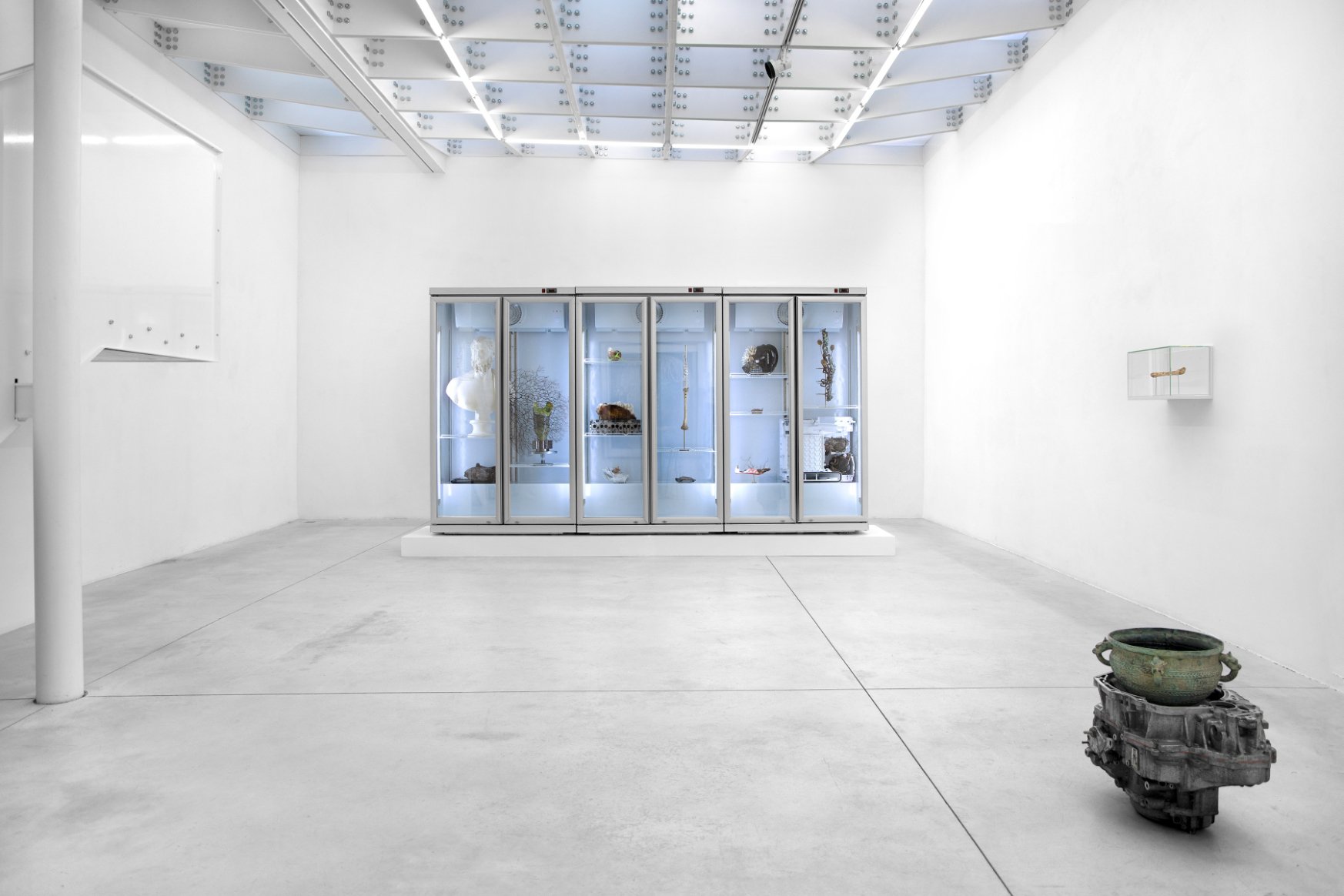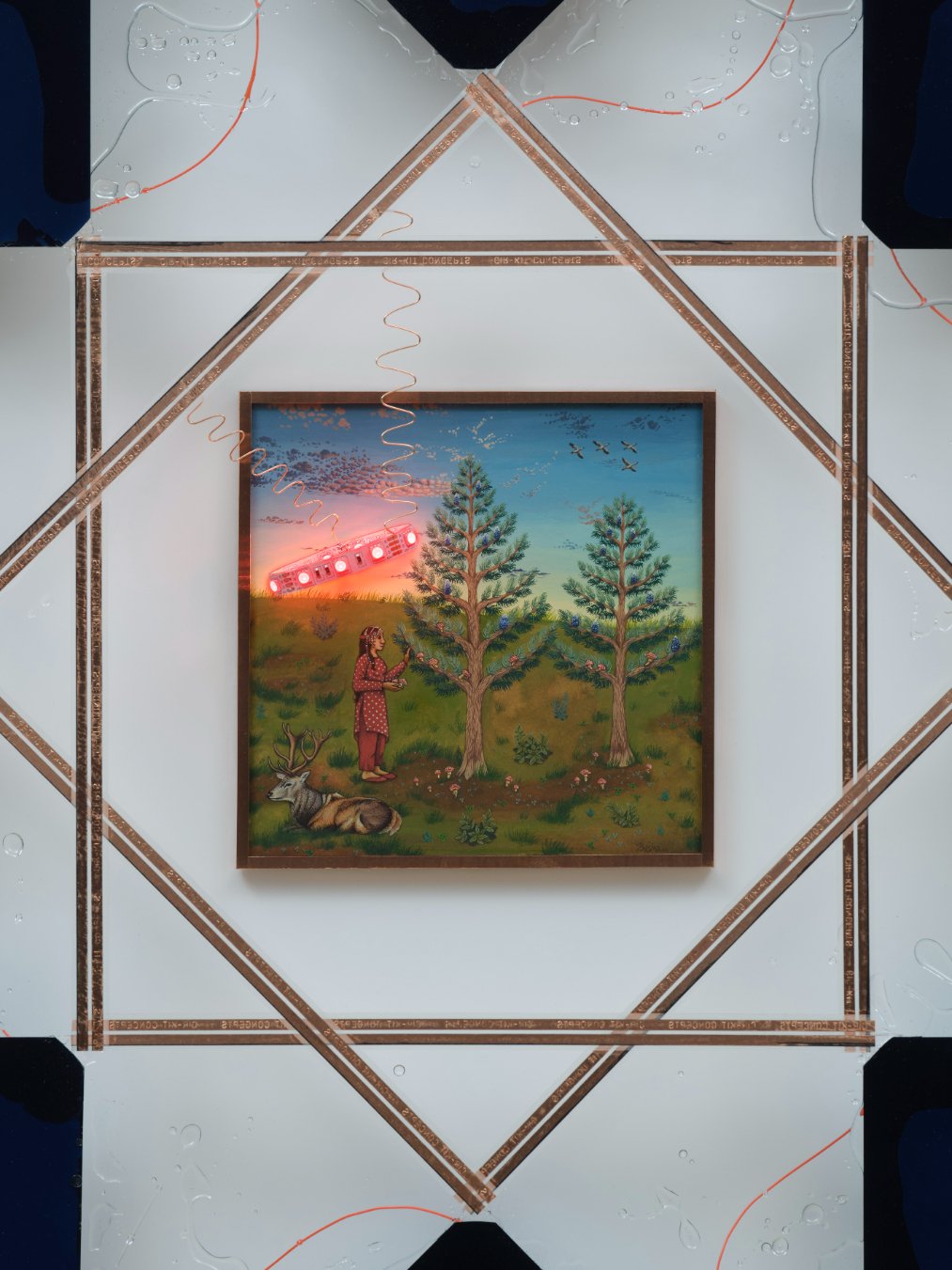Pictures Girls Make Inverts Archaic Norms Through Portraiture @ Blum & Poe in Los Angeles
“Pictures Girls Make”: Portraitures, Installation view, 2023, Blum & Poe, Los Angeles © The artists; Courtesy of the artists and Blum & Poe, Los Angeles/New York/Tokyo, Photo: Evan Walsh
Blum & Poe presents Pictures Girls Make: Portraitures, an exhibition bringing together over fifty artists from around the world, spanning the early nineteenth century until today. Curated by Alison M. Gingeras, this prodigious survey argues that this age-old mode of representation is an enduringly democratic, humanistic genre.
“Pictures girls make” is a quip attributed to Willem de Kooning who purportedly dismissed the inferior status of his wife Elaine’s portrait practice. Inverting the original dismissal into an affirmation, Pictures Girls Make is a rallying cry for this exhibition which examines how different forms of portraitures defy old aesthetic, social, and ideological norms.
Pictures Girls Make is on view through October 21 @ Blum & Poe, 2727 South La Cienega Boulevard, Los Angeles, California 90034
Park Nights Return @ Serpentine Galleries In London, Featuring Live Music, Performance, Dance, and Poetry
Serpentine was thrilled to announce it’s returned of Park Nights this August. Its experimental, interdisciplinary, live programme sited within the annual architectural commission, the 22nd Serpentine Pavilion designed by Lina Ghotmeh.
Bringing together multi-disciplinary artists, and featuring rave music, performance installations, poetry and dance, the exciting live programme invites audiences to engage, reflect, and connect. Park Nights runs from August to October, featuring The Living and the Dead Ensemble; Castiel Vitorino Brasileiro; Bambii and Christelle Oyiri.
Catch it’s final evening on October 8th, where Christelle Oyiri/CRYSTALLMESS will present a live iteration of her upcoming record with invited collaborators and musical guests.
The events will run through early October at Serpentine Galleries, Kensington Gardens, London.
This American Life is Freighted in Race, Gender, and Politics @ Morán Morán in Los Angeles
Martine Syms, I miss the kids, 2021. Image courtesy of the artist and Morán Morán.
This American Life is an exhibition at Morán Morán about stories, how they are conjured, how they are communicated, and how they relate to lived experience. These accounts are freighted in race, in gender, and in sexuality. It is also about the relationship between contemporary art and its reframing of the imagery of American culture. While negotiating the skewed protocols of media, the loops and networks of distribution, this constellation of artworks insist upon the intimacy and proliferation of artistic experimentation.
Dena Yago, Bets Hedged, 2023. Image courtesy of the artist and Morán Morán.
The artists in This American Life intervene, dissecting narratives and reassembling them to offer a new perspective. In the process, fresh truths are revealed and a deeper insight into our shared American experience emerges.
The American Life is on view through October 28 @ Morán Morán, 641 N. Western Avenue Los Angeles, CA 90004
Ryan Trecartin, Please Knock Before Going Outside (Flood Season), 2023. Image courtesy of the artist and Morán Morán.
Ai Weiwei Breeds High Culture With Lego to Rebirth Readymades @ neugerriemschneider in Berlin
know thyself, Ai Weiwei’s fifth solo exhibition with nerugerriemschneider, continues his extended engagement with imagery created from Lego bricks to reassess, de- and reconstruct or contextualize anew works from throughout art history and the contemporary media landscape. Using a traditionally playful, immediate, generationally and geographically ubiquitous medium to analytical, critical extents, Ai shapes a veritable survey of both the Western cultural canon and of his own artistic trajectory.
Throughout his body of work Ai has returned to Lego bricks time and again, laboriously harnessing pieces by the hundreds of thousands to interrogate the parameters of imagemaking and production, honing his use of the material and expanding its representational and theoretical capacities to shape facsimiles of well-known works of art and other popular media. Honoring Marcel Duchamp and his legacy of the readymade, Ai deploys the mass-produced objects for adaptations of preexisting motifs, translating and often modifying them within his own social and political contexts, the angular components mimicking the pixels that coalesce to become today’s digital, widely and infinitely distributed imagery.
know thyself is on view through March 30th, 2024, at neugerriemschneider, Christinenstrasse 18-19, 10119 Berlin.
Analia Saban Explores the Intersection of Humanity and Technology in Synthetic Self @ Sprüth Magers and Tanya Bonakdar Gallery in Los Angeles
Analia Saban, Flow Chart: Drawing a Hand, 2023. All images courtesy of the artist and Sprüth Magers.
text by Mia Milosevic
Analia Saban’s Synthetic Self ventures into the human instinct to quantify virtually everything. The exhibition—a unique two-part feature with different showings at Sprüth Magers and Tanya Bonakdar Gallery—encompasses nearly all aspects of technology's intersection with human civilization…from the heating of the universe to pornography. The mechanization of the world is intricately realized in her work, where minneal entities of the everyday are applied to the AI-entrenched craze of the present.
Upon entry to Sprüth Magers—the site of the first half of Saban’s exhibition–and my first encounter with her work, the contrast between black-and-white coloration seems unapproachable, sterile, even unnerving. The work is, at first glance, not captivating and evidently not meant to be—that’s not the point. As we explore the nuances of natural phenomena we are simultaneously led to blend in with it. We become embedded in the mechanics of life and come to find out that this is actually our perpetual resting state.
To the left of the entrance at Sprüth Magers are rows of tapestries, detailed and glistening with copper thread which consecutively form the same shape as the marble structure residing on the floor of each room in the exhibition—it’s a computer fan. Its intended purpose is explained by the name, but what it symbolically represents in Saban’s exhibition is the cooling of the planet and broader stratosphere. It serves to comment on what has actually become the center of our universe, and what has the power to fix it. This allegory to climate change is present throughout the entirety of the exhibition, using technology as an emblematic resource with which to further delve into the problematic nuances of society. The computer fan is also symbolic of what powers contemporary life. This specific sculpture is equal in power to the engine it depicts.
Saban seeks to replicate the encyclopedic age, invoking an omnipotent approach to nature. But there’s a lot of irony in this—she’ll never be able to define all of the variables. What characterizes this omnipotence to nature is the compulsive human tendency to quantify and define it. Saban’s work poses a multitude of questions, but seeks to answer none–this is the beauty of her work. What does it mean when a serious academic takes a selfie with a mouse filter? Saban’s work is filled with these kinds of satirical dichotomies. Her self-portrait of internet log-ins is another example of the individual identity we have inevitability entrenched in the technological realm; there’s an extreme absence of privacy, and invasive expectation to share.
Images of the quotidian are almost all wrapped in the grid overlay that is quintessential of photoshop. Upon closer inspection, these figurative panels are full of errors–extra body parts and augmented facial features. She even includes an AI-generated “deep fake” of her own face. We see the world through the lens it’s run by. Saban’s art informs everyday life in simple terms. Not one image is spared the obstruction of a technological interface—of AI’s recognizable touch. It’s interesting to see the interplay between human nature and the artificial; to see how human instinct folds into the context of the invented. Even though the human instinct Saban depicts is the urge to quantify, define, explain, understand, her work actually achieves the opposite.
Synthetic Self is reminiscent of an iPhone, with the exhibition at Sprüth Magers being the front of the phone, and the one at Tanya Bonakdar Gallery being the back. The front represents a more human aspect, pervaded mostly by our own instinctual habits. The back represents the consumption of energy; it’s the burnt out crevice of humanity and the promiscuities that are hidden in our private browser.
Upon entry to the Tanya Bonakdar Gallery, a series of computer circuits rendered in thick printer’s ink line the walls. Historical computer graphic cards are engraved with their countries of origin; this is where the natural and manmade come head-to-head. These variant computer parts highlight the global effort towards intelligent development. Embedded within each work is the irony of our reality in coexistence with worldwide industry—our rather insignificant role in the broader technological stratum becomes abundantly clear.
The very last portion of the exhibition is pornographic—incorporating one of the most provocative uses of the innovation that rules the world. Images of black-and-white penises harbor a small squarespace, all of them slightly obstructed by different forms of measurement or anatomical labeling. The involvement of measurement is at its most satirical in this context, where the urge to quantify and define appears all the more trivial. The finale of the exhibition reverberates its most intriguing purpose, which is to unveil the inner-workings of the most up-to-date status of human instinct.
Analia Saban, Cooling Rack (4 x 4), 2023.
Synthetic Self is on view through October 28 @ Sprüth Magers and Tanya Bonakdar Gallery
Diotima & Laura Facey Join Forces for Diotima's Spring/Summer 24 Collection
The recent collaboration between Laura Facey and the Diotima is an exquisite artistic partnership that draws inspiration from Facey's 2022 exhibition, "Laboratory of the Ticking Heart," at Ormsby Hall in Kingston, Jamaica. As such, Facey's captivating body of work for this collection had been conceived before the two artists had even crossed paths.
Diotima’s Founder and Creative Director Rachel Scott was profoundly moved by Facey's exhibition, which left a haunting imprint on her consciousness. It ignited a deep reflection on the historical and enduring legacy of slavery in the Caribbean.
A chalk drawing titled "Seed" (2022), a creation by Facey in the weeks leading up to her exhibition, was transformed into a cotton print. Diotima preserved the integrity of the original piece while loosely draping it around the body.
Furthermore, Facey contributed miniature versions of her wood-carved hearts, which the designer artfully incorporated into the project. These intricate hearts adorned the body, gracing the neck, abdomen, and even hanging delicately from the ear.
In a mesmerizing fusion of art and performance, Facey adorned herself with the transformed pieces and posed in front of the camera. This collaboration culminated in the creation of an exquisite corpse, a testament to their shared vision and artistic synergy.
Rose Wylie Captures Atemporal Resonances in CLOSE, not too close @ David Zwirner Los Angeles
Rose Wylie Spindle and Cover Girl, 2022 © Rose Wylie Photo by Jack Hems Courtesy the artist and David Zwirner
Rose Wylie’s CLOSE, not too close presents a group of canvases that evoke in the viewer a feeling of immediacy, each depicting Wylie’s observation of a particular moment that is atemporal yet also grounded in her everyday existence.
Wylie has become known for her uniquely recognizable, colorful, and exuberant compositions that at first glance appear aesthetically simplistic, not seeming to align with any discernible style or movement, but on closer inspection are revealed to be wittily observed and subtly sophisticated meditations on the nature of visual representation itself. The artist has long been interested in exploring perspectival and compositional strategies other than—and along with—traditional Renaissance perspective, frequently making numerous iterations of a given motif as a means of advancing her formal investigation. Working in both single- and multi-panel formats, she regularly juxtaposes apparently disparate imagery, creating visual rhymes and resonances that coalesce into a unified composition. As curator Tanja Boon aptly notes, Wylie’s “paintings exemplify the artist’s ability to absorb powerful impressions from her immediate surroundings. They also illustrate her broad knowledge of cultural production, spanning popular and cliche styles as well as underexamined and non-Western visual traditions.”
CLOSE, not too close is on view through October 14 @ David Zwirner, 612 North Western Avenue, Los Angeles
EJ Hauser Reclaims the Natural and Technological Aesthetics of Language in 'Song of Summer' @ Haverkampf Leistenschneider in Berlin
Most of us are so used to reading that we forget that each letter is a shape and each word is a composition. The type we read every day–in emails and books, on packaging and signs–has a significant aesthetic dimension. U.S. artist EJ Hauser has adopted graphic and typographic strategies for their philosophical purposes and works, revealing a new view of what we no longer see in everyday life among all the texts. EJ Hauser’s quasi-abstract, fabric-like paintings are composed of layers of pixels, text fragments, and chimerical figures that refer to networks both in nature and the plant world, as well as to digital systems and interconnections in our human communication world. For them, letters form a sculptural framework, a compositional structure that sometimes dissolves into pure text images, sometimes leads to text in combination with images, or sometimes is buried under successive layers of paint. Some are very explicit, others require a closer look to find the spine and curves of different letters jumbled together to dissolve the boundary between word and image, mixed with chimerical figures and totemic symbols representing the interconnectedness of life on earth. EJ Hauser is interested in the Wood Wide Web, the complex subterranean web on the planet. Plant communication takes place via the mycelium, a network of microscopic fungi beneath the forest floor, through which information is exchanged. This is not unlike the way we are connected today through our cell phones, social media, and the “invisible” Internet.
Song of Summer is on view through October 14th at Haverkampf Leistenschneider, Mommsenstraße 67, 10629 Berlin.
Read An Interview Between Artist Daniel Arsham and Warhol Museum Director Patrick Moore →
Click here to read.
The Missing Mountain Oozes and Shines With Choreography By Bobbi Jene Smith & Or Schraiber @ LA Dance Project
Photographs by Josh A. Rose for L.A. Dance Project, 2023
Bobbi Jene Smith and Or Schraiber’s The Missing Mountain hits you first with the scent of foggy mist and then with the crimson sea of wall-to-wall carpet. It’s a one-two punch that has you drunk in its ambience before you’ve even found a place to sit. Two of the dancers are seated at a dining table, another on a couch, one stands by a ladder stage right and another upstage next to a piano carrying a large bouquet of gladioli that fully obscure her face. Hers is the first step. It’s small and fast, bringing her one foot closer to the audience. It will be nearly a minute before she takes another, although the music is woolly and dissonant, making it difficult to track time. Her movements slowly accumulate at a pace that feels nebulous while she expands into the space. It’s a spellbinding opening solo that winds us into a hypnogogic state before it transitions into a romantic pas de deux with a sinewy texture of movement, which suggests that the gravitational pull and atmospheric pressure has shifted in the room.
This is a surreal space occupied by six distinct, archetypal characters who populate our collective unconscious with the specters of an undocumented halcyon era. Daphne Fernberger is a lithesome vessel of femininity whose clarity of movement is as crisp and smooth as her rose-colored silk midi slip. Hope Spears repels off walls, defying gravity one moment and grounding herself consummately the next like an arachnid. Courtney Conovan has limbs as long and fine as her flaxen locks and she is in full control from core to extremity with every small, isolated articulation and every sweeping, full-body conveyance. Lorrin Brubaker is the most understated. He commands without drawing attention to anything in particular and yet he is magnetic in his cool subdue. Jeremy Coachman is a powerhouse chameleon. He is supple and romantic, fierce and formidable, and when you least expect it, he’ll throw in a light, coy wiggle of the ass. A spotlight hits the downstage right corner illuminating an antique standup microphone. Shu Kinouchi in a tuxedo with coattails and thick, red socks reads the weather report in English, punctuating it with mysterious cries in Japanese. He is the master of ceremonies. Equally indignant as he is mischievous, he takes risks that allude to an internal metronomic gyroscope, which prevents him from ever losing balance or time.
The work is filled with easter eggs that materialize in the form of props, backdrops, and humorous gestures. The dancers employ multiple dialects of movement simultaneously and with perfect fluency, each of them equally alien. However, they all keep their traditional balletic prowess handy in an invisible pocket. Our coat-tailed emcee withdraws a red button from his actual pocket, presses it and the entire stage is bathed in red light. Our medley of atonal dissonance and variations on Bach is abruptly interrupted by Tom Waits’s “Lie to Me” and we are peaking with dinner plates for pupils. Do I still like Tom Waits? I do right now. Just when we think this scene couldn’t be more unpredictable, Kinouchi whips up a series of fouettés à la seconde, and for some reason, I’m not rolling my eyes at this trope of virtuosity. He finishes with a quadruple pirouette in coupé, or maybe more, it was enough to lose count, and I’m as thrown by this choreographic choice as I am by my embarrassing, undeniable swoon.
The stage goes quiet and a spotlight shines centerstage. A man and woman face one another seated in chairs. He tells her what to do and she obeys. It’s sadomasochistic full stop. But no one is touching, no one is playing, and no one is coming. They are working.
Each of these six dancers brings something unique to the stage and yet when they meet at the dinner table it is as though they all belong to one body. Their harmony suggests they have belonged to one another for quite some time now. Their movements ooze and shine like the friction burns they bear from dancing barefoot on the carpet below. In that moment, we understand that the surreality of this hour we’ve spent together, watching a piece that harkens a Lynchean dreamscape, Sartre’s No Exit, a scene from Pina Bausch’s Cafe Müller, another from Claire Denis’s Beau Travail, and a few others that we can’t yet place is actually none of those disparate references. It is an uncanny amalgam of similar feelings that are culled to the surface to tickle your scalp with an elusive facility that leaves you wondering why you felt compelled to scratch. And just when we start to feel like we know this space, this wondrous missing mountain, we are pulled back into a standard time signature and the ground below us once again applies its Earthly gravitational pull. It’s the metaphysics of last call. it’s the house lights killing your melatonin. It’s your Uber arriving in five minutes.
The Missing Mountain is on view for 3 more nights September 28, 29 & 30 @ 8pm. Reserve your tickets here.
Somerset House Studios presents Sonya Dyer’s first major London solo show: Three Parent Child
Somerset House Studios resident Sonya Dyer undertakes a new commission to be presented throughout the River Rooms from 29th September, marking the artist's first solo exhibition in London.
The installation, Three Parent Child, will be the final stage of Dyer’s Andromeda trilogy, as part of her ongoing project Hailing Frequencies Open. HFO reimagines the history and radical potential of human space travel, exploring the intersections between scientific enquiry and science fiction. Sonya weaves influences including Star Trek, the legacy of HeLa cells, and mythology, to engage with ongoing conversations around monumentalism, memory and the role of speculation. Three Parent Child features two works: Action>Potential, and Lucy.
The title Three Parent Child takes its name from the recent scientific development of Mitochondrial replacement therapy (MRT), a new technique that incorporates DNA from three people to create a child, which mirrors Dyer’s adherence to trilogies throughout her practice. Whilst in residence at the Studios, Sonya Dyer’s research has been supported as part of the King’s College London x Somerset House Studios Programme.
’Three Part Child’ will be on view through November 12th at Somerset House Studios, Somerset House, Strand, London
‘Genetic Automata’ By Larry Achiampong and David Blandy @ Wellcome Collection In London
Larry Achiampong & David Blandy
GOD MODE 2023
This June, Welcome Collection will present Genetic Automata, a major exhibition of collaborative video works by artists Larry Achiampong and David Blandy, exploring race and identity in an age of avatars, videogames and ancestry DNA.
The exhibition will present a series of four films exploring scientific racism – the false belief that there are innate differences and abilities between races. It will reflect on where deeply ingrained ideas about race come from and the role that science has played in shaping these perceptions. The series highlights how scientific racism is reproduced in contemporary society, from education to healthcare, science, politics and more.
Genetic Automata at Wellcome Collection will allow visitors for the first time to view the four video installations together, unpacking the relationship between science and race injustice through the artists ’lens. It will premiere the latest work of the series _GOD_MODE_ (2023), a co-commission between Wellcome Collection, Black Cultural Archives (BCA), and Wellcome Connecting Science.
Each film employs a spoken word soundtrack and includes imagery drawn from contemporary video games, in particular those with dystopian sci-fi plots that feature the misuse of genetic material. The series begins with A Terrible Fiction (2019), which addresses the complex history of classification, categorization and segregation. It references the history of the theory of evolution and highlights the figure of John Edmonstone, a formerly enslaved Black man living in Edinburgh who taught Charles Darwin taxidermy – but whose contribution to science remains largely unacknowledged.
‘Genetic Automata’ is on view through February 11th at Welcome Collection, 183 Euston Road, London
Berlin Atonal Combines Ritual, Installation, and Performance in an Exploration of Ephemerality
Florentina Holzinger
Etúde for Church (2023)
Image credit: Mayra Wallraff
Berlin Atonal immerses audiences in constant states of change and fluctuating intensity, where seemingly static artworks defy any rigidity. In Florentina Holzinger’s Études, stunt effects meet the world of music to create scores for bodies as instruments. At Atonal, the artist presents Étude For Church, a performance in which a two-ton iron bell is asked to ‘call in the canonical hours, summon tempests and awake the sleeping soul’.
Bridget Polk
Reclaimed Damages (2023)
Image credit: Frankie Casillo
Bridget Polk will be present throughout the exhibition, reconfiguring Reclaimed Damages by assembling precarious sculptural forms over time, in dialogue with the audience and other works in the exhibition that manifest in ephemeral reflections on the past, present, and personal.
Mire Lee
Installation view
Image Credit: Frankie Casillo
Mire Lee has created a hanging fabric installation, where worn-out, torn, and ripped fabrics are dipped in viscous liquid clay. Over the course of its exhibition, the clay absorbed by the "skin" of the work will be slowly thinned down by water. It promises a misty viscerality as a space to question human fantasies of technologies that contradict the realities of subjects that decay and deform through time.
Cyprien Gaillard
Absorbent Figure (2023)
Image courtesy of artist
Cyprien Gaillard’s "Absorbent Figure" is based on an existing object found by the artist at the Kijk-Kubus-museum house in Rotterdam. While the meaning of the statue is widely debated, the design is similar to the ‘weeping Buddha,’ and one interpretation is that those who touch it will feel a mysterious alleviation of their sorrows. With its new industrial skin, the figure sits outside Kraftwerk amidst those gathering, taking part in the collective experiences of music and nightlife.
Atonal features visual art and concert nights intermittently through 9/17 at Köpenicker Str. 70, 10179 Berlin.
KOZABURO Spring/Summer 2024 at NYFW
Mythical creatures serve as a universal source of aesthetic and spiritual inspiration, evident throughout the KOZABURO Spring Summer 2024 collection. This essence finds expression in garment construction, graphic patterns, and intricate embellishments. Curved lines evoke the undulating contours of sand dunes, while textures and fluidity capture the essence of dragons and serpents.
This collection transcends the constraints of historical clothing norms, embracing 3D-cut pants and styles that defy convention. The Chinese zodiac and the Uroboros symbol, representing rebirth and the future, permeate the collection, both structurally and in attitude.
Akasaka's reverence for ancient aesthetics extends to contemporary fabric choices. SS2024 incorporates a capsule collection produced in collaboration with cycora® by AmbercycleTM—a newly regenerated material derived from disassembled end-of-life clothing and textiles. This circular approach aligns seamlessly with the traditional Japanese weaving technique of Sakiori, a hallmark of KOZABURO, where used strips of fabric are woven into new textile creations.
The runway presentation features a soft serpent sculpture with scales crafted from upcycled denim, symbolizing the eternal cycle. Two drummers, uniting at the point of infinity, symbolize a universal language of communication, ceremony, and spirituality, recalling a past Tokyo show with Taiko drummers.
KOZABURO's Spring Summer 2024 collection is a harmonious mosaic of inspiration, reflecting a decade of creative community and cultural exploration in the United States, a testament to Akasaka's artistic journey.
Order Autre #17 Fall/Winter 2023: The Instinct Issue →
Click here to order Autre #17 Fall/Winter 2023: The Instinct Issue
Augustas Serapinas Excavates Nostalgia from Discarded Houses in Roof from Rūdninkai @ Klosterruine Berlin
For his exhibition Roof from Rūdninkai, Augustas Serapinas produces a new expansive sculpture that takes its point of departure in a deserted house in rural Lithuania. The artist continues exploring his interest in questions of how space is constituted, how it reflects lived realities, and what memories are inscribed in it. Serapinas often finds the material for his sculptural interventions through online classified ads, where entire houses are given away on the condition that all materials be removed from the owners’ property. From these discarded materials he reconstructs sometimes recognizable objects such as a roof or a wall, sometimes more abstract artworks that open into a dialogue with the history of minimal art. In contrast to the use of anonymous industrial materials, Serapinas’s wooden elements and shingles bear clear markers of history, place, and use.
Roof from Rūdninkai is on view through September 17th at Klosterruine Berlin, Klosterstraße 73a, 10179 Berlin.
Hidden Gems by Kate Owen & Cathleen Peters
LEFT Eckhaus Latta nylon and wool sweater; Suss Knits alpaca and nylon dress; Araks polyamide and elastane panty; Cartier High Jewelry gold, emerald, rock crystal, onyx and diamond necklace.
RIGHT BITE responsible viscose and recycled polyester dress; Cartier Panthère de Cartier gold watch
photography by Kate Owen
styling by Cathleen Peters
modeling by Whizdom Williams & Zoe Louis
hair by Rei Kawauchi
makeup by Yui Sakamoto
manicure by Stephanie Hernandez
photography assistance by Toby Sprague
styling assitance by Sydney Sullivan
LEFT PRISCAVera polyester shirt
RIGHT Anne Ammarell wool sweater; Araks polyamide and elastane t-shirt
PRISCAVera polyester shirt; Cartier Juste un Clou gold and diamond bracelet
Jack Peters polyester and cotton shirt; Cartier Juste un clou gold tie pin and gold and diamond tie pin
Eckhaus Latta polyester shirt; Araks cotton bralette and panty; Cartier Agrafe gold and diamond earrings
LEFT FFORME viscose rib turtleneck; Cartier Agrafe gold and diamond bracelet
RIGHT Helmut Lang Cotton and polyester shirt; PRISCAVera leather bra and polyester skirt
PRISCAVera viscose dress; Cartier Juste un Clou gold bracelet
Aubrey Levinthal Explores the Absurdity of Existence in Tourist @ M+B Gallery in Los Angeles
Aubrey Levinthal, Airport, 2022. Courtesy of the Artist and M+B, Los Angeles.
M+B presents Aubrey Levinthal’s Tourist, an escapade into the accumulated mundane which breeds an entire life. Levinthal’s paintings take the strangeness of every-day encounters as their muse, cataloging the soft melancholy of a life in transit with a diaristic sense of levity.
At once both insider and outsider, Levinthal’s figures arrest the slippery interplay between the lonely voyeurism of the tourist and the studied absurdity of feeling like a stranger in one’s own home, collapsing any strict distinction between the two and exposing the mutable oddity of being at once both perceived and perceptive of others in public space.
In an almost paradoxical fashion, Levinthal employs restraint as a tool for arresting rich complexity. She deliberately whittles away at charged dynamism and linear storytelling until only the formal structure of the scene itself remains, forcing the space of each painting to turn in on itself with a sense of contemplative surprise. In the absence of heavy-handed action or emotion, the viewer is left to sit with the charming discomfort of a pure exchange of outward gazes, passing back and forth between both Levinthal’s figures and the viewer themself in a quietly kaleidoscopic ricochet of glances.
Tourist is on view through October 7 @ M+B, 612 N Almont Drive, Los Angeles
The Traditional Markers of Success Are Questioned in Failed Transcendance @ Max Goelitz in Munich
On the occasion of Various Others and Open Art 2023, artists Nicolás Lamas (with gallery Messeen De Clercq, Brussels) and Jeremy Shaw join max goelitz’s group exhibition, failed transcendence, together with Haroon Mirza, Helga Dóróthea Fannon and Niko Abramidis &NE. The central theme of the exhibition is author Tom McCarthy’s concept of failed transcendence. The group show focuses on the notion of failure and the questioning of traditional ideas of authenticity while exploring the limits and shortcomings of achieving higher states of consciousness across different time axes. The exploration of altered states in Shaw’s works, Lamas’s investigation of naturalness and artificiality, Mirza’s and Fannon’s merging of technology and spirituality, and Abramidis &NE’s blurring of the physical and virtual, create a rich and multidimensional dialogue revealing different layers of truth and reality.
Failed Transcendence is on view through October 21st at max goelitz, Maximilianstraße 35, Eingang, Herzog-Rudolf-Straße, 80539 Munich


